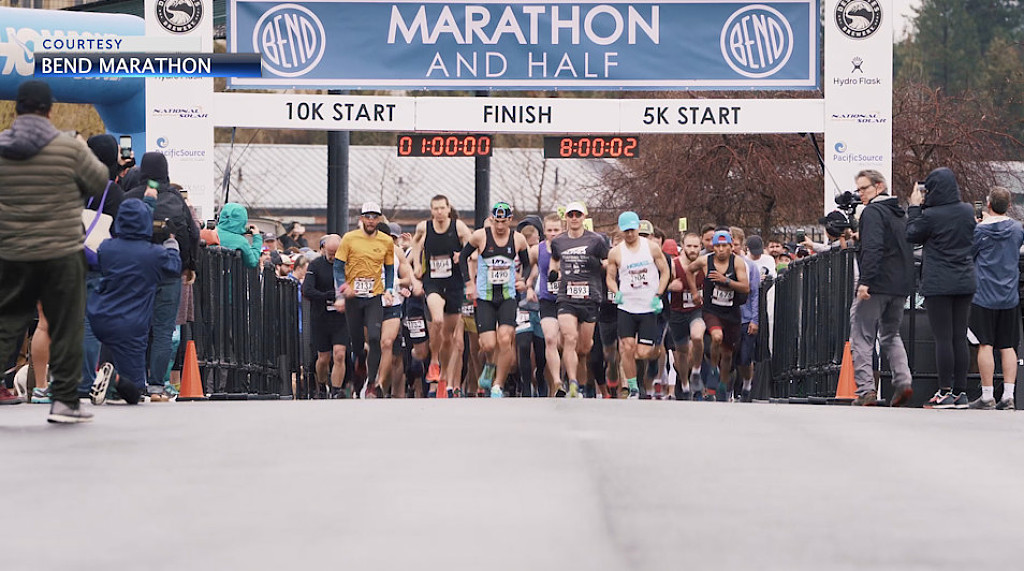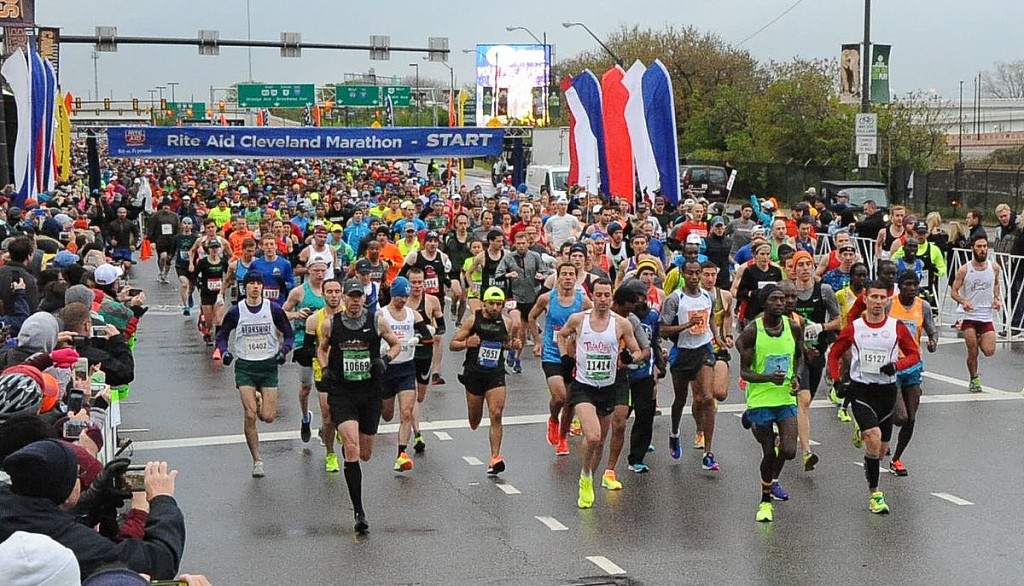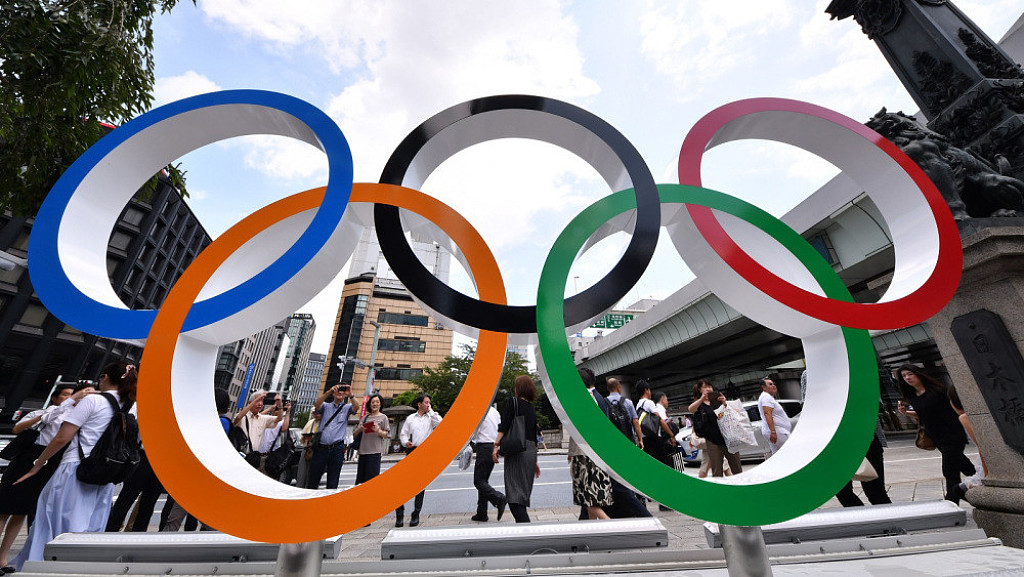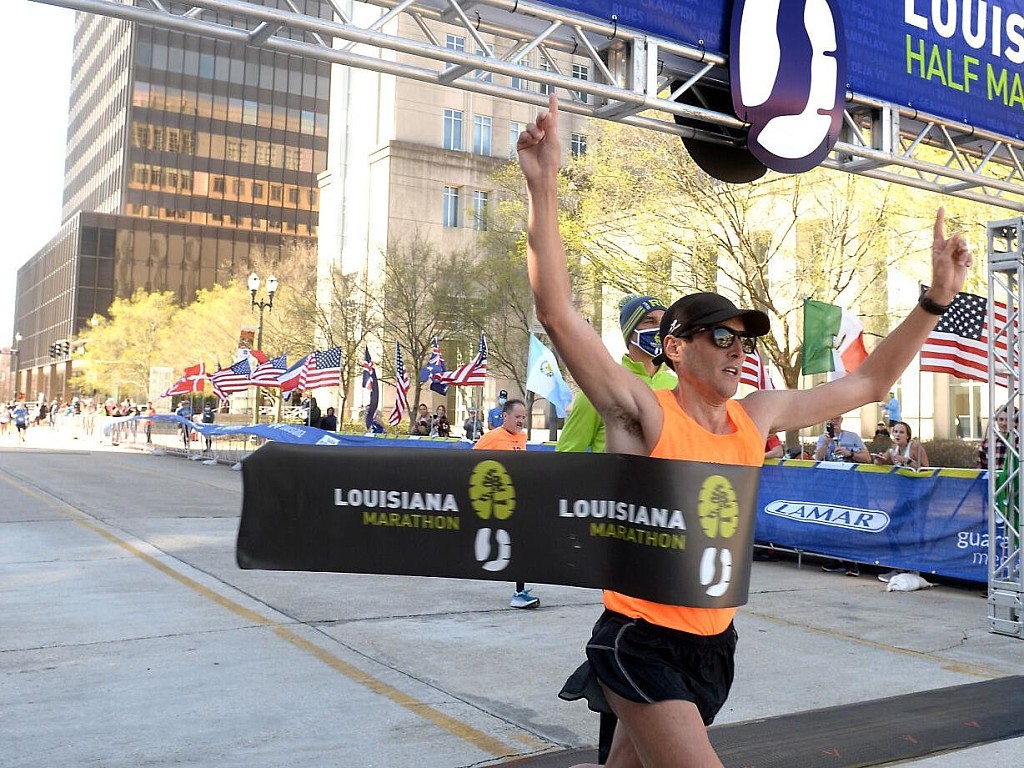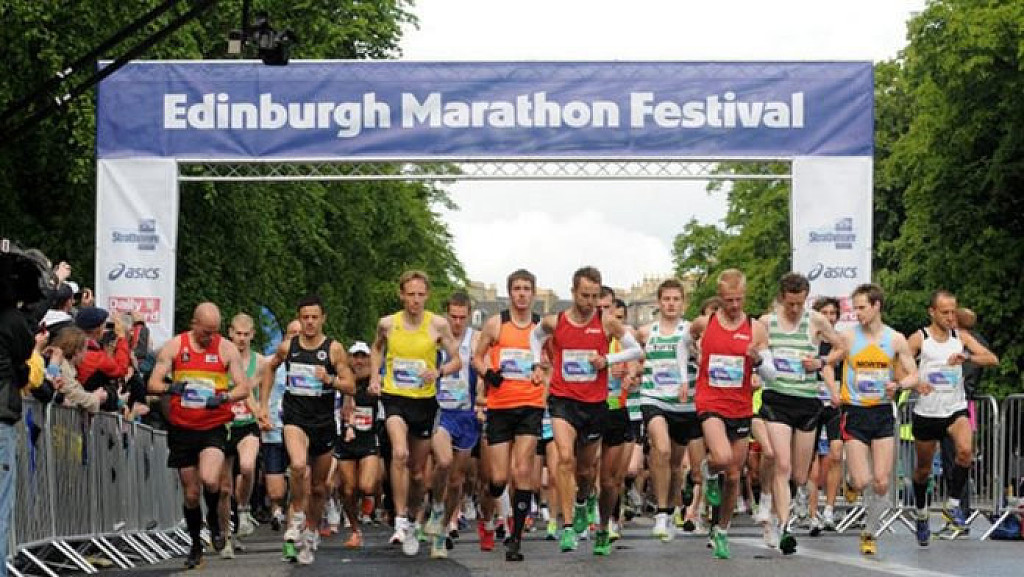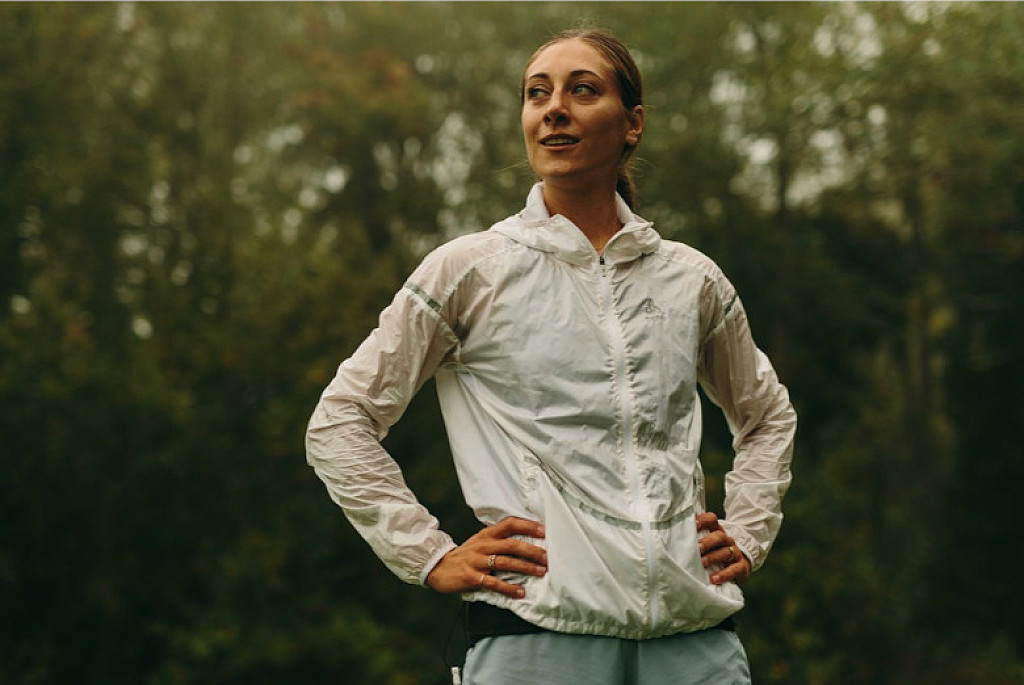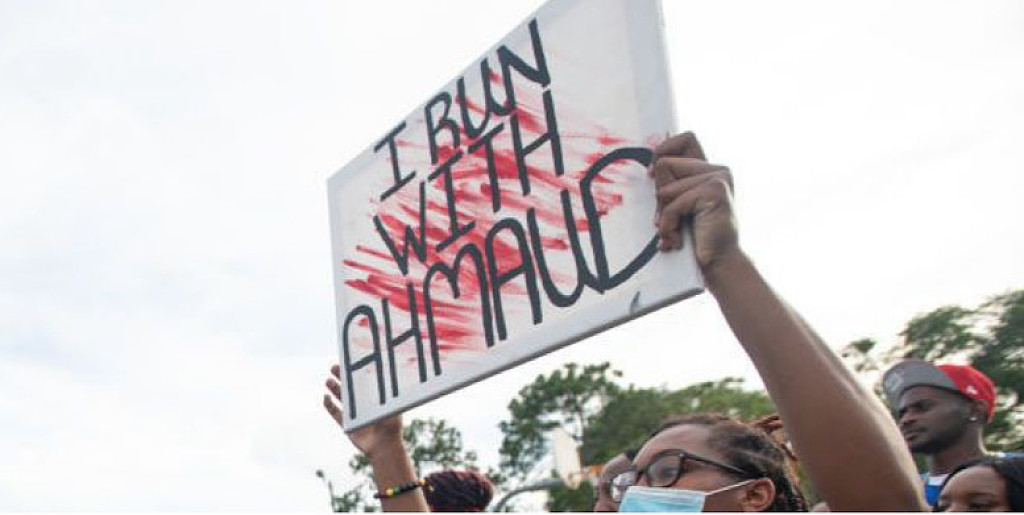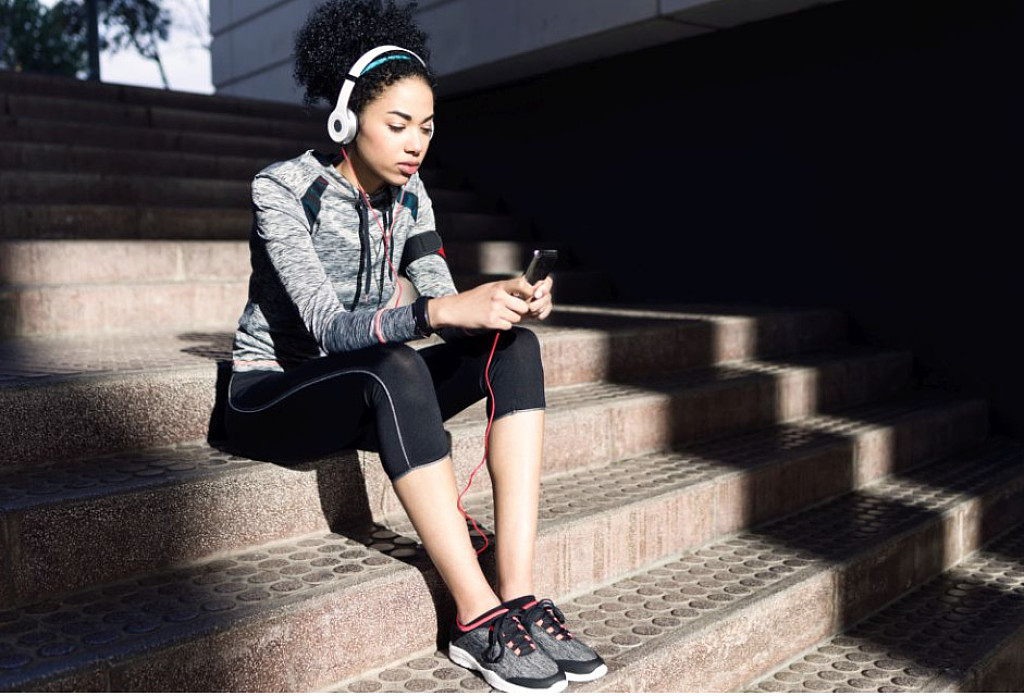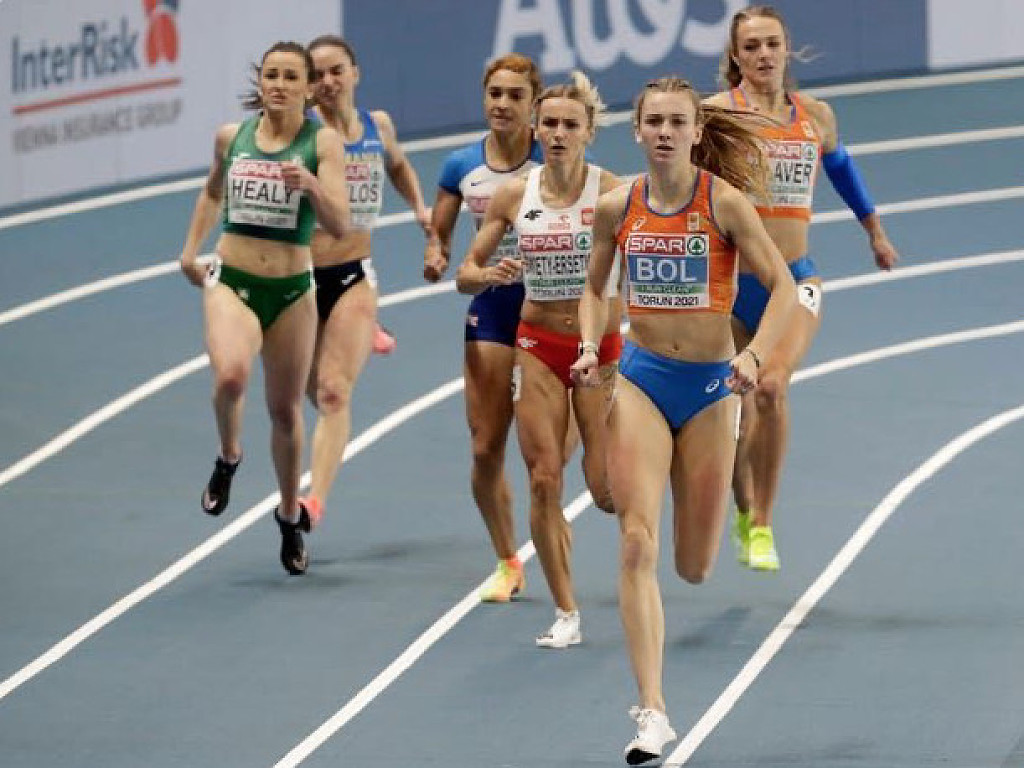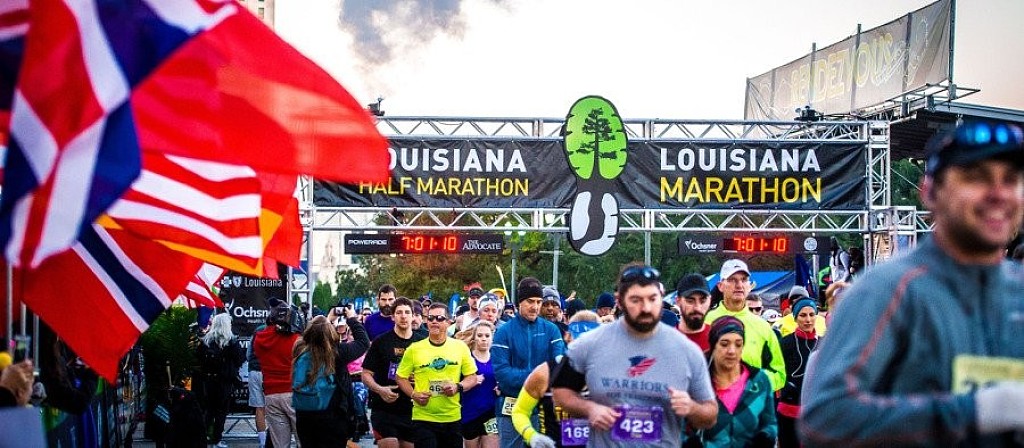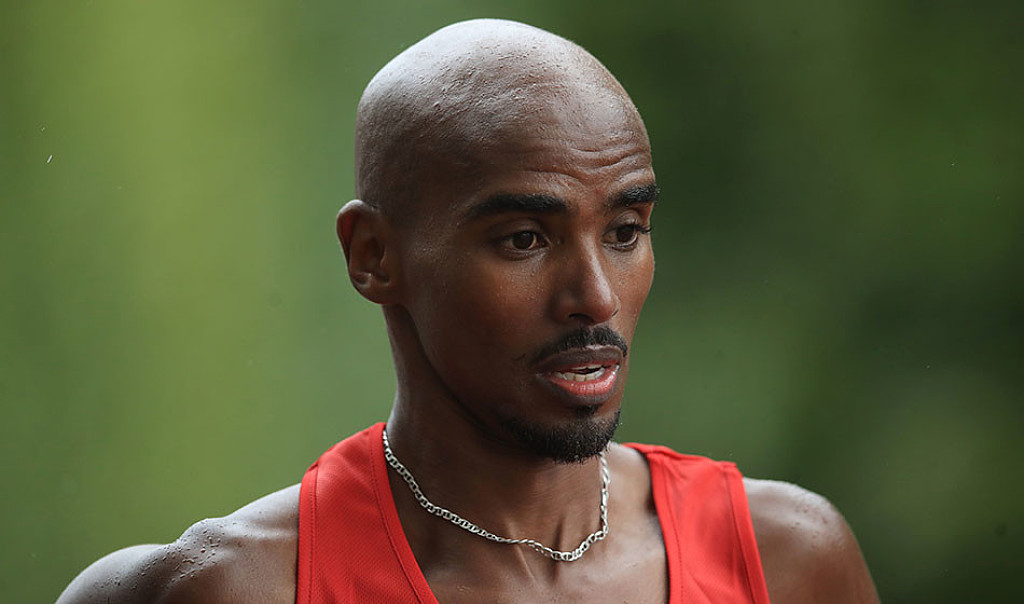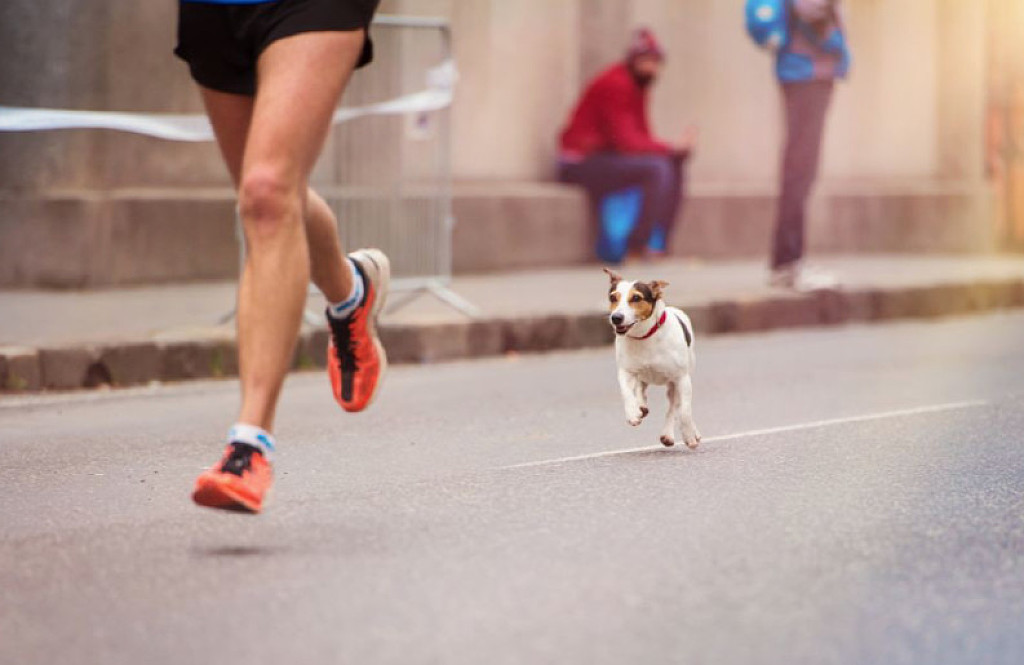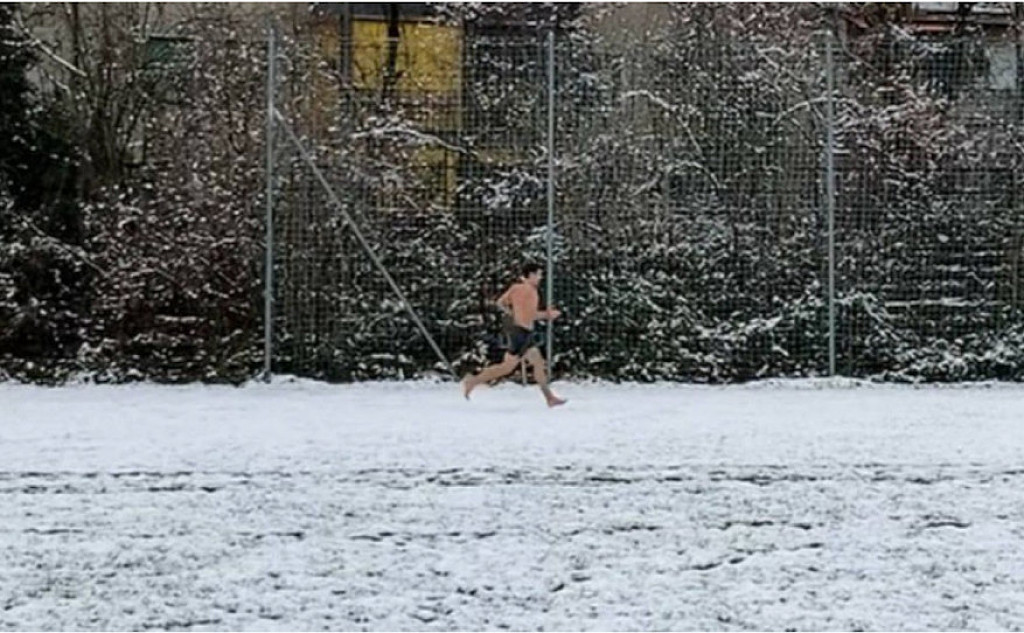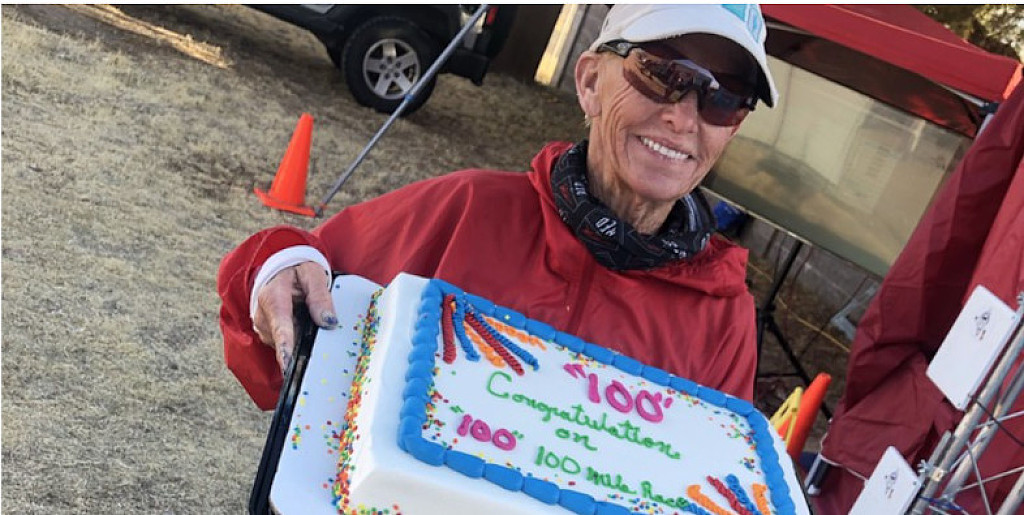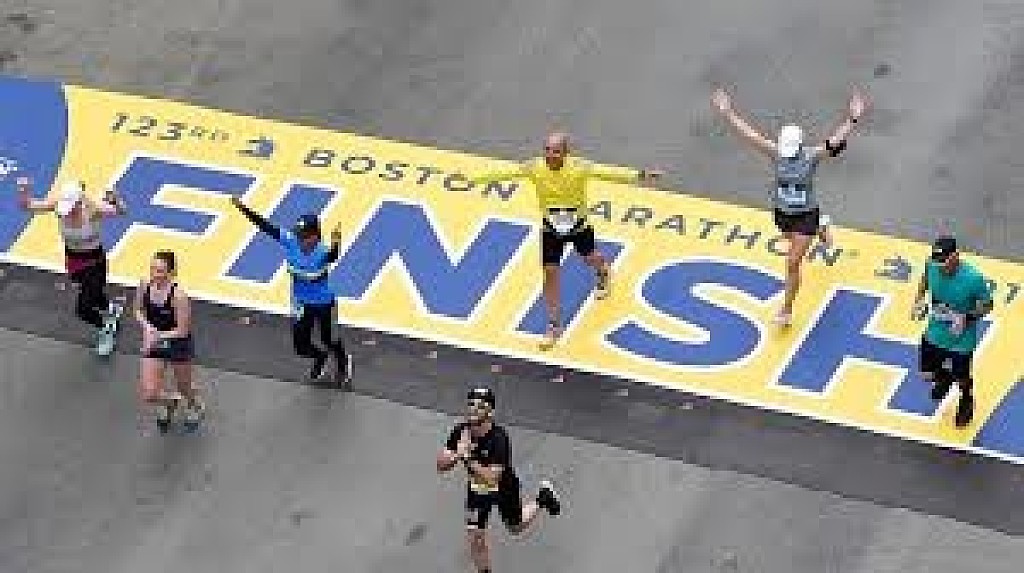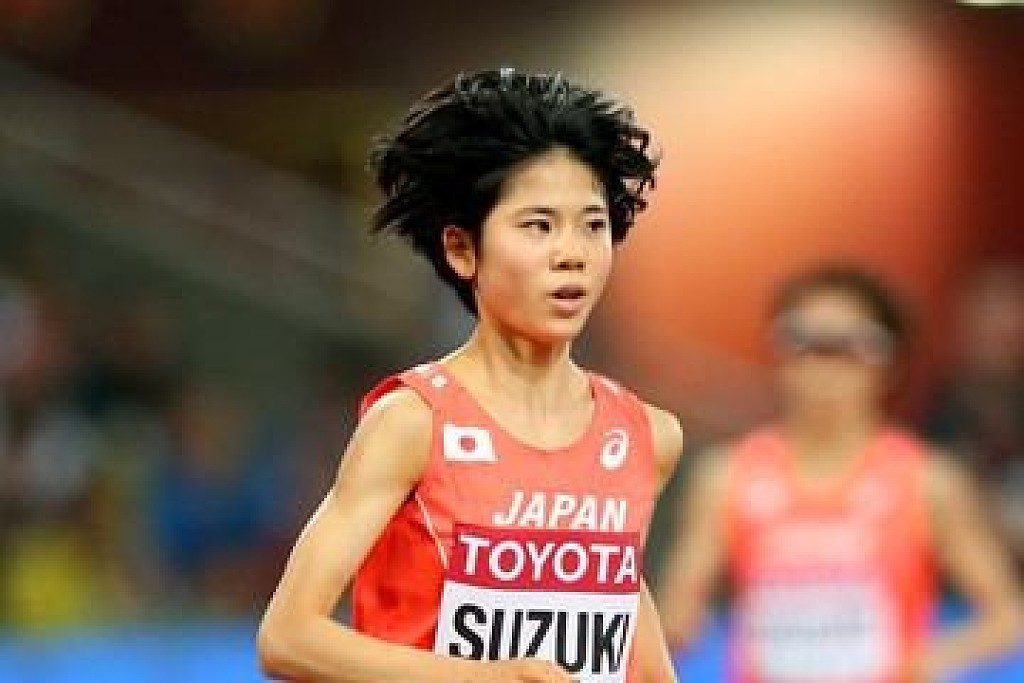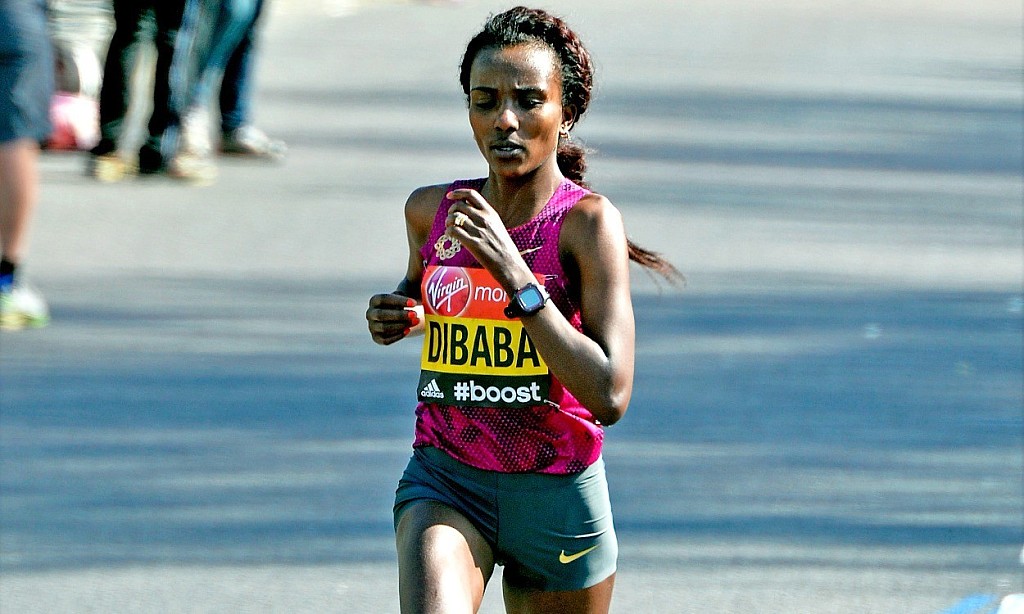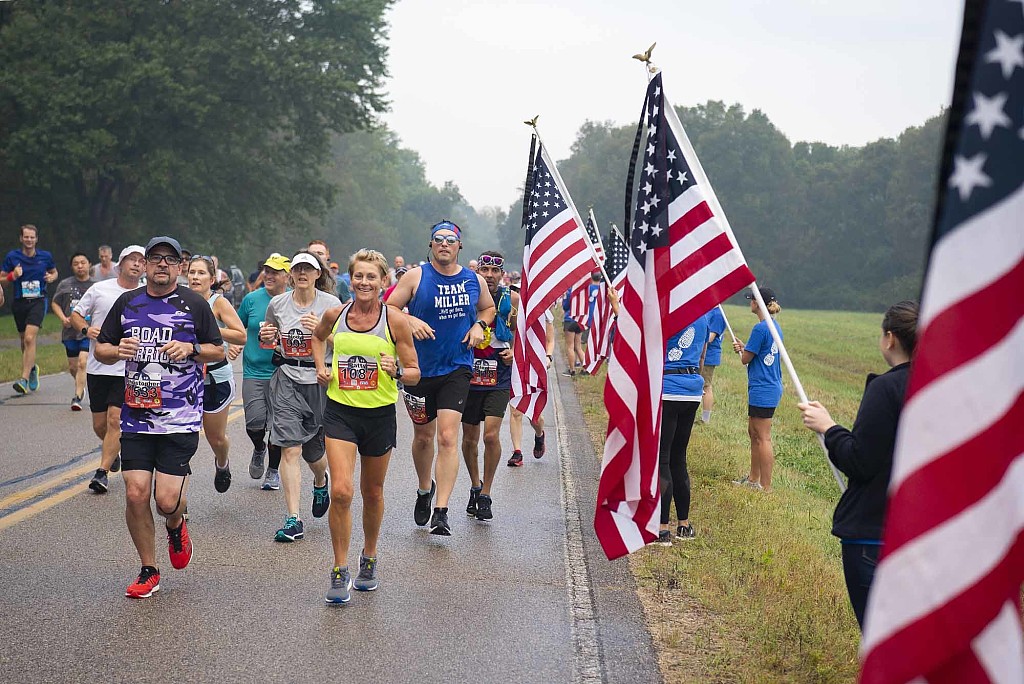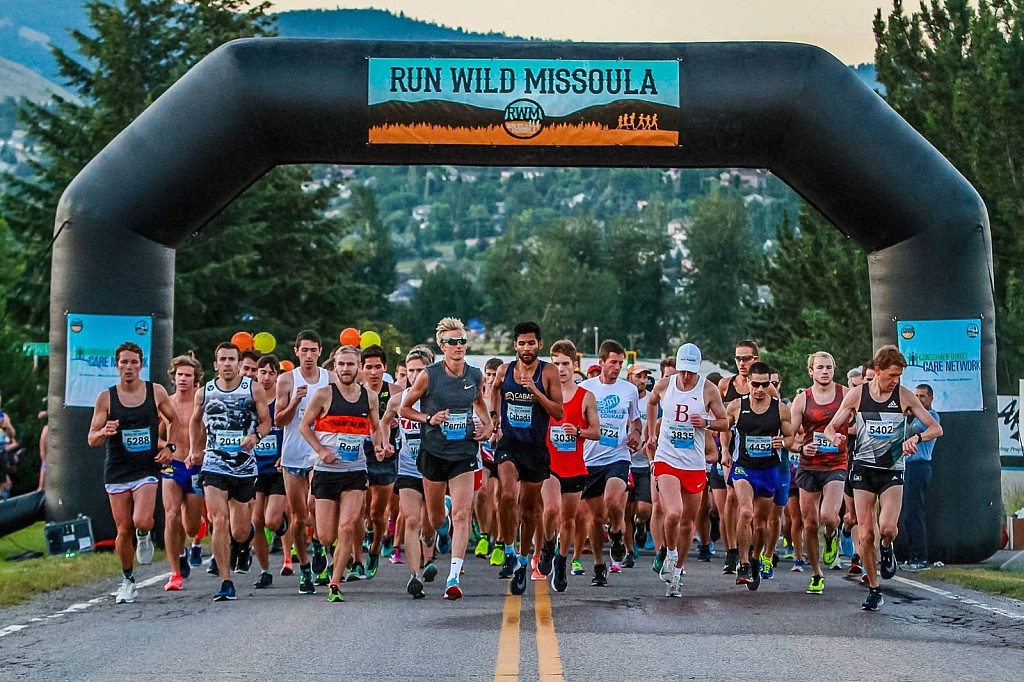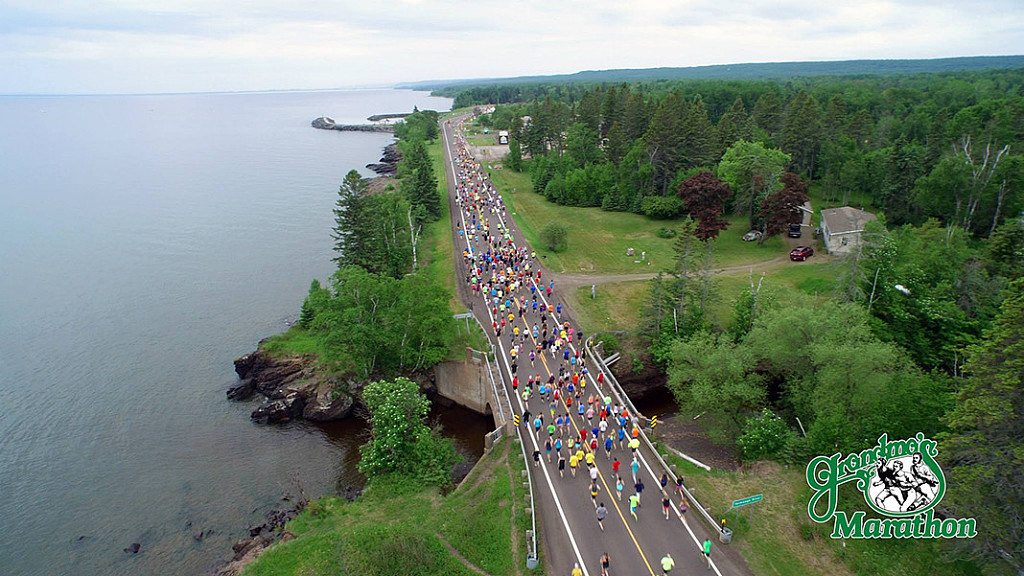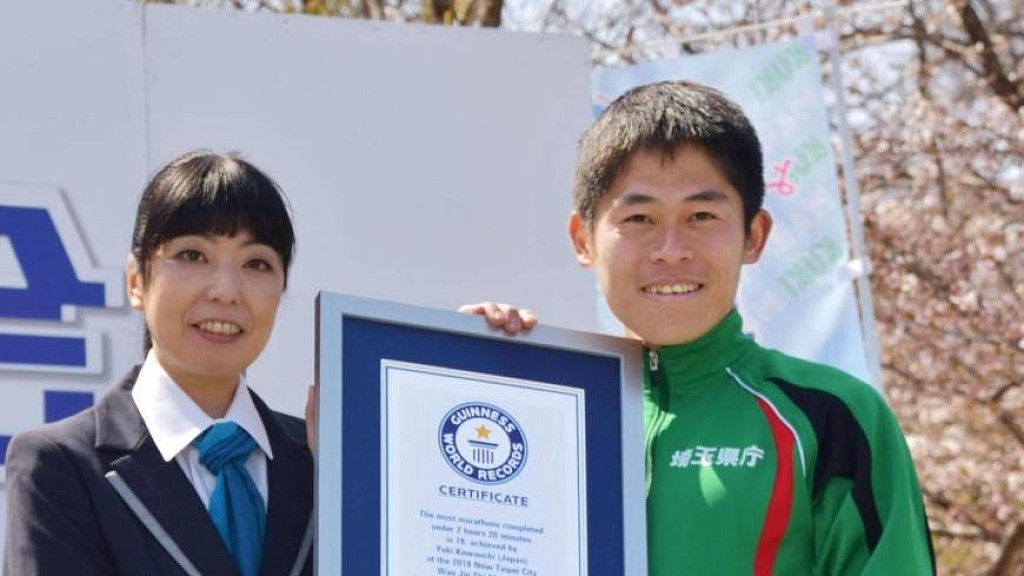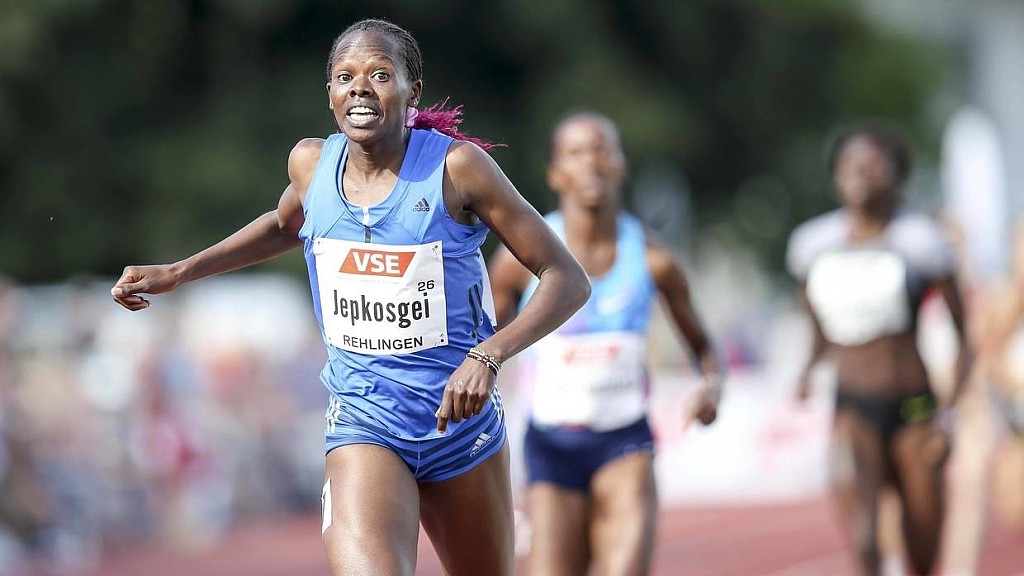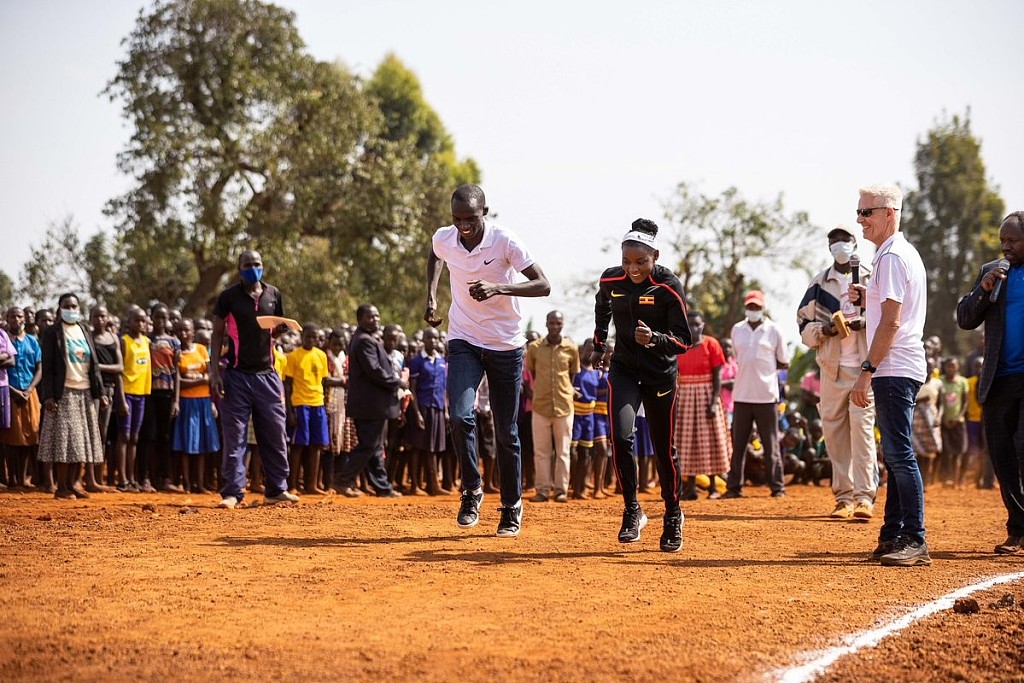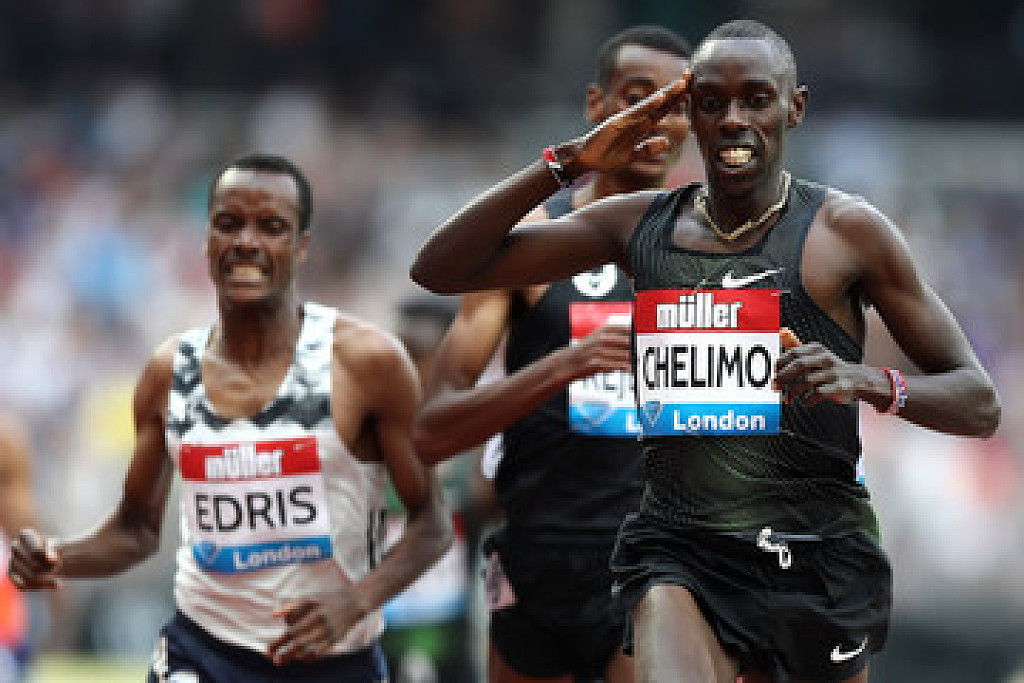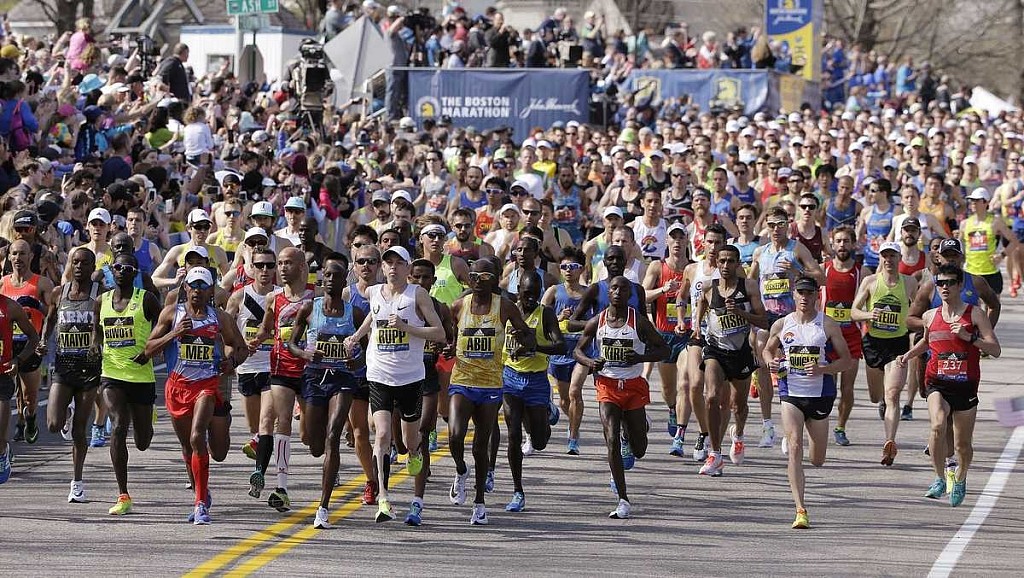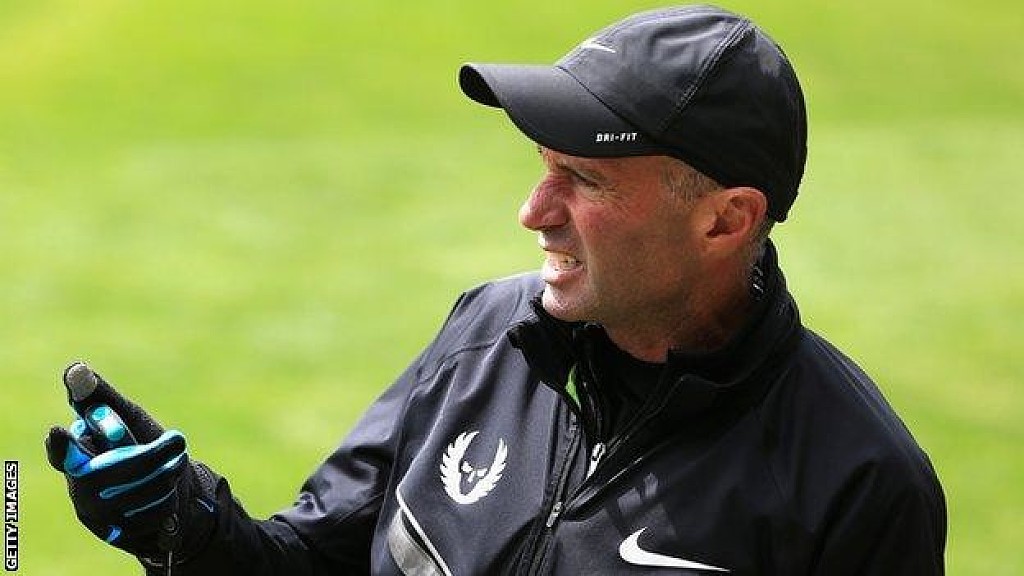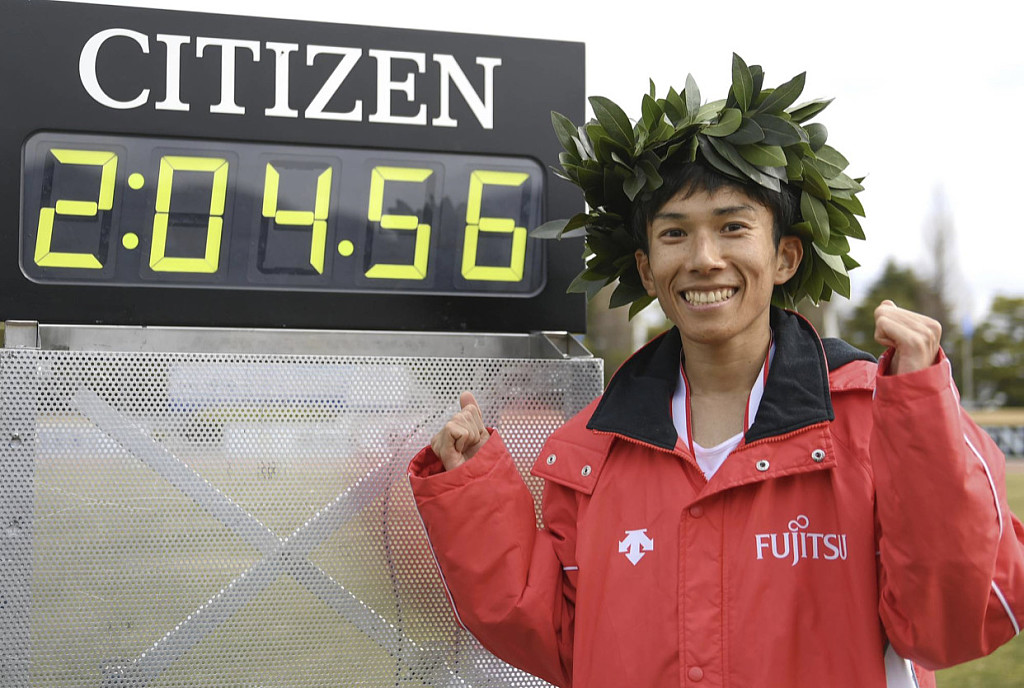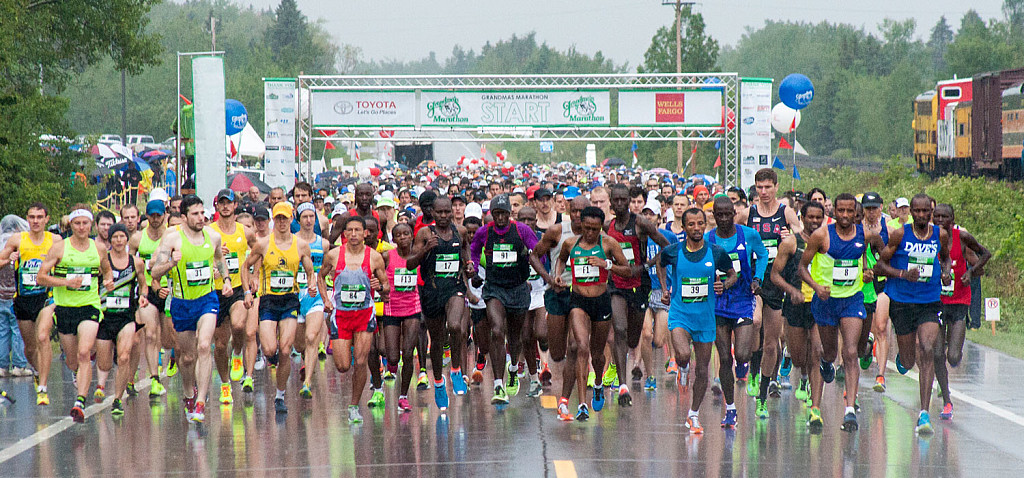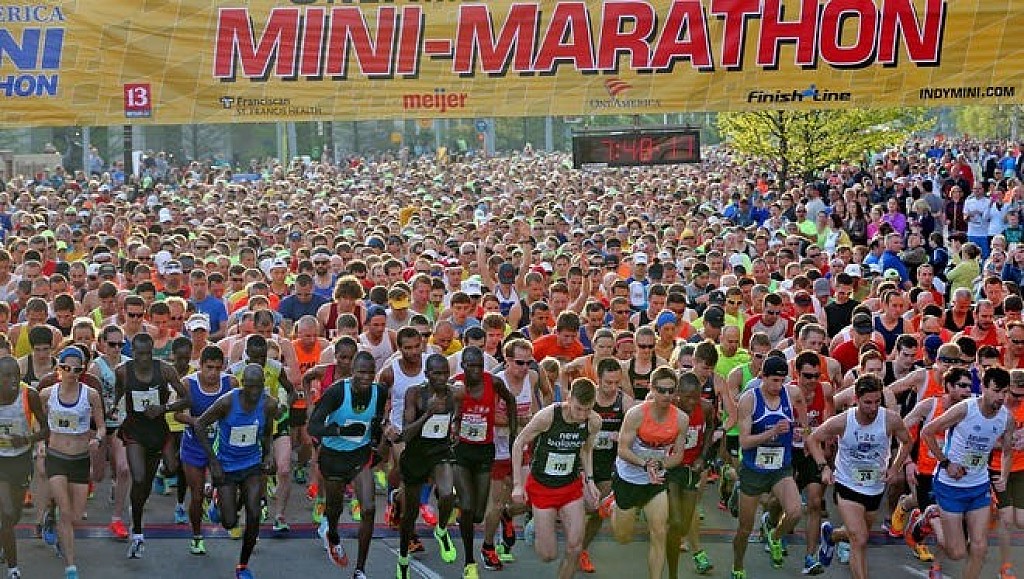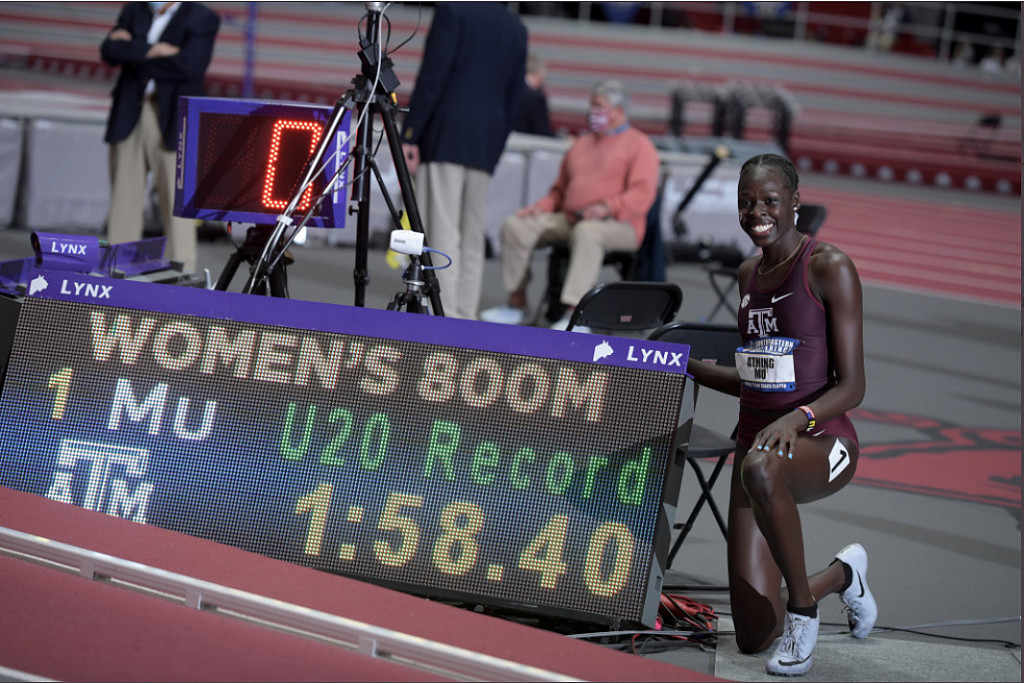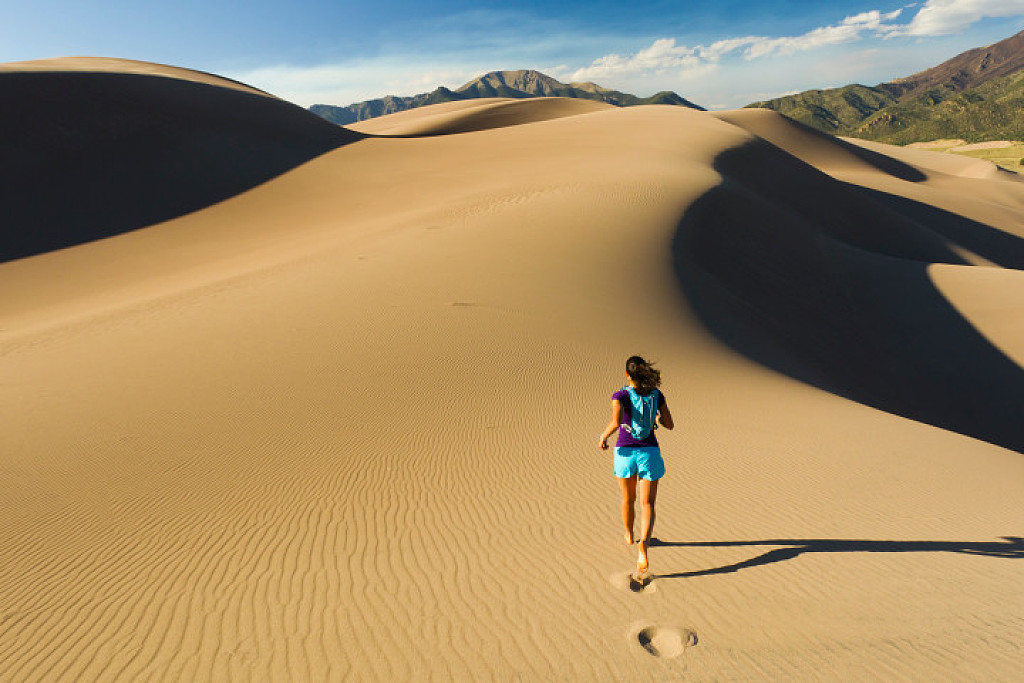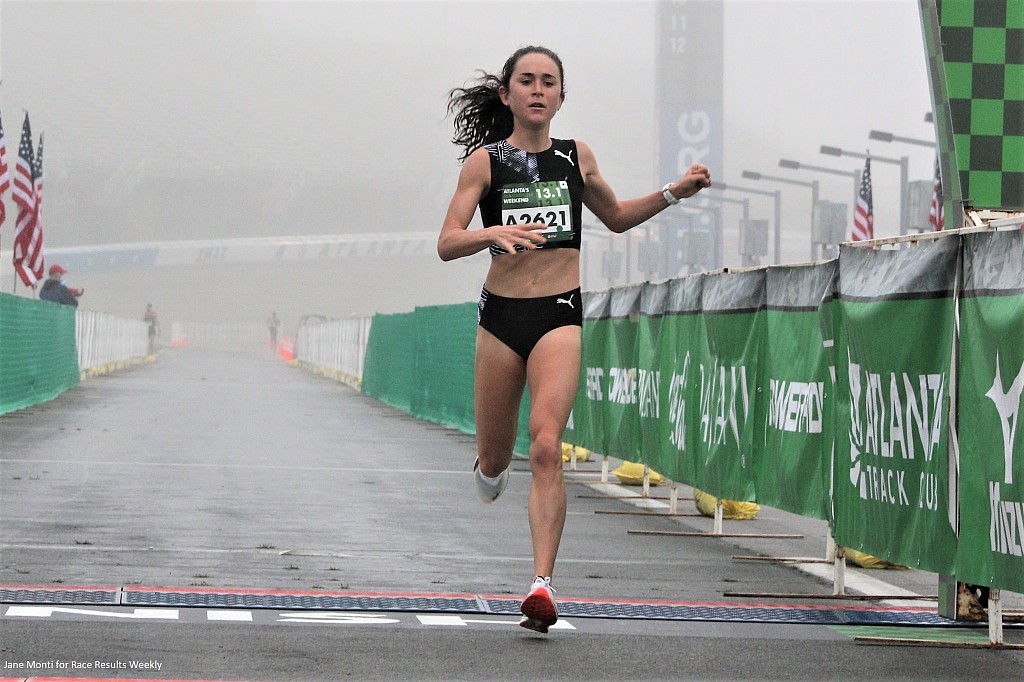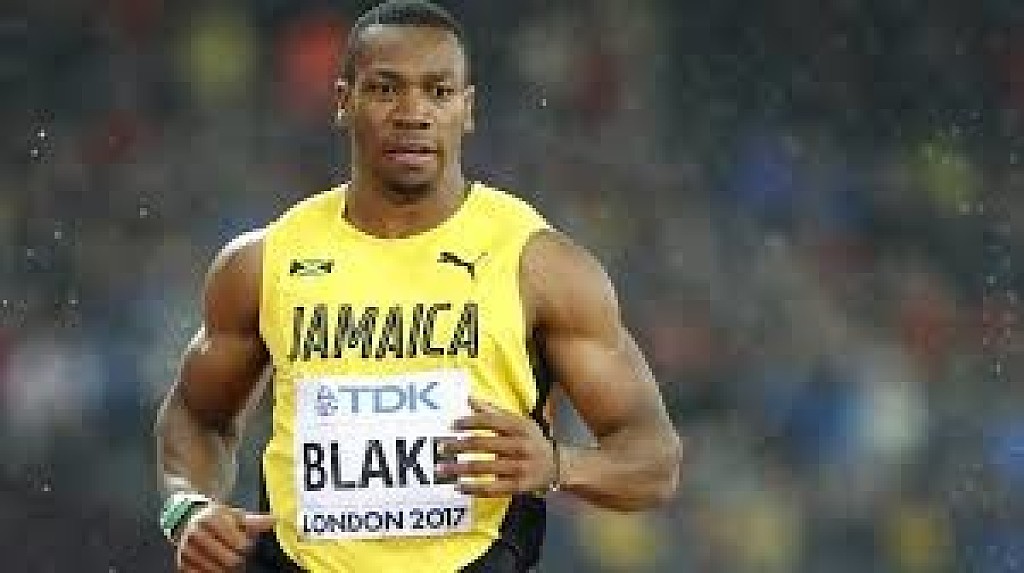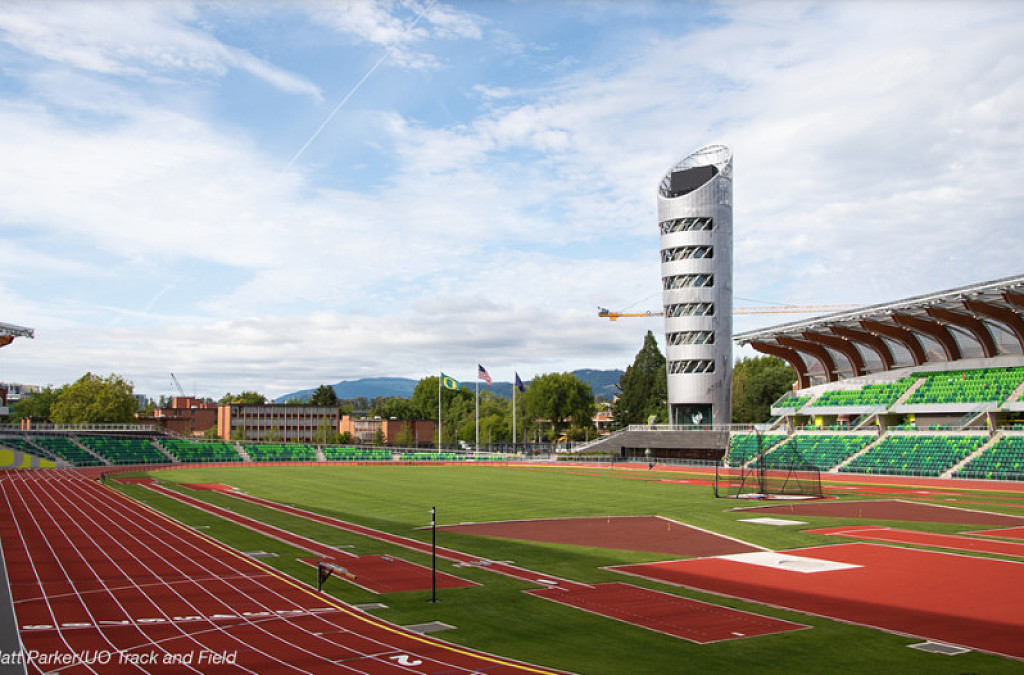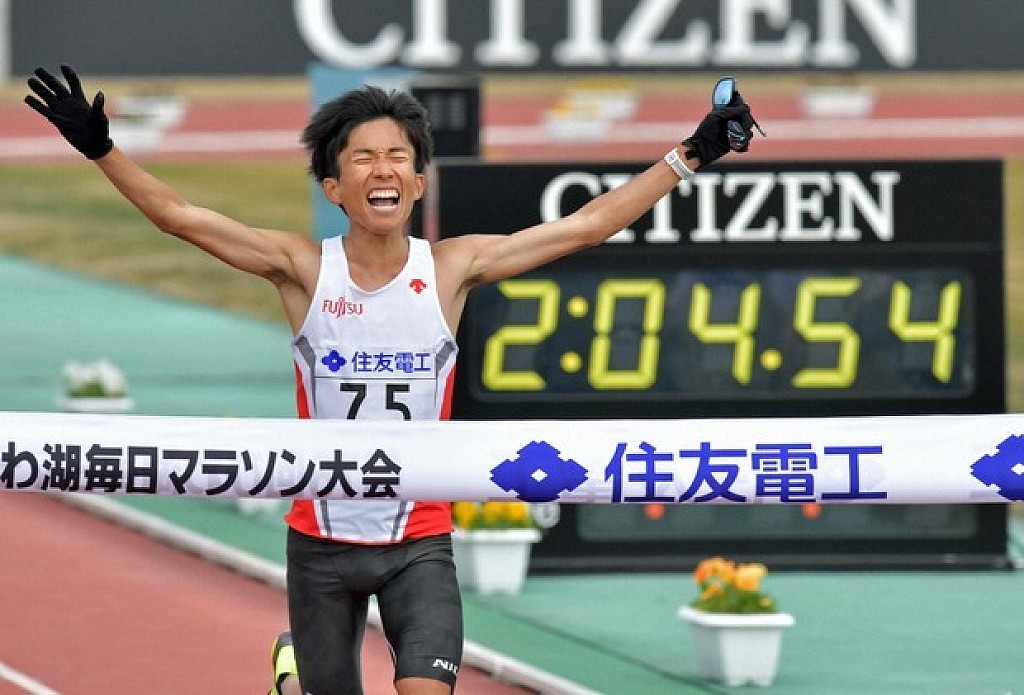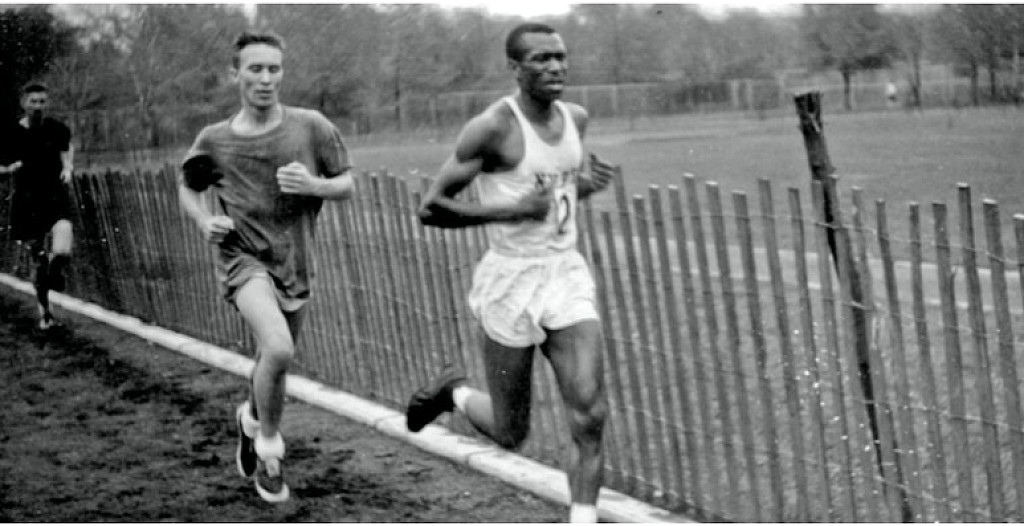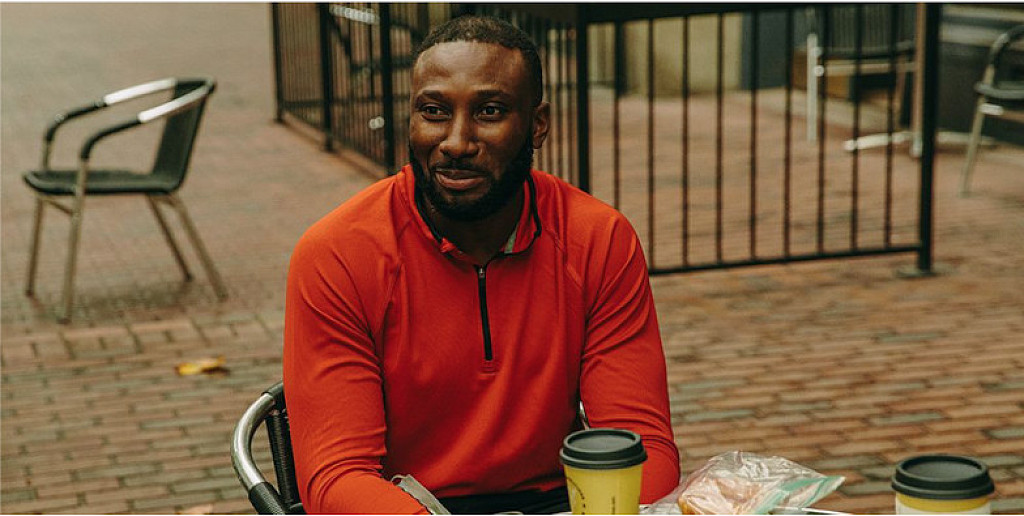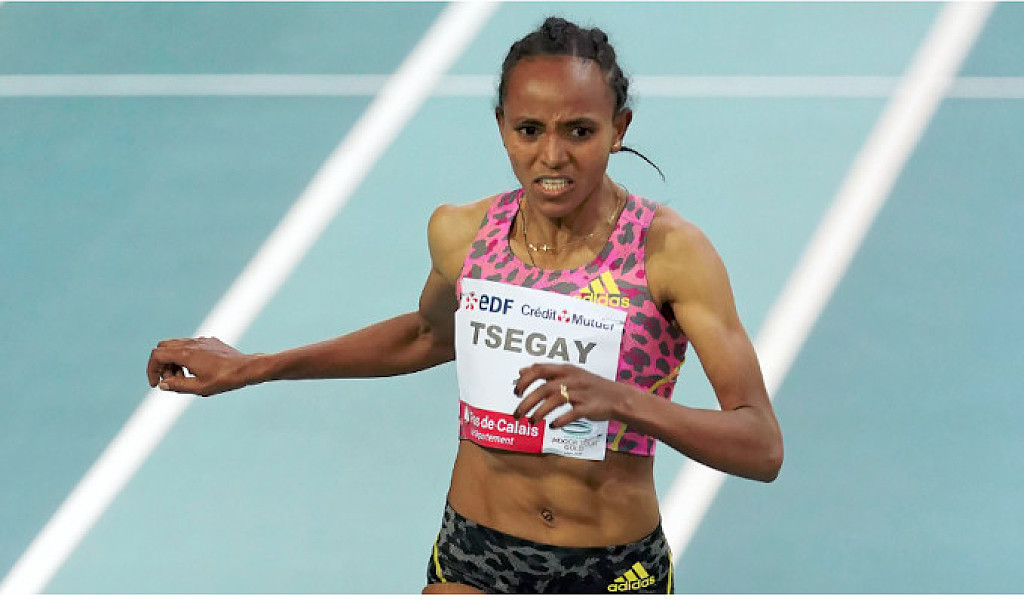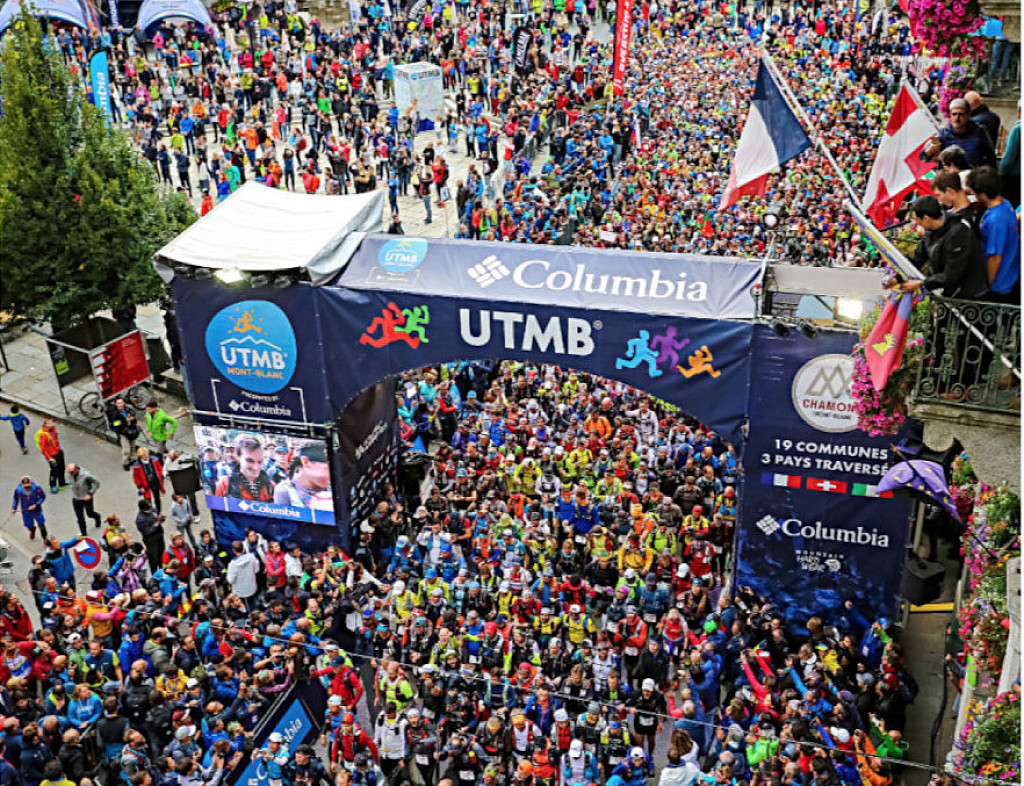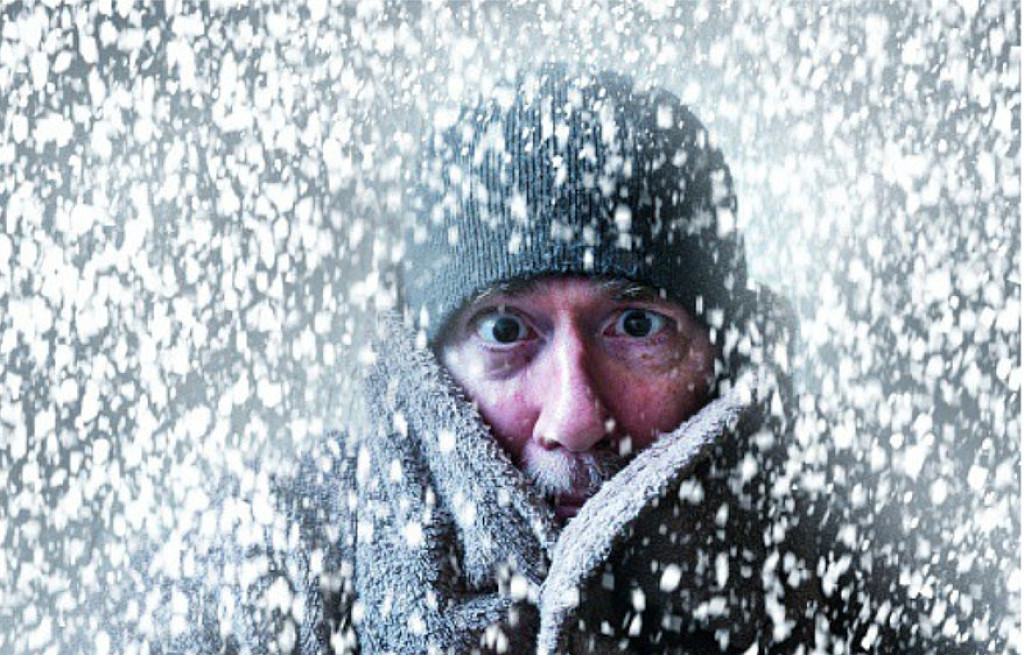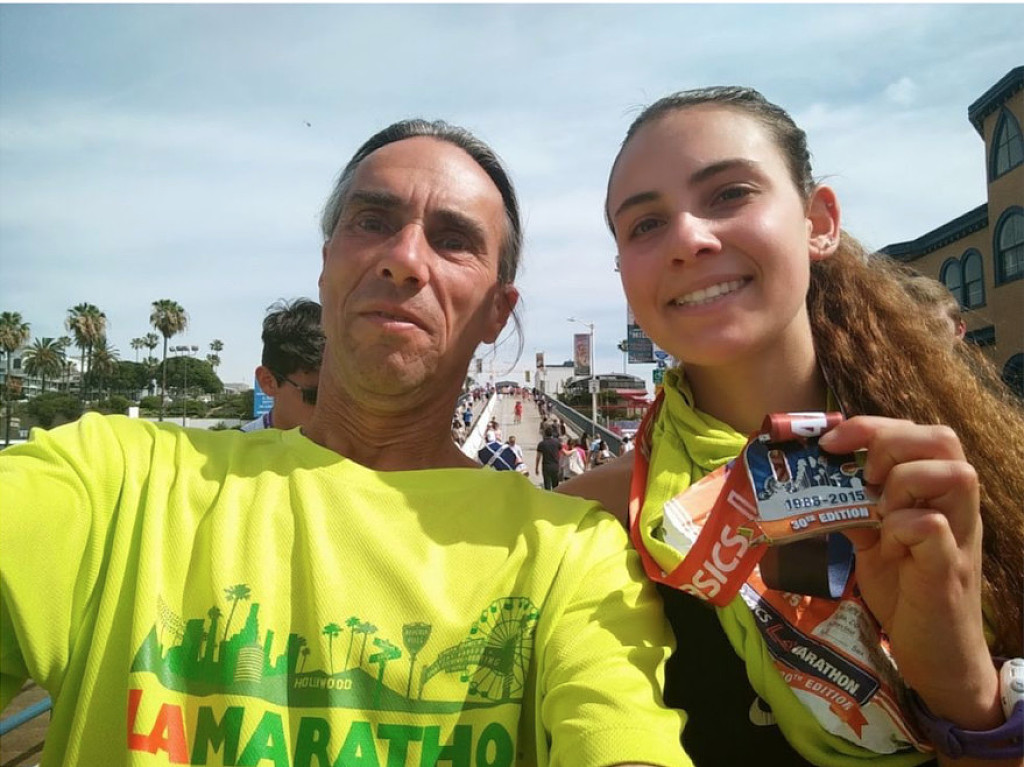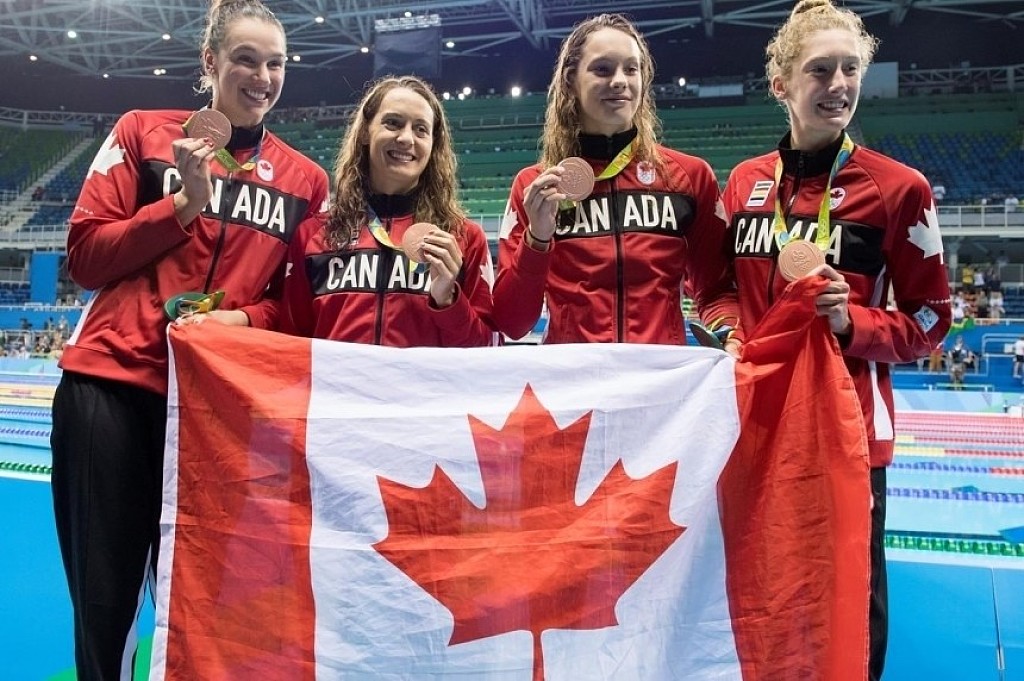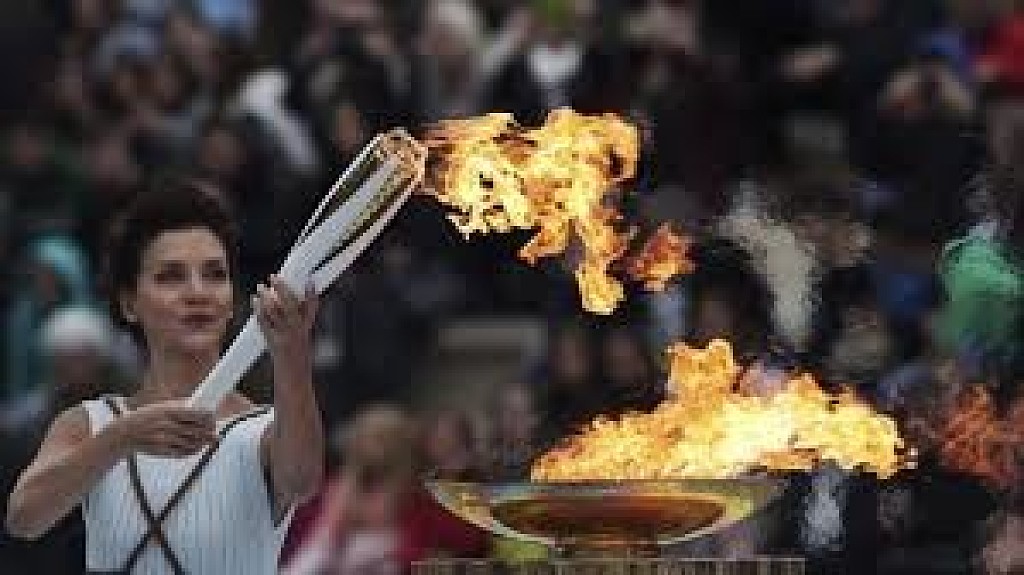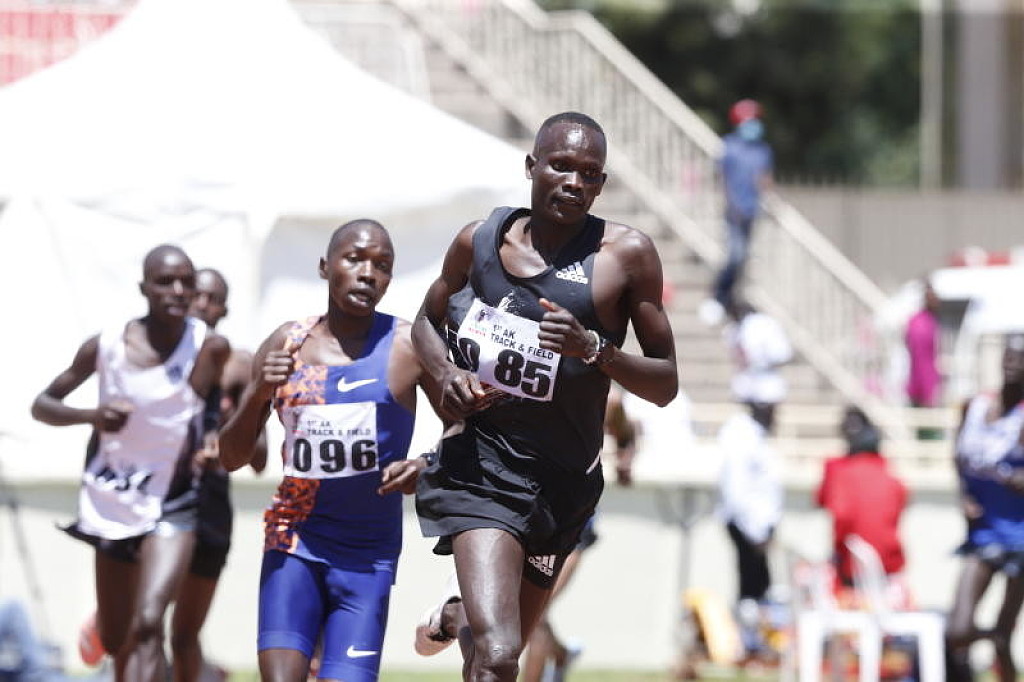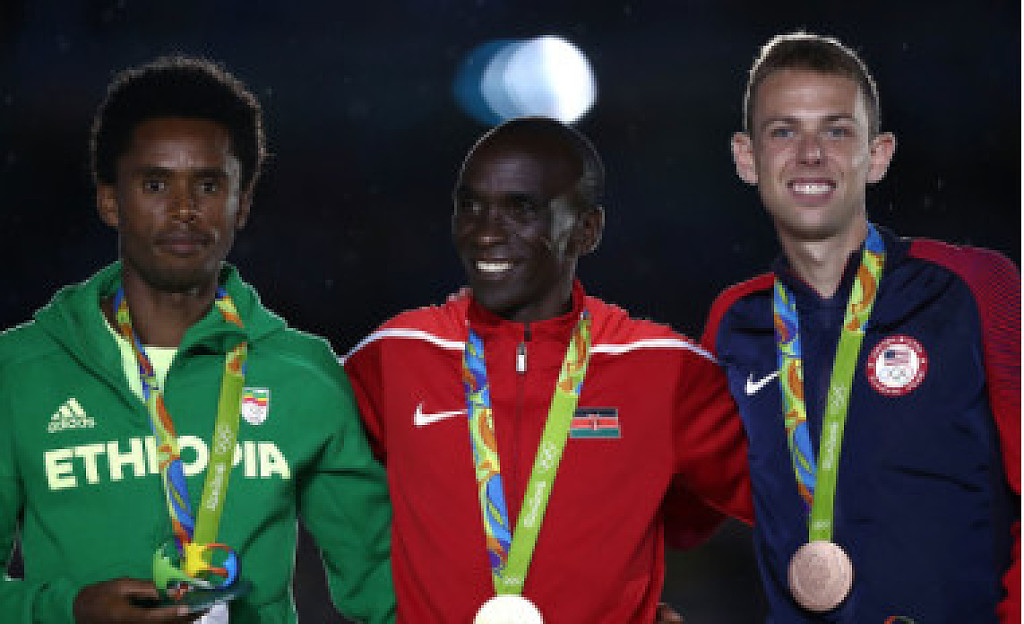Running News Daily
Running News Daily is edited by Bob Anderson in Mountain View, California USA and team in Thika Kenya, La Piedad Mexico, Bend Oregon, Chandler Arizona and Monforte da Beira Portugal. Send your news items to bob@mybestruns.com Advertising opportunities available. Over one million readers and growing. Train the Kenyan Way at KATA Running Retreat Kenya. (Kenyan Athletics Training Academy) in Thika Kenya. Opening in june 2024 KATA Running retreat Portugal. Learn more about Bob Anderson, MBR publisher and KATA director/owner, take a look at A Long Run the movie covering Bob's 50 race challenge.
Index to Daily Posts · Sign Up For Updates · Run The World Feed
Coyotes have been attacking runners in Vancouver
There have been 15 confirmed coyote attacks in Vancouver's Stanley Park since Dec. 1, 2020, and most of the victims have been runners.
Vancouver’s Stanley Park has been a popular spot for runners for years, but if you live in the area, you may want to log your kilometres elsewhere this spring. According to conservation officials, there have been 15 coyote attacks on people in the park since Dec. 1, 2020, and most have been on runners. Among them was Azi Ramezani, who was bitten by a coyote while running on the sidewalk by the Hollow Tree on Stanley Park Drive on Jan. 21.
Since the attacks began, officials have closed several of the trails in the park, but the park itself has remained open. Ramezani, who was attacked on a sunny day around 5 p.m., is now looking at a recovery period of about six months. In an interview with the news outlet The Province, she said she believes officials should have been discouraging people from going to the park completely — not just to stay away from specific trails.

“You don’t expect an animal to attack you by a road with other people and traffic,” she said. The way the coyotes have been attacking people resembles the way the animals would ordinarily attack prey, officials say.

"What I can tell you, that type of attack — meaning a coyote coming out of nowhere, running fast toward a jogger and biting them on the leg — it is the same thing they would do to prey like a deer,” Sgt. Simon Gravel told the Vancouver Sun. “It’s the same mechanics involved. It makes me believe that it is somehow predatory and not defensive.”
No one knows exactly how many coyotes are in the 1,000-acre park, but estimates vary between six and 12. Two have already been euthanized for aggressive behaviour, but Gravel says he’s not sure what’s making them act this way.
It could be that they’re associating humans with a source of food because of people leaving food in the park, or from seeing humans feeding birds. Whatever the reason, these animals appear to have very little fear of humans.
Until officials are able to get the coyote situation under control, Vancouver runners should look for other places to run.
“If you choose to use the trails,” warns Gravel, “be aware you’re likely to encounter a coyote that can approach you.”
(03/09/2021) ⚡AMPby Brittany Hambleton
Japan's government has decided to stage Olympics without overseas spectators
Japan's government has decided to stage this summer's Tokyo Olympics and Paralympics without overseas spectators due to concern among the Japanese public about Covid-19, Kyodo news agency said on Tuesday.
Kyodo said the government had concluded that welcoming visitors from abroad to attend events would not be possible given public concern about the coronavirus and the detection of more contagious variants in many countries.
The opening ceremony will also be held without spectators.

"The organising committee has decided it is essential to hold the ceremony in the northeastern prefecture of Fukushima behind closed doors, only permitting participants and invitees to take part in the event, to avoid large crowds forming amid the pandemic," Kyodo said, quoting the officials.
A formal decision on overseas spectators is expected to be made by the end of the month. The Olympics are set for July 23 to August 8, with the Paralympics to follow from August 24 to September 5.

Tokyo 2020 president Seiko Hashimoto said last week she would like to have made a decision before March 25, when the torch relay is due to start.
A decision on the number of Japanese spectators allowed in venues is expected to be made by the end of April.
Most Japanese people do not want international visitors to attend the Games amid fears that a large influx of visitors could spark a resurgence of infections, a Yomiuri newspaper poll showed.
The survey showed 77 per cent of respondents were against allowing foreign fans to attend, versus 18 per cent in favour.
Sky Sports News has contacted both Tokyo 2020 organisers and the International Olympic Committee for a response to Kyodo's report and if a decision may be made earlier than previously stated.
(03/09/2021) ⚡AMPTokyo 2020 Olympic Games
Fifty-six years after having organized the Olympic Games, the Japanese capital will be hosting a Summer edition for the second time, originally scheduled from July 24 to August 9, 2020, the games were postponed due to coronavirus outbreak, the postponed Tokyo Olympics will be held from July 23 to August 8 in 2021, according to the International Olympic Committee decision. ...
more...Bend Marathon has been cancelled for the second consecutive year
Of all the sporting events that have been canceled over the past year in Central Oregon, perhaps none has endured worse luck than the Bend Marathon.
The event — which was scheduled for April 18 and includes a marathon, half marathon, 10-kilometer, and 5K race on roads and paved trails throughout Bend — has been canceled for the second consecutive year due to the COVID-19 pandemic.
One of the first major events to be canceled in 2020 at the onset of the pandemic, the sixth edition of the in-person Bend Marathon will now be pushed back to 2022.
At last week’s Bend City Council meeting, councilors were unable to come to an agreement on issuing the Bend Marathon a special event permit.
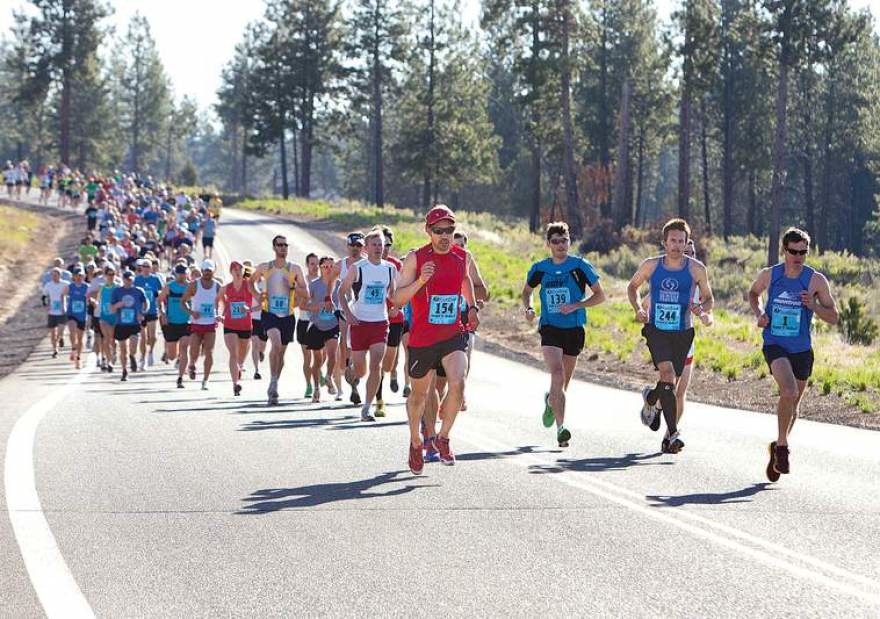
Of all the sporting events that have been cancelled over the past year in Central Oregon, perhaps none has endured worse luck than the Bend Marathon.
The event — which was scheduled for April 18 and includes a marathon, half marathon, 10-kilometer, and 5K race on roads and paved trails throughout Bend — has been canceled for the second consecutive year due to the COVID-19 pandemic.
One of the first major events to be canceled in 2020 at the onset of the pandemic, the sixth edition of the in-person Bend Marathon will now be pushed back to 2022.
At last week’s Bend City Council meeting, councilors were unable to come to an agreement on issuing the Bend Marathon a special event permit.

Marathon organizers Max King and Kari Strang had submitted a proposal that featured several safety protocols, including wave starts of no more than 75 runners, which would adhere to state and county guidelines for outdoor gatherings.
“They didn’t want to risk it,” a disappointed King said. “The spirit of the guidelines are that you don’t get that many people together, and we weren’t getting that many people together.”
King said he was expecting a total of about 900 runners across the four races. About 600 had registered before the event was canceled. In 2019 more than 2,400 runners and walkers participated in the Bend Marathon’s events.
The Bend Marathon course was to feature Bend parks, neighborhoods and the new paved trail through the Deschutes National Forest (paralleling the Cascade Lakes Highway).
King called it bad timing for the popular event.
“We obviously don’t want to spread the disease, and that is what people are risk adverse to,” King said. “When we look at other things that are already happening in the community, such as Mt. Bachelor, restaurants and retail being open, and the lack of spread in outdoor events and the risk being really, really low, I don’t agree with where they’re coming from.”
King and Strang were also planning to decrease aid stations, require masks at the start and finish, and not allow spectators.
The 2021 Bend Marathon will still offer a virtual option, as it did last year. Participants can run their distance wherever and however they want from April 12 to May 25, and then upload their finishing time to bend-marathon.com.
“We want to hype it up and make it fun for people,” King said. “We don’t want it to be just an afterthought. We’ll do some fun events around the race time and some fun videos about training.”
And for now, the plan is certainly for an in-person Bend Marathon in 2022.
(03/09/2021) ⚡AMPby Mark Morical
Bend Marathon and Half
Welcome to the Bend Marathon, Half, 10k and 5k. We're excited that you're considering running with us. You'll cruise around neighborhood parks, through Ponderosa Pine forests, along the mighty Deschutes River and finish in a beautiful iconic Bend location to a hoppin' afterparty where the kombucha and craft beer are flowing, food carts are waiting, and you can relax because...
more...2021 Cleveland Marathon has been postponed due to pandemic
For the second straight May, the Cleveland Marathon won't be taking place in-person, with the event announcing on Monday that it has decided to postpone until the fall due to COVID-19.
This year's Marathon, which is sponsored by Union Home Mortgage, was previously scheduled to take place on the weekend of May 15-16. A new date for the marathon and its corresponding events will be selected after the 2021 NFL schedule is released so that it doesn't conflict with one of the Cleveland Browns' home games.
“While we are disappointed that we must postpone race weekend, we are doing everything we can to hold an in-person event because our runners deserve it and we appreciate their patience,” Jack Staph, executive director of the Union Home Mortgage Cleveland Marathon, said in a release.
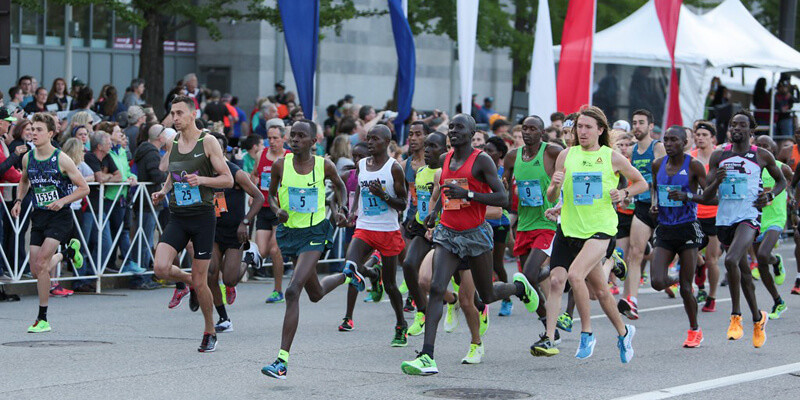
“Our team is dedicated to hosting a safe, high-quality race as we have done for decades, as well as virtual options, and we look forward to gathering together again in the fall. We are confident in our health and safety plan that has been developed with local and state health officials and University Hospitals.”

The Cleveland Marathon is also now offering the following options for runners who deferred their registration from the 2020 event to 2021:
Participate in one of the 2021 virtual events in May or the fall of 2021
Participate in the 2021 in-person race in the fall
Defer to the 2022 race (scheduled for May 21 & 22)
Additionally, those who registered for the 2021 race have been given the following options:
Participate in one of the 2021 virtual events
Participate in the 2021 in-person race.
(03/08/2021) ⚡AMPby Ben Axelrod
Cleveland Marathon
The Cleveland Marathon features a relatively flat and fast course, great volunteer support and a scenic view of downtown Cleveland and its major landmarks. The course has been designed for our athletes to enjoy views of Browns Stadium, the Rock and Roll Hall of Fame, Lake Erie and many other Cleveland highlights. The Cleveland Marathon began in 1978 in an...
more...More than 75 percent of Japanese oppose overseas fans attending the Tokyo Olympics, organizers prepare to make a decision on foreign spectators
Most Japanese don't want foreign fans at Olympics.
The poll, by the Yomiuri Shimbun daily, found that only 18 percent of people who responded were in favour of foreign spectators being allowed into Japan for the coronavirus-delayed Games, with 77 percent against.
Games organisers said last week that they plan to rule on the matter this month, likely before the nationwide torch relay begins on March 25.

But Japanese media say Games chiefs have already decided to bar foreign fans.
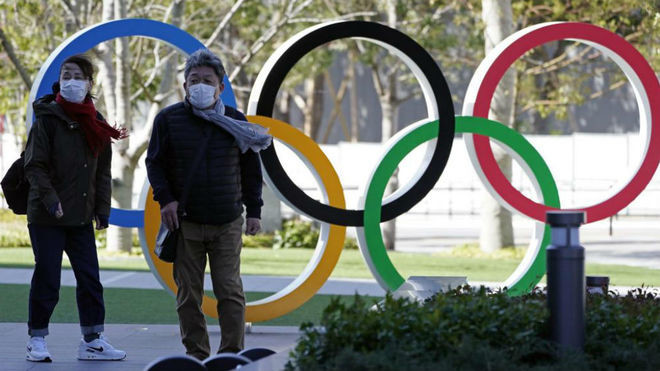
Tokyo 2020 president Seiko Hashimoto said Friday that organisers "really want to hold the event in full stadiums with fans from around the world", but would find it difficult "if we're not in a position where we can accept them and the situation with medical facilities isn't perfect".
The Yomiuri poll also revealed that 45 percent of respondents were in favour of spectators in general attending the Games, with 48 percent opposed.
Organisers have said they plan to make a decision on overall attendance limits in April.
The poll was conducted between March 5-7 through random phone calls, with 1,066 of the 1,977 people contacted responding.
(03/08/2021) ⚡AMPTokyo 2020 Olympic Games
Fifty-six years after having organized the Olympic Games, the Japanese capital will be hosting a Summer edition for the second time, originally scheduled from July 24 to August 9, 2020, the games were postponed due to coronavirus outbreak, the postponed Tokyo Olympics will be held from July 23 to August 8 in 2021, according to the International Olympic Committee decision. ...
more...Louisiana Marathon winner Alex Hebert surprises himself after foot injury
Neither a two-month delay to the Louisiana Marathon nor a foot injury could stop Alex Hebert of Thibodaux from winning the 10th Louisiana Marathon men's race Sunday in downtown Baton Rouge.
Hebert, 28, ran a time of 2:27:16 to cross the finish line first.
“I went into it differently than I normally do,” he said. “I came off a pretty serious foot injury about a month and a half ago and I called it quits. I was not going to do it (marathon). About a week ago, I thought I will roll with it.”

Lydia McRae of Jacksonville, Florida, set the pace for the women with a time of 2:47:34.

Jarrett Leblanc of Jennings set a Louisiana Marathon record in the half-marathon with a time of 1:05:04.
“I had my eye on this race for a little while,” he said. “I normally run the Houston Half Marathon, but I was glad I was able to stay here at home and run. I actually wanted to go a little faster today, but I did not have it. I am glad to have my name on paper for the record.”
Leblanc, 30, is a doctor and has spent the last year helping fight COVID-19 in southwest Louisiana.
“I took about six months off of running,” he said. “I worked full time and overtime in the hospitals in Jennings and Lafayette during the pandemic. Working 55-60 hours a week, it is tough to train.”
The women’s half-marathon was won by Kristin Wenstrom of Covington with a time of 1:25:16.
“I felt really good today; the weather was perfect,” she said. “I was smiling through the whole thing. I had a lot of fun today.”
The event, which usually takes place in January but was postponed because of coronavirus concerns, finished smoothly after precautions were set up to reduce the spread of COVID-19.
(03/08/2021) ⚡AMPby Jarret Major
Louisiana Marathon
Welcome to the Louisiana Marathon Running Festival. Rendezvous with runners from 50 states and over 30 countries who share a passion for Louisiana as they race our fast, flat and festive courses. Stick around for the best Finish Fest on the bayou and enjoy tastes of gumbo, jambalaya, étouffée, duck confit and couch du lait (to name a few dishes...
more...2021 Edinburgh Marathon goes virtual due to the coronavirus
Organizers for this year's Edinburgh Marathon have said recent announcements on coronavirus are a "welcome beam of light and hope".
After they were forced to cancel the Edinburgh Marathon last year amid the first coronavirus lockdown, organizers are hopeful the 2021 competition will be able to go ahead virtually this year.
Whilst organized sport may be allowed to go ahead by Spring, they have taken a cautious approach - believing it's the fairest way for all involved.

In an email to attendees, organizers said: "We believe that to ask you to wait weeks for that decision would be unfair, given the volume of training required, as well as any travel and accommodation arrangements that would need to be made.
"As event organisers, we have committed throughout the pandemic to make timely decisions and communicate as transparently as we can with all those involved with the event.
"This is why we are communicating the decision today that the 2021 Edinburgh Marathon Festival, which takes place on Saturday 29th and Sunday 30th May, will be delivered as a virtual event."
The 2021 Edinburgh Marathon Festival Virtual Challenge
Because of this, they announced the competition on May 29 and 30 will instead be a virtual festival, with people taking part in the competition by planning their own route.
This will be the case for the full marathon, the half marathon, the 10k and the other races.
(03/08/2021) ⚡AMPby Alasdair Clark
EDINBURGH MARATHON
The Edinburgh Marathon is an annual marathon event, run in Scotland over the traditional distance of 42.195kilometers (26.219 mi). The first marathon event in Edinburgh was in 1982 and since 2003 the Edinburgh Marathon Festival has been held each year, usually in May. The current route begins in the city center, then moves out of Edinburgh into East Lothian, finishing...
more...TikTok Made the 12-3-30 Workout Famous, and It Can Help Runners With Stamina and Endurance
We tapped the creator and two trainers to break it down and outline its potential benefits.
The 12-3-30 workout has been popping up all over fitness TikTok. The workout, originally created by Lauren Giraldo, actually showed up on her YouTube channel back in 2019 when she was looking for a simple and approachable way to get fit. 

“I was out of shape and didn’t have a great relationship with fitness at the time,” Giraldo told Runner’s World. “I found a lot of the fitness advice and workouts online were extremely overwhelming and impossible to stick with long term.”


So she decided to come up with her own workout. At the gym, Giraldo found weights intimidating and gravitated toward the treadmill instead. And through trial and error, the 12-3-30 workout was born. It has since made its way through TikTok and is taking the treadmill trends world by storm.
But is this workout legit and can it benefit you as a runner? We asked Jess Mena D.P.T., certified strength and conditioning specialist, and Brianna Bernard, Isopure athlete and certified personal trainer to help us break it down.
What is the 12-3-30 workout?
The 12-3-30 workout is pretty straightforward: You set a treadmill to a 12-percent incline and 3.0 speed and walk for 30 minutes.
“I found 12 incline, 3 speed, for 30 minutes on a treadmill was easy enough for me to do frequently but still challenging enough for me to feel accomplished after,” Giraldo said. “It was what got me in the gym every day and set the foundation for my fitness and health journey.”
Setting the tread to a 12-percent incline forces your body to work a lot harder in order to push your own body weight up an incline, says Mena. The 3.0 speed is an average walking speed and attainable for most folks so this makes it a very beginner-friendly option.
Giraldo, who said she has never been a runner, loves the 12-3-30 workout because it’s a way for her to use a treadmill and feel like she’s getting more out of it than just walking. 

Who should do the 12-3-30 workout?
If you are looking to start exercising, this is a great workout for beginners. You can even start at a lower incline or slower speed. Since walking on an incline builds strength in your glutes and hamstrings, it can serve as a stepping stone for strength training.
But anyone who wants to get in a solid cardio workout—experienced and novice runners alike—can do this workout, says Bernard. For runners who dread the tread—the incline produces an increased heart rate, as well as greater posterior chain activation (think: glutes, quads, and hamstrings) as opposed to walking on a flat road, says Bernard. For experienced runners, this workout is a great option for a recovery or cross-training day.
What are the benefits of the workout?
Giraldo still uses the 12-3-30 for cardio, and says over time, it gave her the confidence to try new things in the gym, so it can be helpful for building both cardiovascular strength and confidence. Now, she incorporates weights after cardio some days.
Walking on an incline on a treadmill means you don’t have to drive somewhere to find hills, and if you have a tread in your home, it’s a great way to get a workout in without going to the gym (an especially great option during the COVID-19 pandemic).
Mena says the workout can be used as a way to increase stamina and endurance for long-distance runners. “It’s a nice way to force other muscles to work a little harder and in a different way,” Mena says.
If you typically run on a flat road, this workout can be a great way to prepare for the hills you might find on a race course. The incline helps build endurance that will help you get through those final, sometimes grueling miles in a race or intense workout, says Bernard.
Plus, it’s great for those who work a desk job. When you’re short on time, Bernard also suggests breaking the workout into three 10-minute walks. Studies have shown that training for 30 minutes at the end of an eight-hour workday isn’t enough to counteract all of the sitting we do. “Therefore, we need to increase our movement throughout the day and the 12-3-30 is an easy fix for that,” Bernard says.
How often should you do the workout?
Giraldo tries to do the workout every day. 

“It’s become less of a workout and more of a lifestyle,” Giraldo says. I use it as my ‘me time.’ I put on a YouTube video or my favorite Netflix show and tune out the world. Even after three years, I still feel just as accomplished when I do it now than when I started.”
For a novice, it’s best to ease into it by doing the workout just two times a week. Each week, add one day until you reach five-plus days, checking in with your body to see how it’s adjusting to the workout to avoid injury, says Mena.
Over time, your body will adapt to this workout, so if you want to see change—increase your cardio, build strength, or even lose weight—you’ll eventually have to add a new stimulus like weight training or running to affect greater change.
(03/07/2021) ⚡AMPby Runner’s World
A Year After Ahmaud Arbery’s Death, Thousands of Miles Are Run in His Name
The #FinishTheRun event raised more than $226,000 for the 2:23 Foundation.
“A Black man should be able to go for a jog without fearing for his life,” President Joe Biden tweeted on Tuesday, February 23.

On that day, one year before, 25-year-old Ahmaud Arbery was shot and killed while out running in Brunswick, Georgia. Three men await trial for his murder. But last year it took more than two months for his murder to become national news—a fact that remains disturbing.
That’s just one reason why those who seek justice for Arbery are staying active, using their miles to continue to draw attention to his name and to the greater issue of racism and gun control in America.
Thousands of runners across the United States and the world, took part in #FinishTheRun, a week-long challenge asking runners to run 2.23 miles in Arbery’s name. Runners were finishing the run that Arbery could not.
The run was hosted by the 2:23 Foundation—a nonprofit created by Jason Vaughn, Arbery’s high school football coach, and Demetris Frazier, Arbery’s cousin, committed to fighting systemic injustices. Proceeds of the challenge went toward a 2:23 Foundation scholarship fund that helps to provide young men and women the opportunity to become future lawyers, local leaders, policymakers, social engineers, and other social justice-based career paths.

The foundation had a goal to raise $223,000 by the end of the year, but it has already surpassed that goal, raising $226,000 after just the first day of the #FinishTheRun event. That total was significantly boosted by a donation of $22,300 from Saucony.
“Every dollar from this virtual run is going toward scholarships for black and brown people in our community,” the 2:23 Foundation relayed in a statement. The foundation’s credibility came under question, because the organization is not endorsed by Arbery’s mother. “It will be a managed, transparent fund that will include Mr. Arbery as a key decision maker on who receives the disbursements of those funds.”
Here are just some of the runners and groups that have run 2.23 miles in Arbery’s memory:
Running to Protest
The Running to Protest group was founded by filmmaker Coffey in the wake of the Black Lives Matter protests in the summer of 2020. The group joined forces with Everytown Athlete Council member and Olympian Race Imboden to host a 2.23-mile event; athletes ran while wearing masks through New York’s West Village, to honor Arbery and raise awareness for gun prevention.
“If you are Black, like Mr. Arbery, you are ten times more likely to be shot while you are running in the street,” Imboden told the crowd of about 100 runners. “Black Americans are disproportionally impacted by gun violence. They experience nearly 10 times the homicide rates, 15 times the gun assaults and three times the fatal police shootings of white Americans.”
Stay Home Stay Motivated
Stay Home Stay Motivated was created in March 2020 as a way to connect homes together in pursuit of wellness in all forms. New York-based Jenny Beaudry Westin, who created the group, did her miles on her Peloton, but encouraged the rest of the group to take part in their own way, virtually.
“We ran, walked, and rode last year as a community in Ahmaud's memory and as our community has grown, there was an even bigger opportunity this year to honor his memory, keep the conversation going, and honor the importance of wellness across the Black community,” Westin said.
Antiracist Run Club
The Bay area-based group, formerly known as SF Runners for Equality, uses running as a common denominator to enact change for today’s racial injustices.
“Ahmaud Arbery was murdered while out on a routine run, a hobby everyone in this group is passionate about,” Shelby Rhodes said. “We often compare the idea of long distance running to the work on Anti-Racism, and we'll keep fighting as a group.”
The group’s Ayako Sawanobori organized for 27 members to run virtually.
Black Runners of the GTA
“I am a solo runner and run alone in Toronto, Canada, so safety is on my mind a lot,” said Melanie Murzeau, who founded the group to bring Black runners of the Greater Toronto Area into the larger running community.
“The death of Admaud Abery was the driving force in me creating a virtual space to normalize and humanize diverse running and to fight against stereotypes and to have people address their own bias so other BIPOC solo runners feel included.”
Members ran virtually, with Murzeau encouraging them to stay informed: “I believe knowing the laws and policies is one way a BIPOC individual can advocate for themselves.”
Latinas Running
Through Latinas Running, Kim Rodriguez aims promote diversity and body positivity in running. Living in Georgia, like the late Arbery did, she encouraged her followers to run in his memory too.
“These deaths are not justifiable, but neither is our silence. It's on us to confront and dismantle systemic racism in America,” she posted. Rodriguez urges her followers to speak up, be an ally, donate and join virtual efforts possible. “Every little step matters.”
(03/07/2021) ⚡AMPby Runner’s World
RunTV.org is the new Netflix for running videos
The new website will allow you to find your favourite running videos with just a few clicks
Over the last year, runners everywhere have been looking for ways to keep themselves busy while we’re stuck in lockdown and we have no races to train for or groups to run with. Some runners have taken to creating Strava or GPS art, others have been tackling FKTs and some have dedicated themselves to running every street in their town or city. Mike Padilla decided to spend his time creating ‘the Netflix for running videos’, runtv.org.

Thanks to COVID-19 lockdowns and a lot of snow where Padilla lives in Pennsylvania, he has spent more time than usual this winter running on his treadmill. He relies heavily on Youtube videos to get him through those treadmill miles, and of course what else would a runner watch while they’re running but running videos? The only problem is finding the right videos to watch.
“YouTube is great if you know what you’re specifically looking for, but it’s not particularly suited for discovery,” explains Padill
“If the race is on YouTube and it’s allowed to be shared, we have it. We have the oldies and the latest — Olympics, NCAAs, Worlds Champs, road races, marathons, etc.,” says Padilla. “The listings automatically update every hour with an algorithm that scans YouTube.”
Padilla explains that there is great running content out there, but there is no central organization for how it’s distributed. Most videos are shared by individual organizations, but he believes runTV.org proves that “when there is some effort applied to orchestrate the independent activities of many, the whole is greater than the sum of its parts.” He hopes that with the creation of this website, people will find information and inspiration that captures what we all love about running.
“There’s great running content out there – you just had to find it. I’ve removed that barrier,” he says. “I just wanted to give back to the running community, so this is my token contribution.”
As the website continues to grow, Padilla says he’s always looking for those hidden gem videos, so if you have a running video that you love that isn’t available on the site, you can send the link to videos@runtv.org
(03/07/2021) ⚡AMPby Running Magazine
Holly Archer wins European 1500m silver after being reinstated on appeal
British athletes added three more medals at the European Indoor Championships in Poland on Saturday evening.
The most dramatic came in the women’s 1500 metres, where Holly Archer celebrated winning silver only to be disqualified and then reinstated on appeal by the British team.
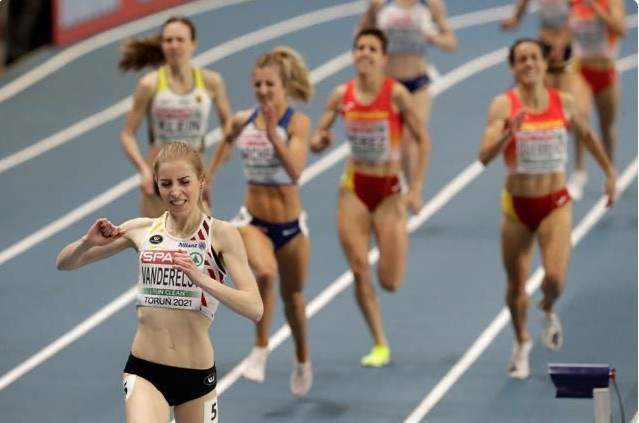
There was pushing and shoving throughout a scrappy race but Cambridge athlete Archer was singled out alongside Spain’s Agueda Munoz, who was also penalised.
A counter appeal was eventually rejected, and Archer said: “That was the longest wait ever. It was supposed to be half an hour but it turned into three hours. I feel absolutely delighted. To come so close and then get it taken away, I’ve been on a roller coaster, but I’m really happy to finally get that silver.”
British team captain Jodie Williams and pole vaulter Holly Bradshaw both collected bronze medals.
Williams has made the move up from the shorter sprints to 400m and was rewarded with her first individual medal at a major event since 2014 behind exciting young Dutch winner Femke Bol.
Williams, 27, ran a personal best of 51.73 seconds, and said afterwards: “It’s crazy. I came here to do a job and it’s job done. Last time I came to European Indoors I got fourth so I had to upgrade that.
I’m really happy. I got a bit boxed in, so I got a bit worried for a second. I knew I could do it. I just dug in and I’m really glad.”
Bradshaw had targeted gold but failed with her three attempts at 4.70m and had to settle for joint third alongside Belarusian Iryna Zhuk behind Swiss winner Angelica Moser and Tina Sutej of Slovenia.
The 29-year-old said: “You can’t sniff at a European Indoor medal, but I’m incredibly disappointed. I felt great. The other girls handled their jumps really well and I just didn’t quite jump as well today.
“It’s been one of my best indoor campaigns ever. Of course it’s disappointing to finish like that but, on the whole, I’ve made some really good progress and stepped it up a notch and I feel like a completely different athlete.”
Britain’s first medals of the event came on Friday in the women’s 3,000m with gold for Amy-Eloise Markovc and bronze for Verity Ockenden.
There is a strong possibility of more female success in the final of the 800m after the young trio of Keely Hodgkinson, Isabelle Boffey and Ellie Baker all qualified for the final.
Baker said: “I’m so happy. It just shows how dominant our GB middle distance girls are. I’m so proud of them as well as myself. I can’t wait for us to put on a show for everyone tomorrow.”
Jamie Webb won his semi-final in the men’s event to secure his progress but team-mate Guy Learmonth missed out.
Andrew Robertson was disappointed to miss out on a medal in the men’s 60m final, finishing fourth in a slower time than he ran in both the heats and semi-finals. Italy’s Lamont Marcell Jacobs was a clear winner in a world-leading 6.47secs.
Robertson said: “It’s very disappointing. I’m getting to the stage where I should be running low 6.50s consistently. Jacobs running 6.47s is a fantastic time, but I should be at least challenging him with the way I’ve been running. It wasn’t a good performance tonight.”
Scotsman Andy Butchart looked impressive in qualifying for the final of the 3,000m, winning his heat in the fastest time, while Jack Rowe also made it through.
Andrew Pozzi carries strong British hopes of a medal as the reigning world indoor champion in the 60m hurdles and is looking to regain the title he won in 2017.
He stormed through the first of five heats in 7.52s, the joint-fastest time of the morning, and said afterwards: “It was a really good time. I had a great reaction from the blocks, which I’ve been missing from the indoor season, so that was really encouraging.”
In the women’s event, there were good runs from sisters Cindy Sember and Tiffany Porter, who safely qualified for the semi-finals. Sember’s time of 7.99s was her fastest since 2017 while Porter clocked 8.04s.
(03/07/2021) ⚡AMPEuropean Athletics Indoor Championships
Witness six sessions of action-packed sport over three days of intense competition as some of the best athletes in the world compete for prestigious European titles. Don’t miss the opportunity to witness this thrilling event and get closer to the action. ...
more...Louisiana Marathon still running this weekend with safety protocols
Like most things this past COVID-riddled year, the Louisiana Marathon will look a lot different when it kicks off this weekend.
Luckily for runners, the race is still on, with events beginning Saturday morning leading into Sunday’s full marathon. But unlike years past, there won’t be streets lined with supporters or spectators handing out waters at the aid stations.

Safety protocols have given the 2021 edition a much different look. Runners will be grouped into separate “start corrals,” where cones will be placed 6 feet apart to encourage participants to maintain social distancing. The first corral of runners starts at 8 a.m. for Saturday’s quarter marathon and 5K, and 7 a.m. for the full and half marathons, with the following groups moving to the starting line in order.

Masks are not required while running the race, but runners are required to wear a mask before starting and after crossing the finish line. Runners are also encouraged to bring their own personal hydration in order to reduce potential contact. Cups of water will still be available at the various aid stations throughout the course, but will not be handed out to runners.
Awards will be based on chip timing, and the results will be posted online after the race. Winners can still claim their hardware from the award’s table, but will be required to verify the results on their phone.
This year marks the 10-year anniversary of the Louisiana Marathon, which has grown substantially since its inception, having featured participants from all 50 states as well as more than 32 countries. The course takes runners on a scenic route through downtown Baton Rouge, the University Lakes, LSU’s campus and several historic neighborhoods along the way.
(03/06/2021) ⚡AMPby Mark Clements
Louisiana Marathon
Welcome to the Louisiana Marathon Running Festival. Rendezvous with runners from 50 states and over 30 countries who share a passion for Louisiana as they race our fast, flat and festive courses. Stick around for the best Finish Fest on the bayou and enjoy tastes of gumbo, jambalaya, étouffée, duck confit and couch du lait (to name a few dishes...
more...Sir Mo Farah opened his 2021 racing season winning the inaugural Djibouti International Half-Marathon
Mo Farah opened his 2021 racing season Friday at the Djibouti International Half-Marathon, winning the race in a time of 1:03:06. This was his first competition since he ran the Antrim Coast Half Marathon on September 12, where he crossed the finish line in 60:27 for the win.
After spending the last seven weeks at a training camp in Ethiopia, this race was meant to be a test of fitness ahead of the Tokyo Olympics, where the four-time Olympic champion will be hunting for another gold medal.

The Djibouti Half-Marathon is a special race for the 37-year-old, because it’s a chance for him to run in the place where he spent his childhood before moving to Britain. In an interview with Athletics Weekly ahead of the race, Farah was not shy about his goal: he was there to win.
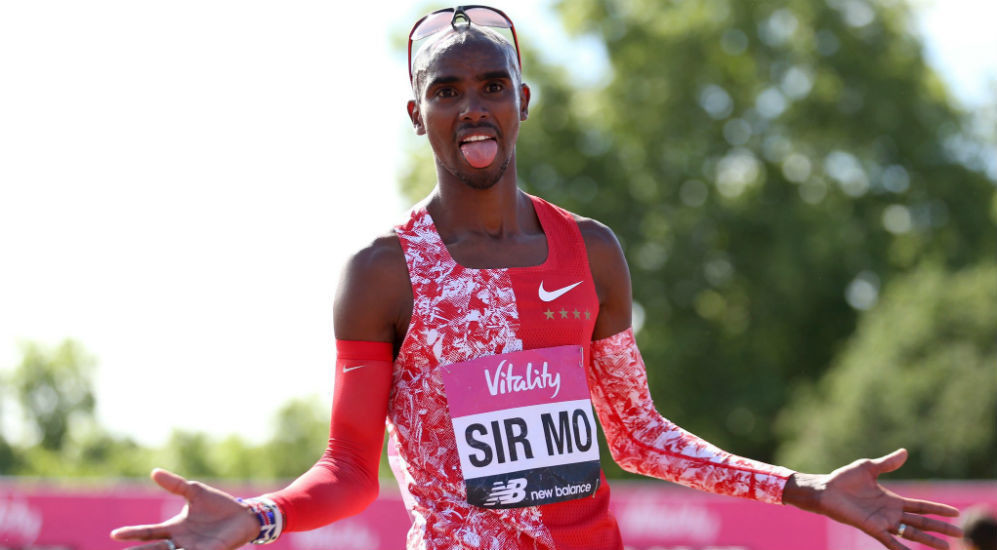
“It’s not just going to be a case of me turning up. It’s going to be tough and there are a lot of decent guys racing so I’ll just go out there and see what I can do,” he said. ““It’ll be good to get back in the right frame of mind in terms of racing again and to test myself.”
As Farah predicted, the race was tough, and he didn’t win it handily. His training partner Bashir Abdi finished only four seconds behind him in 1:03:10, and the top seven men all ran under 1:05.
With the Tokyo Olympic Games only four-and-a-half months away, Farah will now be turning his attention to the track as he prepares to defend his 10,000m Olympic title. With competitors like Joshua Cheptegei, who ran a 26:11.00 for 10K last October, challenging him for the win, this won’t be an easy feat, but Farah told AW that results like that get him “fired up.”
“It’s not just Cheptegei – there’s Jacob Kiplimo, Moh Ahmed – you’ve got so many guys coming through at the moment and I think it’s exciting for the sport to have all of these people at that level.”
While his result in Djibouti was a few minutes off his half-marathon personal best of 59:32 (set in 2015), Farah did exactly what he set out to do, which was to test his fitness and win the race. With that goal accomplished, it’s safe to say that Farah is progressing well toward the Olympics, and we look forward to seeing what he will do on the track this summer.
(03/06/2021) ⚡AMPby Brittany Hambleton
5 benefits of running with a dog
If you have a dog, you probably take him or her running from time to time, and although you might not think about it too much, your furry little friend can be a pretty big help when it comes to training. Dogs are always there for you, they keep you active and they might even stop you from going too hard on easy days. The pros of running with a dog certainly outweigh the cons, so here are five benefits of bringing your four-legged training partner along for runs.
You always have a running buddy


Regardless of the time of day, the weather or any other factors that might prevent your human training partner from joining you for a run, your dog will always be ready for an outing. Dogs are never not happy to go outside and be active, and because of that, you always have a running buddy if you have a dog.
You can blame them for the bad runs
As one Twitter user pointed out, you can blame your dog if you have a bad run. Before you get upset thinking about runners pointing the finger at anyone other than themselves after bad days, think about it: a dog wouldn’t care even if he knew that’s what his owner was doing. We don’t recommend making excuses on Strava, but if you’re set on coming up with one, saying that your dog was lollygagging and slowing you down is pretty believable.
They keep you accountable
Human training partners are great for keeping you accountable, because if you make plans to meet up for a run, you will be letting other people down when you don’t show up. If you think about it, dogs can keep you accountable, too. They grow accustomed to their daily schedule, and if you slack and skip a few runs, it’ll get to them. They’ll be energetic and restless, and the only way to solve that problem is by taking them for a run.
You can’t overdo it
You probably aren’t going to take your dog out on your hard sessions, so they’re reserved for easier runs. While some dogs can hammer out a quick 10K, many of them are more comfortable running at a slower pace. If you run alone, you might push too hard on easy days, but with a pup by your side, you’ll be more conscious of your pace.
The silent training partner
It’s great having running buddies, but sometimes you just want to run in silence. That’s why dogs are ideal training partners, as they keep you company without talking your ear off.
(03/06/2021) ⚡AMPby Running Magazine
Barefoot half-marathon records goes down again
We encourage everyone to get outside and run in the winter, with one golden rule: layer up. As long as you’ve got the right gear, winter running can actually be quite enjoyable. But while most of us are pulling on our thermal tights and socks, there are a few runners who have been doing the exact opposite. In the last few weeks, the barefoot half-marathon on snow record has come down not once, not twice, but three times, after being left untouched for years. The most recent attempt was done by Max Weigand in Basil, Switzerland, where he smashed the most recent record by 28 minutes, completing the 21.1-kilometre distance in 1:12:38.
Until this year, the barefoot half-marathon record belonged to Dutch athlete Win Hof, who ran a time of 2:16:34 in 2007. Seemingly no one has attempted to break this record in the last decade (and if they did, they were unsuccessful) until earlier this year, when Jonas Felde Sevaldrud of Norway lowered the record by more than 30 minutes, clocking a 1:44:58. Then, less than one month later, Quebec runner Karim El Hayani broke the record yet again, this time coming in at 1:40:49. Right around the same time El Hayani was making his record-breaking attempt, Weigand was across the ocean doing the same thing.

Weigand is originally from Germany, and formerly ran for the German National Track Team. While he no longer runs competitively, running is clearly still a big part of his life, and his background in competitive running gave him the leg-up on the record. He created a video to document his attempt, in which he claimed that he was in shape to run about 1:10 for the half if it were on an actual course, but was expecting to be much slower in the snow without shoes. To train for his attempt, Weigand ran all winter with no shirt to help him get used to the cold (usually keeping his shoes on), and once they finally had some snow in Switzerland, it was go-time.
Running circles around a small field, he completed the first kilometre far ahead of his goal pace in 3:15, but decided that he felt good enough to keep going. According to Weigand, his training for the run made the cold outside temperature not a problem, but of course, the real struggle was his cold feet, which really started to become a problem after the 10K mark. At that point, he described the feeling as “running on needles”, and said it was the most painful thing he’s ever experienced in his life. The sun finally came out with two kilometres to go, which allowed him to push the pace and close the run in a 3:21 and 3:10.
At this point, neither Sevaldrud’s, El Hayani’s, nor Wiegand’s records have been ratified by Guinness, so we’ll have to wait a while before any of these records become official. With spring right around the corner, if anyone wants to beat Weigand’s attempt, they’re going to have to get out there before the snow melts.
(03/06/2021) ⚡AMPby Running Magazine
Pam Reed Becomes the 17th Person to Finish 100 100-Mile Races. And She Has Some Advice for You
The ultrarunning legend shares wisdom gleaned from nearly three decades of running 100-milers.
Ultrarunning legend Pam Reed just celebrated her 60th birthday as part of one of the most exclusive clubs in running: the group of runners who have finished 100 official races of at least 100 miles.

According to ultrarunning historian Davy Crockett, Reed is the 17th person in recorded history to have completed 100 100-milers in their lifetime (it was recently discovered that Frederick Davis III also reached this mark in December 2019, making him the 18th member of this group). Reed achieved the impressive mark at the Grandmaster Ultras in Littlefield, Arizona, on February 6, where she finished the 100-miler in 25:02:54—first woman, and third overall.
To clarify, this honor is the completion of 100 official races that were at least 100 miles. This means that even if Reed completed 491 miles at an event, like she did at the 2009 Self-Transcendence Six-Day Race, she was only credited with a single 100-miler. Though you may think Reed wishes that the extra mileage had added up to reaching her title sooner, she wouldn’t trade away any parts of her storied career.
Reed has run ultras, ranging from 50K to multi-day races, for three decades. Among her many accolades, she was the first woman to outright win the Badwater 135—a feat she achieved in 2002 and repeated in 2003.
In 2019, Crockett mentioned to Reed that she was at 89 total 100-mile finishes. That surprised her, because she assumed she had already hit that mark.
“In my mind, the way I counted, I thought I had done it,” Reed told Runner’s World. “But I counted 220 miles that I ran at a 48-hour race as two [100-milers] or my six-day race as four. But they didn’t count, and when I found out I was 11 away from something only a handful of people had done before, I decided to go for it.”
So Reed set the goal of reaching the 100 mark before her 60th birthday in February 2021, and decided to do 10 100-milers in 2020. In addition to a handful of 50Ks, a 60K, a 100K, and a half Ironman, this was going to be her biggest year ever. Previously, the most she had done five or six in a year, with other distances sprinkled in as well.
As you can imagine, Reed’s year was turned upside-down as the pandemic wiped away many of the races she wanted to do. Having to adapt, she signed up for virtual races, running courses she and her friends mapped out near in Jackson, Wyoming, where she’s based. She ran from her home to the Grand Tetons for races like Hardrock Hundred and Wasatch 100. She also did 100-mile races, such as Bryce Canyon Ultras and the Javelina Jundred, in-person when she could.
“I don’t really plan that much,” Reed said. “I’m not a great planner. It just kind of happens, and if a race happens, I go for it. I made courses if I had to, calling my friend who made a five-loop course climbing up a mountain five times. I don’t want to do this five times. I can be a whiner, but I did it and 100-milers are hard no matter what way you do them.”
For her century race, she planned to do Arrowhead 135, a challenging winter race in northern Minnesota in February. However, that was canceled because of the pandemic, so she opted for the Grandmasters Ultra for her 100 crown.
And Reed had a chance to win the race—she was leading after 39 miles, but a few runners took a wrong turn on a 5.5-mile loop, and the course was adjusted after Reed had already completed the section. She was passed and took third overall, but that didn’t spoil her big day. When she came across the line, she received not only her belt buckle, but also a plaque and a cake commemorating her 100th 100-miler.
“I’m so blessed to have the body that can keep doing this,” Reed said. “It’s cool that only so many people have ever done this. I’m really proud of it. My goal in life is to be able to run until I die and I am 100-percent serious when I say that. I just want to live my life to the absolute fullest, and, in my opinion, that is being able to run, skate ski, swim, bike, and get outside as long as I can.”
As the 60-year-old looks back on fondly on her race resume and the different challenges that each race presented, we also asked her what wisdom she might have for budding or experienced ultrarunners who dream of reaching the heights that Reed has in her career.
Here is what she had to say.
Energy powers her: I’m Finnish, a quarter Swedish, and a quarter Norwegian—I think there’s something to that. I know a lot of Finnish people, and they are hardcore. Living in Jackson, I’m surrounded by hardcore people. I just have a lot of energy, so I always want to be doing things. That really helps me do what I do.
Do a lot of modalities: I do a lot of hot yoga, often twice a day. I do acupuncture, I get massages regularly, and when things are hurting, I work on them immediately. I used to be a gymnast, and I could put my chest on the floor between my legs. Now, I don’t need to do that. I adjust my yoga to fit what I want to do as a runner. I’m intuitive about what I do and do not do.
Don’t wear so many clothes: I can’t tell you how many times I start with more clothes than I needed. I’ve learned from winter races that you can’t sweat or you’ll get colder, and I needed to find a happy place. Turns out in the summer, that’s a cotton shirt, arm sleeves, and men’s nylon socks.
Learn to fuel properly: I learned that I’m best running with Tailwind, nut butter, and Justin’s Almond Butter. I use GU gels when I race Ironmans, but I usually can’t get those down in a 100-miler. Except for one time at Leadville, I started throwing up eight hours into the race, and I didn’t stop until I took a GU with about 13 miles to go.
Listen to your body above anything else: Okay, don’t necessarily try this at home, but I don’t always listen to what experts tell me. I listen to my body. That’s not to say I ignore experts. But it’s also okay, in my opinion, to investigate. You should do that. Everyone is different, and you have to figure out what works for you. Don’t hurt yourself, but try things like massages or hyperbaric chambers. Do your research first, of course.
Fail and learn: Failing is learning. No one race is the same and not all races will be perfect. We all have to learn again and again.
(03/06/2021) ⚡AMPby Runner’s World
Will You Sign Up for the Virtual Boston Marathon?
For the first time, a medal from the iconic event will be available to anyone. Getting into the race doesn’t depend on your speed or fundraising capabilities.
On March 2, the Boston Athletic Association (BAA) made a big announcement: It will hold a virtual Boston Marathon this fall for the first 70,000 people to register.

What makes this different from last year’s virtual Boston Marathon? After that in-person race was postponed and then canceled due to COVID-19, only people who were already entered to run Boston in 2020 were allowed to do the virtual race.
This year, it’s open to anyone.
Potential entrants don’t have to worry about qualifying times, cutoff points, or raising five-figure dollar amounts for a charity bib. Any runner could earn a medal from the iconic race, which has long been seen as an exclusive club for the sport’s most competitive athletes.
Still, much remains uncertain about the 2021 in-person and virtual events.
Here’s What We Know
→ The in-person Boston Marathon, typically held every April, has been moved to Monday, October 11. It’s the day after the scheduled date for the Chicago Marathon.
→ The size of the in-person race, which is typically about 30,000 runners, will be smaller this year. Organizers will attempt to maintain the customary field size ratio of 80 percent qualifiers and 20 percent charity runners.
→ The virtual race will accept up to 70,000 runners, all of whom can earn the classic medal. “For the first time in our history, most everyone will have the opportunity to earn a unicorn finisher’s medal for every BAA race in 2021—no matter whether they choose to walk or run,” said Tom Grilk, president and CEO of the BAA in a statement. The virtual race will need to be completed in one continuous attempt.
Here’s What We Still Don’t Know
→ The number of athletes allowed to run the 2021 in-person race—will it be elites only? Or will it include several thousand runners?
→ If Boston qualifiers are a part of the race, what will the cutoff time be for entry into the in-person race? The cutoff—the time by which a Boston hopeful has to be faster than his or her qualifying time—was 1:39 for the 2020 race that never happened. With a smaller field, it’s likely to be much greater.
→ How much will it cost to enter the virtual marathon?
Even with the uncertainty, a chance to earn a Boston medal is appealing to many runners.
(03/06/2021) ⚡AMPby Runner’s World
Ayuko Suzuki withdraws from Nagoya Women's Marathon due to an Injury
Nagoya Women's Marathon announced that invited athlete Ayuko Suzuki, a member of Japan's marathon team for this summer's Tokyo Olympics, has withdrawn due to inflammation of a tendon in her left leg.
Nagoya was to be Suzuki's first marathon since finishing 2nd at the September, 2019 Marathon Grand Championship Olympic trials race.

Suzuki suffered injury last year as well but was able to run the 5th Stage at November's National Corporate Women's Ekiden, helping lead Japan Post to a second national title.
(03/05/2021) ⚡AMP
by Brett Larner
Nagoya Women's Marathon
The Nagoya Women's Marathon named Nagoya International Women's Marathon until the 2010 race, is an annual marathon race for female runners over the classic distance of 42 km and 195 metres, held in Nagoya, Japan in early March every year. It holds IAAF Gold Label road race status. It began in 1980 as an annual 20-kilometre road race held in...
more...Ethiopian Tirunesh Dibaba is set to comeback and compete in the NN Mission Marathon Hamburg
Tirunesh Dibaba, one of the greatest female distance runners of all-time, will feature at the elite women’s field at the NN Mission Marathon in Hamburg on April 11. The announcement that Tirunesh is set to compete is hugely exciting news as the endurance-running legend boasts a virtually unsurpassed record in the sport.
At the 2008 Beijing Games, the Ethiopian became the first woman in history to claim the 5000m and 10,000m Olympic double, and four years later at the London Games she successfully retained her 10,000m crown. During an international career spanning 20 years, she has also won nine world titles and in more recent times has enjoyed an impressive marathon career.
Setting her marathon PB – which at the time was a national record – of 2:17:56 when second at the 2017 London Marathon, she has four top three placings at Marathon Majors – highlighted by victory in the 2017 Chicago Marathon.

Dibaba is delighted to come to the German city: “I’m looking forward to race in Hamburg. This is my first competition after giving birth to Allon last year. It’s an important race for me and I’m looking forward to finding out where I am in a race situation.”
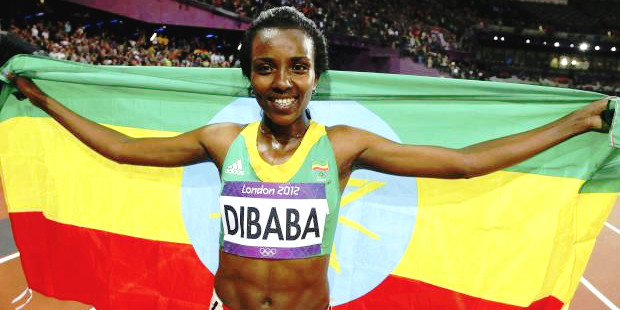
The one-off marathon organised by Global Sports Communication, the NN Running Team and the Hamburg Marathon provides a much-needed opportunity for an Olympic qualification time. In these challenging times and with the road race calendar for the first half of 2021 decimated by the pandemic, Tirunesh and rest of the slate of top athletes will be seeking to secure selection to the delayed Tokyo Olympic Games.
Under the tagline ‘The fastest way to Tokyo’, the race will take place around a looped 10.5km city centre route. NN Group, the international financial services company, will be the title sponsor of this great event.
(03/05/2021) ⚡AMPby Christopher Kelsall
Air Force Marathon Preps for September In-Person 25th Anniversary Event
Participants of the Air Force Marathon can save a little money on registration this year if registered by March 8, when the second price increase will occur.
As this year marks the 25th Anniversary of the Air Force Marathon, race director Brandon Hough is ready to welcome runners back to Wright-Patterson Air Force Base.
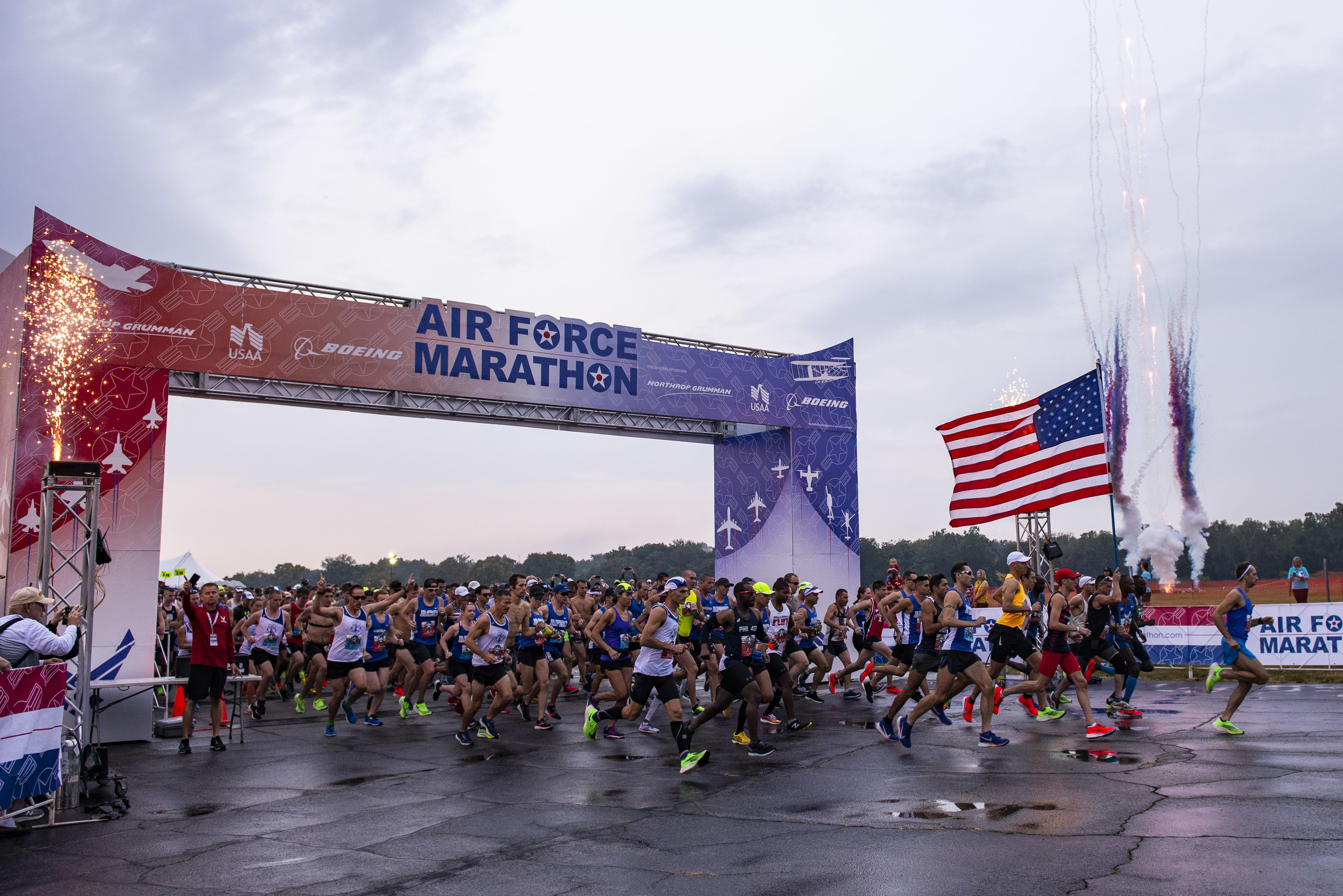
“We are excited that we can continue to give people the opportunity to compete and have fun,” said Hough. “We want to encourage all runners to choose the Air Force Marathon and save their money by registering now.”

Prices for the full marathon and half marathon will increase by $10, the 10K will increase by $5 and the 5K will increase by $4. The Tailwind Trot is currently $15 and will increase to $18. Prices for the full marathon and half marathon Fly! Fight! Win! Challenge Series will increase to $160 and $150. Lastly, the Marathon Relay will increase to $200. Active duty, reservists, guard members, and ROTC cadets may receive up to $10 off their race registration.
Back by popular demand, a virtual race option is also available to allow runners from all over the world to join in from afar. Runners may choose between the marathon, half marathon, 10K, 5K, or Tailwind Trot and will need to run their selected distance between Sept. 11-26.
All registered runners receive a race shirt, virtual event bag, and optional complimentary commemorative patch. Everyone who finishes a race also receives a medal celebrating this year’s featured aircraft, A-10 Thunderbolt II, B-2 Spirit, C-17 Globemaster III, F-35 Lightning II. Medals are presented to participants at the finish line by Air Force senior leaders. All races begin and end at the National Museum of the United States Air Force except the 5K and Tailwind Trot, which take place on the campus of Wright State University.
The 25th Annual Air Force Marathon is scheduled for Saturday, Sept. 18, 2021. The Health & Fitness Expo, held at Wright State University’s Nutter Center is scheduled for Thursday, Sept. 16 and Friday, Sept. 17. The weekend will also feature a Breakfast of Champions and Gourmet Pasta Dinner the same day as the 5K and Tailwind Trot on Friday, Sept 17, as well as an After Party on Saturday, Sept. 18.
(03/05/2021) ⚡AMPAir Force Marathon
The first official marathon was held on September 20, 1997, celebrating the 50th anniversary of the Air Force, and is held the third Saturday in September each year. 2023 marks the 27th year and is set forSeptember 16th, 2023. To commemorate our rich history in flight, each year one aircraft is chosen to be highlighted during the marathon and on...
more...2021 Missoula Marathon is going virtual for the second year in a row due to the pandemic
The Missoula Marathon is going virtual again this year.
Run Wild Missoula says they worked with the Missoula City-County Health Department to plan for an in-person event, but that just isn't possible right now.

Thousands of people travel from all over to participate in the races, and organizers don't want to risk spreading COVID-19.

After canceling for the first time ever -- and losing beloved race director Tony Banovich last year – Run Wild Missoula says they've had a difficult year, but are looking forward to offering the races in this format.
Registration opened in October, and Race Director Ashely Cossairt says people are ready to run in June. While she knows it won't be the same, this was the best decision.
"You really miss that human connection. Trying to host a, put together an event that has all these restrictions, and you can't really interact,” Cossairt told MTN News. “You can't cross the finish line and have somebody put that medal around your neck for you -- that's such a huge accomplishment and to not be able to experience that, it is sad."
The marathon typically brings in about $2 million to the local economy. But perks of going virtual mean anyone can participate from anywhere. Registration is open online for all the races here.
“We know marathon weekend brings thousands of people to downtown Missoula and is a significant draw for local hotels, restaurants, breweries, retailers, and other small businesses,” Cossairt stated. “However, the medical support staff we rely on will still be very busy serving our community in a significant way by providing treatment and vaccinations, and it would clearly be irresponsible for us to put our community at risk by hosting an event with this type of reach.”
(03/05/2021) ⚡AMPby Katie Miller
Missoula Marathon
Half and full marathon in Missoula, Montana, in the city they call "The Garden City." Amazing participation by the entire town and county. Front lawn hose squads cool down the runners en route. Lots of rest stations. The full marathon is a Boston qualifier. Runner's World rated the course as one of the best overall road races. ...
more...Grandma's Marathon will become one of first big races in COVID era
All eyes in the international running community are looking at Grandma's Marathon, which is poised to be one of the largest in-person races held since the COVID-19 outbreak.
Organizers of the Duluth event, scheduled for June 17-19, have teamed up with world experts on crowd control to devise a plan to safely host 9,500 runners signed up to compete in the marathon, half-marathon and 5K races.
"We're all basically looking at Duluth," said Marcel Altenburg, a crowd scientist at the U.K.'s Manchester Metropolitan University who has studied the flow of the world's largest marathons in places like London, Berlin, Chicago and New York.

The OUC Orlando Half Marathon hosted 1,700 runners in December, but planners of Grandma's Marathon believe it will be the first race of its size since the pandemic's onset.
Altenburg is using crowd science software developed around the world's biggest races to help Grandma's organizers ensure that participants and volunteers can stay socially distant. He uses technology like Google Earth and Google Maps to model the course and then inputs past results to simulate the event.

Altenburg found that if Grandma's staggers its starting line properly, each runner should be able to have at least 12 feet of separation from others at any given moment.
"All in all, it was 9.6 million calculations in order to literally check every single overtaking that happens on the course," he said.
Greg Haapala, Grandma's Marathon race director, said there are still lots of uncertainties surrounding the June event. He and others are in the midst of conversations with the state about changing public health guidelines so that races can have more than 250 people on a course at once.
"We're sort of trying to work on this math problem together so that we can bring the data to the state to help show that we think this can be done in a safe manner if all the elements are right," Haapala said.
Organizers said runners will be bused in groups of 25 to the starting line, where they will be released in waves of five. Anyone who is not actively running the race must wear a mask, and spectators will likely not be allowed.
Registrations for Grandma's 2021 races filled up in December, after organizers announced the event would be capped at half capacity. Last year's race was canceled for the first time in its 44-year history.
"We really focus on the mission of our organization, which is getting people active and keeping people healthy," Haapala said. "Events often are the motivational factor that keep people [going] after their goal."
The Duluth event is the 12th largest marathon in the country and one of the few races in the summer. Many of the most popular spring contests — like the Boston Marathon and the London Marathon — have postponed their 2021 races to the fall.
(03/04/2021) ⚡AMPby Katie Galioto
Grandmas Marathon
Grandma's Marathon began in 1977 when a group of local runners planned a scenic road race from Two Harbors to Duluth, Minnesota. There were just 150 participants that year, but organizers knew they had discovered something special. The marathon received its name from the Duluth-based group of famous Grandma's restaurants, its first major sponsor. The level of sponsorship with the...
more...Japanese Yuki Kawauchi has become the first person to run 100 sub-2:20 marathons
Guinness World Records (GWR) has recognized Japanese marathoner Yuki Kawauchi for becoming the first person to run 100 sub-2:20 marathons. Kawauchi hit triple digits at Japan’s Hofu Marathon in December, where he ran to a second-place finish in 2:10:26, and he recently posted his 101st sub-2:20 result after running a PB of 2:07:27 at Sunday’s Lake Biwa Mainichi Marathon in Otsu, Japan, where he finished 10th.
GWR awarded Kawauchi a certificate in 2018 after he ran the 78th sub-2:20 marathon of his career and overtook American Doug Kurtis for the most in history. That same year, Kawauchi won the Boston Marathon (crossing the line in 2:15:58), and in 2019, he ran the 100th marathon of his career. At that point, he had broken 2:20 94 times.
Due to the pandemic, Kawauchi didn’t race as much as he normally would last year, but he did manage to run four marathons (for comparison, he ran 10 in 2018 and eight in 2019). He broke 2:20 at each of his races in 2020, and he is currently on a 15-race streak of marathons in which he has broken that barrier.

Kawauchi´s last marathon over 2:20 came in October 2018, when he ran 2:27:43 at the Venezia Marathon in Italy. Amazingly, he has run a whopping 109 marathons in his career, meaning he has only failed to break 2:20 on eight of those occasions.
"It might not to be difficult to run under 2:20 once,” Kawauchi said at an online press conference. “But even if it’s easy to achieve it once, in order to achieve that 100 times, you have to be able to continue the sport for a long time, you have to be able to participate in a lot of races, and more than anything you have to stay healthy. Otherwise, you can’t make it happen.”
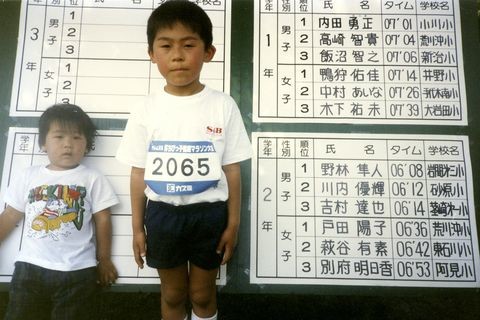
He continued, adding modestly, “With that said, I’m not the fastest in Japan, I’m not the strongest in Japan. But I’ve diligently continued this since I was six years old and it’s resulted in this record.”
Kawauchi turns 34 on Friday, and although he’s getting older, he is still capable of running PBs, as he showed at the Lake Biwa Marathon. He touched on this in the press conference, and he said he is confident he can continue to run this quickly for many years to come.
(03/04/2021) ⚡AMPby Ben Snider-McGrath
Sydney Olympics marathon gold medallist Naoko Takahashi among 12 women added to Tokyo organisers' board
Sydney Olympics marathon gold medalist Naoko Takahashi and former Paralympic alpine skier Kuniko Obinata were among 12 women added to the Tokyo Olympics organizing committee board on Wednesday, more than doubling the ratio of women on it to 42per cent.
The organizing committee said on Tuesday it would increase female representation on its board after its former president, Yoshiro Mori, stepped down last month over sexist remarks he made.
Mori, a former Japanese prime minister, resigned as Tokyo Games president after sparking a furore when he said during a Japanese Olympic Committee meeting in February that women talk too much.

Among others joining the organizing committee board were Japan Rugby Football Union executive board member Naoko Saiki, Chukyo University sports science professor Kyoko Raita and Tokyo Metropolitan Sports Association for the Disabled chair Yaeko Shiraishi.

The 12 new members bring the number of women on the 45-member board to 19.
"We selected people in order to get opinions from different angles through diversity, harmony and gender equality," Seiko Hashimoto, who replaced Mori, told reporters.
"What should we do to best tackle staging these Games amid the coronavirus concerns? I want to organize our response making use of the perspectives from various fields."
(03/04/2021) ⚡AMPTokyo 2020 Olympic Games
Fifty-six years after having organized the Olympic Games, the Japanese capital will be hosting a Summer edition for the second time, originally scheduled from July 24 to August 9, 2020, the games were postponed due to coronavirus outbreak, the postponed Tokyo Olympics will be held from July 23 to August 8 in 2021, according to the International Olympic Committee decision. ...
more...Kenyan middle distance runner Nelly Jepkosgei banned after giving fake evidence for missed test
Jepkosgei has been banned for three years after accepting a charge of tampering with evidence, a violation of World Athletics’ anti-doping rules, the Athletics Integrity Unit (AIU) said on Tuesday.
Jepkosgei, who is ranked 27th in the world in the women’s 800m, missed a doping test on March 18 and offered fake evidence in the form of a forged document to explain the whereabouts failure, the AIU said in a statement

The 29-year-old had informed the AIU that she missed the test because she had been at Kapsabet County Referral Hospital, where her sister had been admitted after being involved in a serious car accident.
In June, Jepkosgei’s representative sent the AIU a copy of a discharge summary document from the hospital purporting to relate her sister, which stated she been admitted on March 18 and “remained there for some days”.

The AIU then asked Kenya’s anti-doping agency (ADAK) to verify Jepkosgei’s claim, but ADAK reported there were no police records of the car accident and that the hospital had no record of her sister being admitted. The Medical superintendent of Kapsabet County.
(03/04/2021) ⚡AMPby Reuters
Two Ugandan world champions, Joshua Cheptegei and Halimah Nakaayi open new track in Uganda
Ugandan world champions Joshua Cheptegei and Halimah Nakaayi recently helped open a track in Chemwania, a village in Uganda.
With the help of Global Sports Communication (the management agency that represents Cheptegei and Nakaayi) and the NN Running Team (Cheptegei’s professional team), the pair funded the development of the track, which was built with the next generation of Ugandan running stars in mind.
Cheptegai is the reigning 10,000m world champion, he owns four world records (5K, 5,000m, 10,000m and 15K) and he is a heavy favourite to win the 5,000m-10,000m double at the upcoming Tokyo Olympics. He grew up in Uganda’s Kapchorwa District, which isn’t far from the new track in Chemwania.

Nakaayi, the 800m gold medallist at the 2019 world championships, grew up in Mukono, closer to the Ugandan capital of Kampala.
As reported by Ugandan news outlet the Daily Monitor, Cheptegei spoke at the track’s opening ceremony, saying that he and Nakaayi helped with its development to provide local athletes with “a more conducive environment so that the country can tap and groom more sports personalities.”
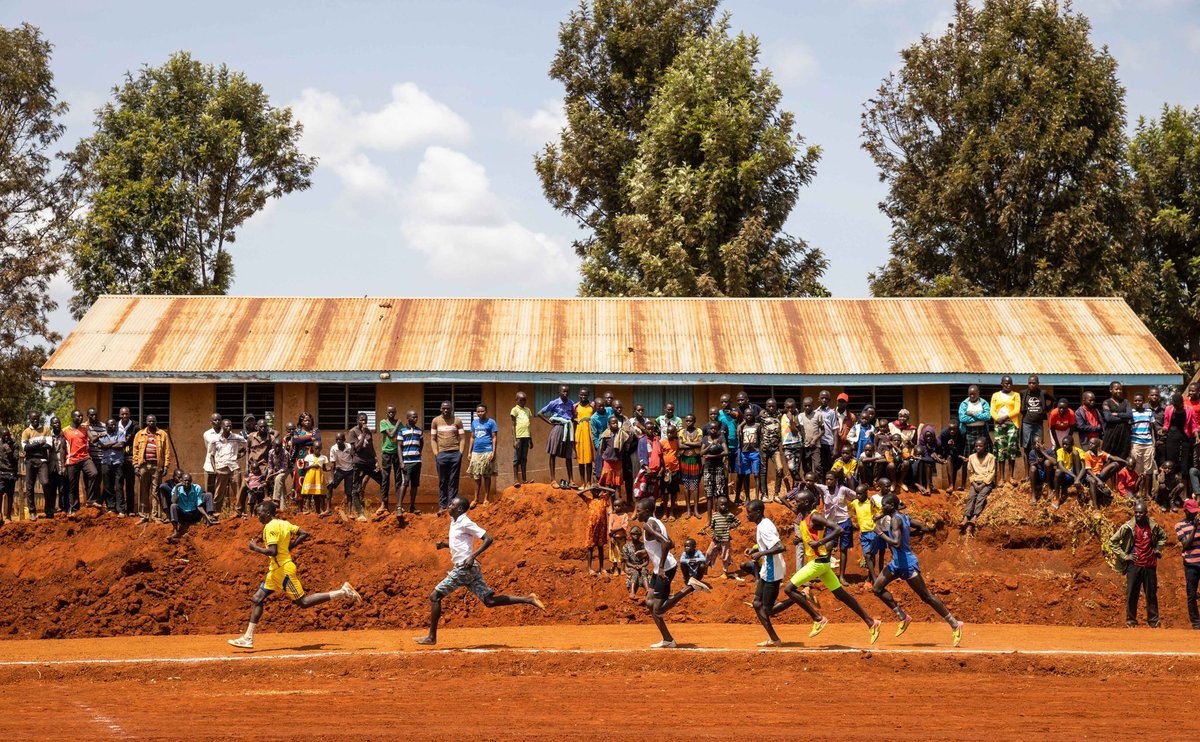
He also noted that construction on a sports complex will soon begin in Chemwania.
The project will cost 1 billion Ugandan shillings (about C$344,000), and it will be funded by the district’s local government and Global Sports Communication (the management agency that represents Cheptegei and Nakaayi). The complex will have a pool, a basketball court, a soccer field and a tennis court, plus it will be equipped 2,000 seats for spectators.
This is not the first time Cheptegei has looked to nurture young Ugandan athletes. In 2020, his foundation (the Joshua Cheptegei Development Foundation) started a kids’ run in Kapchorwa, with races open to children aged 16 and younger.
(03/03/2021) ⚡AMPby Ben Snider-McGrath
Paul Chelimo is chasing the American indoor 5,000m record this Thursday
If the Olympic silver medalist Paul Chelimo accomplishes his goal, he stands to be the first American man to run under 13 minutes in the indoor 5,000m.
The track meet is being staged by the American Distance Project with strict COVID-19 mitigation protocols, which means there will be no spectators, coaches or competitors outside the American Distance Project’s training group bubble.
The race is being held with the goal of chasing the Olympic and U.S. Olympic Trials qualifying time, as well as Galen Rupp’s seven-year-old indoor record of 13:01.26.
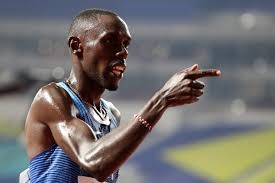
According to a press release on LetsRun.com, the meet will consist of just a 5,000m and a 10,000m race for both men and women, and will be held on Virginia’s new 200-metre hydraulically banked indoor track.
Athletes will also be using the Light Speed Pacing System, which is a wireless LED pacing that assists runners with setting target paces. Other athletes in the impressive field include Leonard Korir (13:15.45), and NCAA Champions Lawi Lalang (13:00.95 outdoor) and Anthony Rotich (13:31.95), among others.
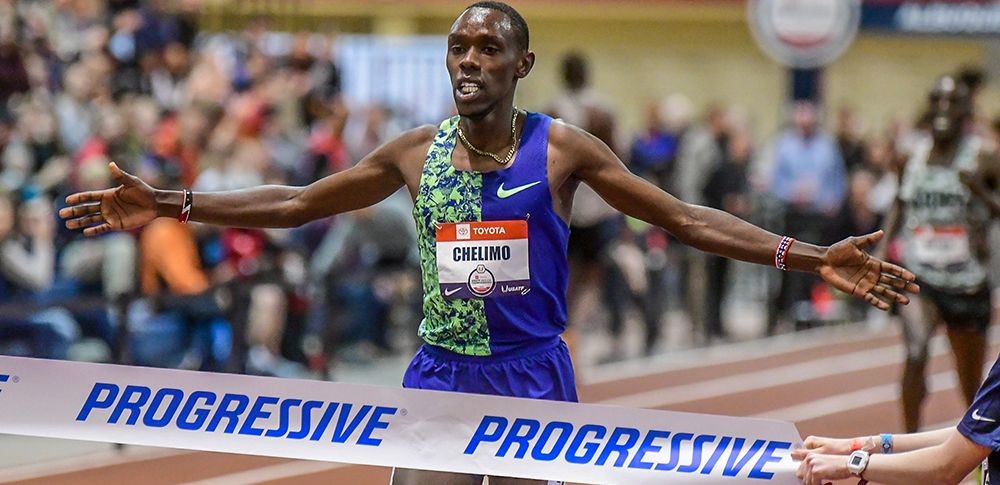
Chelimo is currently ranked sixth in the world in the men’s outdoor 5,000m and owns a PB of 12:57.55, which he set in 2018. Should he achieve his goal of breaking Rupp’s indoor 5,000m American record, that will put him in the top 10 in the world at the indoor event, along with world record-holder Kenenisa Bekele (who ran 12:49.6 in 2004), Haile Gebrselassie (12:50.38 from 1999) and four other men who have run under 13 minutes in the indoor 5,000m.
In order to run under 13 minutes, Chelimo’s pace will have to be less than 2:36 per kilometre, or 31 seconds per lap of the indoor track. With that in mind, the American record is certainly a lofty goal, but Chelimo must be in good shape if he’s planning on going after it.
In a short season that has been packed with incredible performances, this would be yet another record to add to the books, and the eyes of the track world will certainly be watching on Thursday to see if Chelimo gets the job done.
(03/03/2021) ⚡AMPby Brittany Hambleton
BAA is planning a smaller in-person Boston Marathon
The Boston Athletic Association announced Tuesday that the 125th running of the Boston Marathon this fall will be open to more participants than ever before.
However, the vast majority won’t be running the Oct. 11 race from Hopkinton to Boylston Street.
While announcing plans for an expanded virtual marathon, BAA officials revealed Tuesday that they’re planning to downsize the traditional race, which was tentatively pushed back to Oct. 11 due to the COVID-19 pandemic. Officials said the in-person field size has not been finalized, but that it “will be smaller than previous years in order to enhance participant and public safety.”
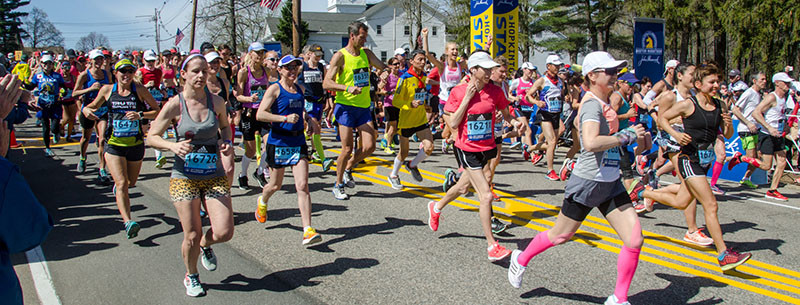
In recent years, the marathon — which was initially postponed and then canceled last year due to the pandemic — has consisted of upwards of 30,000 participants.
BAA officials said Tuesday they will try to keep the competition of the in-person field “as close to previous years as possible, with approximately 80% of the field being comprised of qualified entrants and 20% being comprised of invitational entries, including charity program runners.”

Additional details about the in-person race, “including registration dates, COVID-19 safety measures, and participant requirements,” will be released in the “coming weeks,” the BAA said.
Road races are in the second step of Phase 4 of the state’s reopening plan, along with bars, nightclubs, and amusement parks. And it’s unclear what restrictions or capacity limits they will be subjected to when Massachusetts moves forward to allow such events (some neighboring states, such as New Hampshire and Rhode Island, have allowed smaller races with social-distancing measures in place, such as staggered start times).
Last week, Gov. Charlie Baker announced that Massachusetts will enter the first step of Phase 4 of the reopening plan on March 22, allowing large arenas and stadiums to reopen at up to 12 percent of the maximum occupancy.
The news of the smaller in-person race Tuesday came as the BAA announced that a “virtual Boston Marathon” would be open to 70,000 registrants — more than double the size of the usual in-person field — on a first-come, first-serve basis.
(03/03/2021) ⚡AMPby Nik DeCosta-Klipa
Boston Marathon
Among the nation’s oldest athletic clubs, the B.A.A. was established in 1887, and, in 1896, more than half of the U.S. Olympic Team at the first modern games was composed of B.A.A. club members. The Olympic Games provided the inspiration for the first Boston Marathon, which culminated the B.A.A. Games on April 19, 1897. John J. McDermott emerged from a...
more...Alberto Salazar appeal takes place in Lausanne
Banned athletics coach Alberto Salazar's appeal against his four-year suspension will be heard by the Court of Arbitration for Sport (CAS) on Wednesday.
Salazar was found guilty of doping violations along with Dr Jeffrey Brown, who treated Salazar's athletes, after an investigation.

The 62-year-old's hearing will take place in Lausanne, Switzerland.
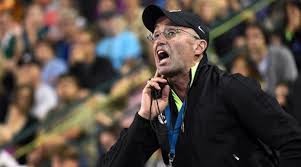
It was set for November but was pushed back because of the Covid-19 pandemic.
Salazar ran the Nike Oregon Project (NOP), based in Beaverton, Oregon. It was established in 2001 and was the home of British four-time Olympic champion Mo Farah, who was coached by Salazar between 2011 and 2017.
A BBC Panorama programme in 2015 focusing on Salazar and the NOP prompted a four-year investigation by the US Anti-Doping Agency (Usada) and a two-year court battle behind closed doors. It eventually resulted in bans for both Salazar and Brown, announced in October 2019.
(03/03/2021) ⚡AMPby BBC Athletics
Kengo Suzuki still in state of shock after setting Japan marathon record
A day after his blistering run at the Lake Biwa Mainichi Marathon, Kengo Suzuki was still coming to grips with his status as a new Japanese national record holder on Monday.
Suzuki surprised even himself by setting the national men’s marathon record of 2 hours, 4 minutes, 56 seconds in Sunday’s race along the shores of Japan’s largest freshwater lake in Shiga Prefecture.

“It’s slowly sinking into my head that I actually set a new national record,” Suzuki said in an online press conference.
“(The race) has done more damage to my legs than I had imagined, so I’m going to take some time to rest before I move on to my next goal,” he said.

Suzuki’s win made him the first Japanese runner to complete a sub-2:05 marathon. He was among the more than 300 men lined up to run the Lake Biwa Mainichi Marathon, one of the country’s most prominent races.
The unheralded Suzuki finished 12th in the same race last year, but this year he chopped more than five minutes off his previous personal best of 2:10:21, set in 2018.
Now the 25-year-old has set his sights on the 2024 Paris Olympics.
“(I still lack) the physical toughness to endure high-intensity training and the mental toughness to fend off (other runners’) attempts to unsettle me,” he said. “It’s important that I work out consistently every day.”
The previous national record of 2:05:29 was set last March at the Tokyo Marathon by Suguru Osako, who secured qualification for the Tokyo Olympics.
Kenya’s Eliud Kipchoge holds the official marathon world record of 2:01:39, which he set at the Berlin Marathon in 2018, as well as the unofficial world record of 1:59:40 from an event in Vienna, Austria, in 2019 held under several artificial conditions.
Suzuki believes himself capable of running a sub-2:04 marathon in the near future, provided he can steer clear of injury.
“I’m getting more comfortable with my marathon training program,” he said. “If I’m able to stay injury-free and I raise my fitness levels, then that time might just be reachable.”
Spectators at Sunday’s race were asked to refrain from cheering on the sidelines as a coronavirus countermeasure.
The event, first run in 1946 in Osaka, moved to Shiga in 1962. But top runners have recently been opting to run the Tokyo Marathon, held around the same time of the year and said to produce better records.
Toshihiko Seko, who booked his berth for the 1988 Seoul Olympics by winning that year’s Lake Biwa Marathon, said, “It was a fitting finale and wonderful. It was a history-changing race.”
(03/02/2021) ⚡AMPOsaka Marathon
In 2022 the Lake Biwa Mainichi Marathon and Osaka Marathon were held together. For 2023 the name of the marathon will be Osaka and both men and women can run the race. The original male-only competition was first held in 1946 and, having taken place every year since then, it is Japan's oldest annual marathon race. The early editions of...
more...Eating healthy breakfasts for weight loss
We hear it on the news everyday…breakfast is the most important meal of the day. Yet so many people skip breakfast, or if they do eat it, pick wrong. But breakfast doesn’t have to mean boring and tasteless! There are many delicious breakfast dishes out there that will kick-start your metabolism and your day like never before! So check out our list of six healthy breakfasts for weight loss now.
What Are The Benefits of Eating Breakfast?
At the point when you wake up in the morning, you might not have taken in anything for as long as 10 hours. Breakfast renews the stores of energy and supplements in your body. Some benefits are:
Essential vitamins, minerals, and nutrients to help start your day.
The energy required to power through the day.

Breakfast helps you control your weight.
A healthy breakfast may minimize the risk of illness.
Breakfast boosts brainpower.
Breakfast aids you to make better food choices.
A healthy breakfast can do even more to ensure you are healthy. Some of the breakfast healthy options are:
Oatmeal
Oatmeal is a great start to the day for many reasons. It’s extremely low in calories and carbohydrates, which makes it a great breakfast choice for those on a weight loss diet. The amount of fiber in oatmeal can keep you full until lunchtime, while also promoting heart health. Oatmeal also contains nutrients important for fighting high cholesterol, including oats antioxidants and soluble fiber.
French toast and muskmelon salad
French toast is a breakfast staple in many households. Sumptuous, comforting, and generally easy to whip up, there is very little that can beat this quintessential breakfast. Whether you prefer your French toast all spiced up with some nutmeg, served with powdered sugar, or dusted with cinnamon and sugar, French toast is an inexpensive and filling meal that’s always a hit. However, when you’re on a strict diet like a weight loss diet plan, you need to make sure that your meals are good for the body as well as satisfying the palate.
Fruit Smoothie
A fruit smoothie is rich in vitamins and a great way to start your day. The best part about this is it only takes five minutes. Any fruit can be used such as blueberries, strawberries, blackberries, raspberries, peaches, or bananas. Just add some fresh or frozen fruit to a blender along with your preferred amount of frozen yogurt. If you need inspiration on what to go with your fresh smoothie, you can find a website dedicated to such information. Mix one of these healthy fruit smoothie recipes with skimmed milk or water and plenty of ice for a refreshing breakfast that will kick start your metabolism.
Spinach Pancakes
Spinach pancakes are a power-packed nutritious breakfast for weight loss. They are a great way of getting lots of nutrients, omega-3 fatty acids, antioxidants, and protein all into your system in one meal. And if that wasn’t enough, you will also be giving your body a natural vitamin boost! Even better is the fact that you won’t have to put up with them tasting like green eggs and ham, because these spinach pancakes taste just like your regular pancakes. This recipe makes four servings which means you can prepare a batch for the next few mornings.
Mixed Sprouts
In the morning, the ideal breakfast is something that is quick and high in protein. What could be better than low-carb buckwheat crepes and mixed sprouts? Mixed sprouts are a good source of protein that will help you feel fuller for longer. They’re also a great option if you’re trying to get more essential amino acids into your diet. Your best bet is to get good quality sprouted beans and nuts, as these will be easier to digest than ones that have been left to sprout in water for too long.
Quinoa Pancakes
These gluten-free and low-carb quinoa pancakes are a great substitute for the flour variety. Not only do they allow you to consume whole grains, but the quinoa protein helps keep you feeling full and satisfied so you can resist snacking on less healthy foods. Quinoa is also full of many important vitamins and minerals that make it a very healthy food.
When it comes to maintaining a healthy lifestyle, the first step to getting in shape is eating right. Many people tend to skip meals when they are on a diet. That’s a very bad idea – you should follow a healthy eating plan, and that involves having breakfast. Eating breakfast is the best way to get your metabolism running and burn fat.
(03/02/2021) ⚡AMPby Colorado Runner
Tokyo 2020 new president is open to spectators at Olympic Games
Tokyo 2020 president Seiko Hashimoto is open to fans being allowed to attend the rescheduled Olympic and Paralympic Games this year, albeit in limited numbers.
Organisers, the International Olympic Committee and other bodies involved in the event are reportedly due to meet at some stage next week to discuss the possibility of whether spectators will be permitted at the Games, amid ongoing concerns surrounding the Covid-19 pandemic.
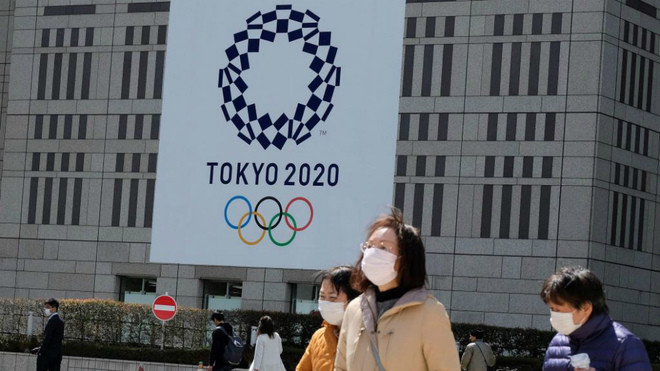
Any decision regarding spectators possible attendance will be made over two stages. The first will be to determine whether to allow foreign spectators at all — expected by the end of this month — before establishing how many fans could be permitted at various venues.
IOC president Thomas Bach revealed that a final decision could be made in either April or May, just a matter of months ahead of the scheduled start of the Games, taking place from July 23 to August 8.
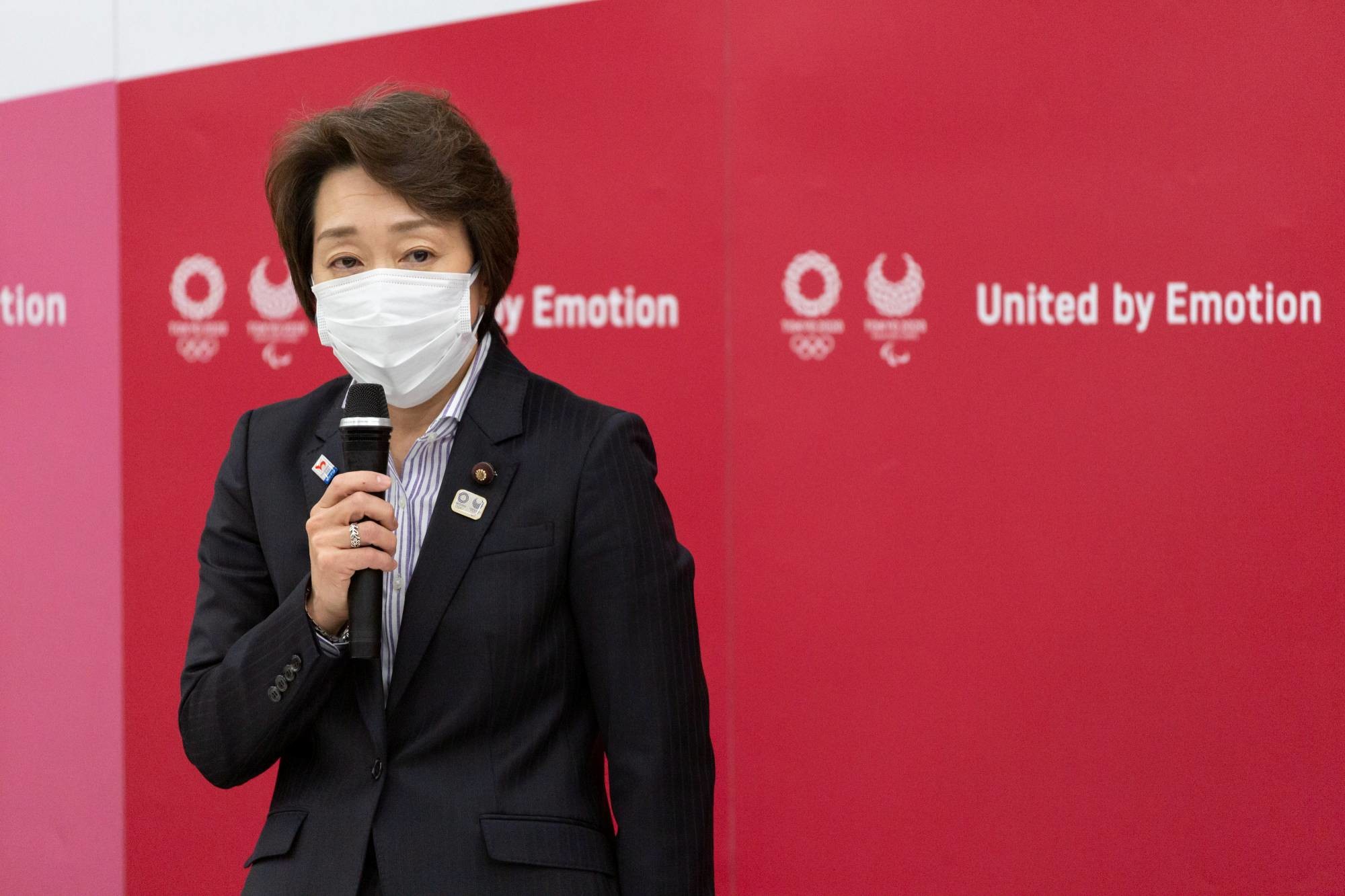
Hashimoto, who replaced Yoshiro Mori as head of the organising committee last month, told Japanese media that she believed the Olympic and Paralympic Games should be staged in front of spectators.
"When we think about the possibility of holding the Olympics without fans in the stands, athletes will definitely wonder why there are no fans just for the Olympics and Paralympics when other competitions are allowing in spectators," Hashimoto said.
"Everyone wants an early decision about the direction to be taken regarding fans to prepare tickets and hotel accommodations."
Meanwhile, IOC executive director for the Olympic Games Christophe Dubi said organisers "have to take the decision as late as possible but as early as needed" regarding spectators.
It has become increasingly likely in recent months that foreign fans will be prevented from attending events at the Games because of the pandemic.
Japan is fearful over large numbers of fans from across the world travelling to the country and potentially spreading the Covid-19 virus during the Games.
Capacities could also be restricted at Olympic and Paralympic events to limit the risk posed by the novel coronavirus.
(03/02/2021) ⚡AMPby Sam Murley
Tokyo 2020 Olympic Games
Fifty-six years after having organized the Olympic Games, the Japanese capital will be hosting a Summer edition for the second time, originally scheduled from July 24 to August 9, 2020, the games were postponed due to coronavirus outbreak, the postponed Tokyo Olympics will be held from July 23 to August 8 in 2021, according to the International Olympic Committee decision. ...
more...Grandma's Marathon has partnered with Crowd Science Expert in Planning 2021 Event
Grandma’s Marathon-Duluth, Inc. has partnered with world-renowned crowd scientist Marcel Altenburg of Manchester Metropolitan University to optimize the event’s participant flow as part of the organization’s COVID-modified race plan.
Altenburg has previously worked with larger marathons like London, Berlin, Chicago, and New York as well as other major marathons around the world. He has developed crowd science software called Start Right, which uses a unique mathematical algorithm to help race organizers visualize, predict, and control the flow of participants throughout the entire race.
“Grandma’s Marathon is unique in its setup and all measurements of the event are very fortunate,” Altenburg said. “With the right adjustments, this race can be organized with social distance in the place at the start, through the course, and at the finish.”
Grandma’s Marathon is planning a half capacity event, including but not limited to the following changes on race day:
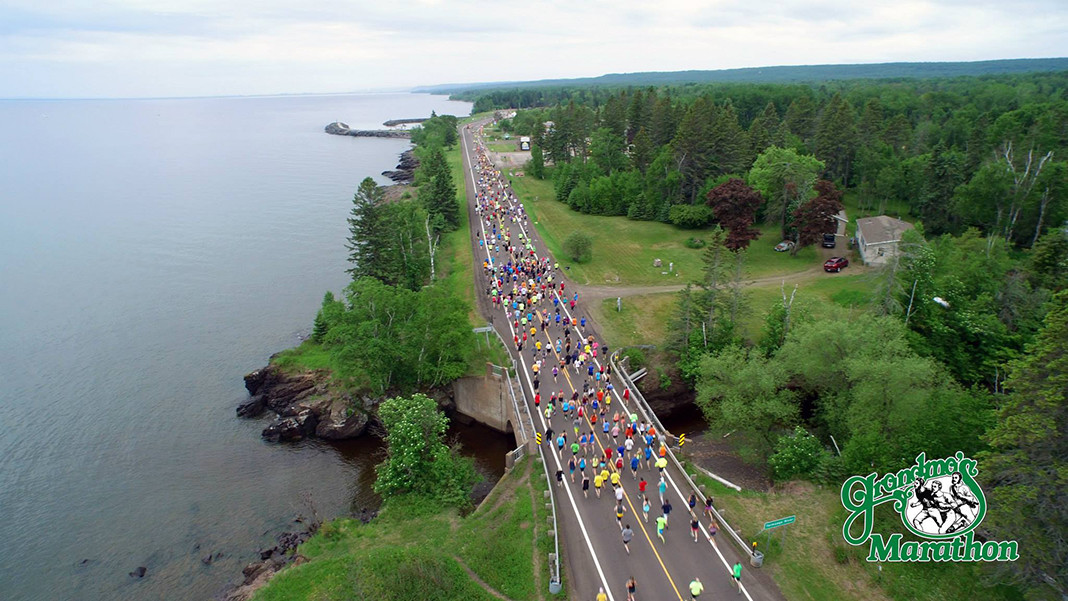
· Bus Transportation – Buses to the start line for the marathon and half marathon will allow a maximum of 25 participants, and all public transit safety guidelines will be in place. Participants will exit buses in a controlled fashion to ensure there is always adequate space in the start corral.
· Rolling Start Line – Participants will enter a start corral for both the marathon and half marathon, which will be spaced to allow for appropriate social distancing. Once in the corral, participants will immediately advance toward the start line. Participants will then be released from separated lanes in staggered fashion, five at a time, to control the flow onto the racecourse.

· Masks & Face Coverings – All participants, volunteers, staff, and others present will be required to wear a mask or face covering at all times other than while actively participating in a race. This includes but is not limited to on the bus, in the start corral, and after crossing the finish line.
Altenburg’s analysis of the current plan, with the above safety measures included, shows a decreased density that allows for a minimum of 12 or more feet of spacing between participants at all times during the race. In general, participants will have 20 feet of possible distance to other people at most points on the racecourse.
“Start Right is an amazing tool that is helping us plan an effective race weekend with confidence,” Grandma’s Marathon Race Director Greg Haapala said. “With this analysis, we know our racecourse and the established capacity limits allow for the appropriate spacing between participants, but we will still require everyone involved to act responsibly throughout the event.”
Altenburg’s model checks the participant density and spacing at all points along the racecourse, including the start and finish lines, aid stations, or narrow sections of roadway. At one of the highest density spots, the finish line, his analysis shows the 2021 plan decreases the peak by 64 percent from 2019.
“We measured the entire course and simulated every participant based on the specific data of the event,” Altenburg concluded. “The result is that Grandma’s Marathon is uniquely equipped to be among the first marathons to come back when the time is right.”
(03/02/2021) ⚡AMPGrandmas Marathon
Grandma's Marathon began in 1977 when a group of local runners planned a scenic road race from Two Harbors to Duluth, Minnesota. There were just 150 participants that year, but organizers knew they had discovered something special. The marathon received its name from the Duluth-based group of famous Grandma's restaurants, its first major sponsor. The level of sponsorship with the...
more...For the second year in a row, 500 Festival Mini-Marathon cancels in-person race
For the second year in a row, there will be no runners or walkers gathering downtown for the OneAmerica 500 Festival Mini-Marathon.
Organizers announced Monday that the Mini and Delta Dental 5K, scheduled for May 8, will instead become virtual races because of the pandemic. Registered participants will receive more details regarding options.
A news release from the 500 Festival said after input from health officials, medical experts and community leaders, a determination was made to amend the traditional format.
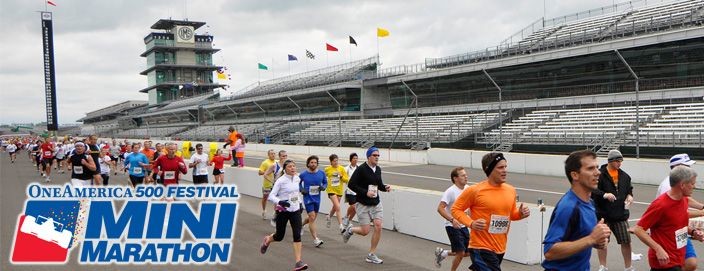
“Right now, the most important thing all of us can do is to support our local and state health officials and hospitals, as well as focus our efforts on positive community outcomes,” said Bob Bryant, president and CEO of the 500 Festival. “We will continue to work on the remaining 500 Festival month of May activities and look forward to participating in the events at the Indianapolis Motor Speedway culminating with the Indy 500.”
The virtual experience is to include:
>> A package including distance-specific finisher gear and runner’s service items delivered to participants.

>> Digital bibs, finisher certificates and access to a participant-only Facebook group
.>> A new Indy Mini app that serves as a center for GPS tracking, race results, announcements and real-time spectator tracking.
>> An interactive and virtual health and fitness expo.
The Mini is the largest fundraiser for the 500 Festival, reaching children through youth education and health programming.
(03/02/2021) ⚡AMPby David Woods
OneAmerica 500 Festival Mini-Marathon
The mission of the 500 Festival is to produce life-enriching events and programs while celebrating the spirit and legacy of the Indianapolis 500 and fostering positive impact on the city of Indianapolis and state of Indiana. As an organization providing multiple events and programs, many of which are free to attend and impact over 500,000 people annually, our mission to...
more...Athing Mu Runs 1:58.40 breaking NCAA & World U20 Records at 800 Meters
The magical freshman season of Texas A&M sensation Athing Mu hit a new high on Saturday evening as the 18-year-old clocked a stunning 1:58.40 at the SEC Indoor Track & Field Championships in Fayetteville, Ark., obliterating several records in the process.
Prior to tonight, no collegiate woman had run faster than 2:00.69 indoors (Jazmine Fray in 2017 for Texas A&M), but Mu went from 2:01.07 to 1:58.40 in a single race. She also took more than two seconds off the official world U20 record and 0.63 off Keely Hodgkinson‘s unratified 1:59.03 from earlier this year.
he time was also faster than Raevyn Rogers’ overall collegiate record of 1:59.10, set outdoors in 2017. And it also ranks Mu #2 on the all-time US indoor list at 800 meters, just behind Ajee’ Wilson’s American record of 1:58.29 last year. Mu is also now the 2nd fastest American U20 – just behind the 1:58.21 that Wilson ran to get 5th at Worlds outdoors in Moscow in 2013.

Mu made history by running a fearless race. With no pacemaker in the field, Mu went straight to the front, hitting 200 in 28.65, and coming through 400 in 57.96 — a remarkable split for an indoor race. Mu ran her third lap in 29.64 to hit 600 in 1:27.60, and though her final lap was by far her slowest — 30.81 — she held on for a stellar time.

This may have been the most impressive run of Mu’s young career, but it is far from the only one. Mu first made national headlines two years ago as a 16-year-old by defeating Rogers to win the 2019 US indoor 600m title, setting an American record of 1:23.57 in the process.
After graduating high school in 2020, Mu headed off to Texas A&M — following the same path of fellow US phenom Donavan Brazier — and her first season in 2021 has seen Mu reel off a string of terrific performances. On January 23, she ran 1:25.80 to break the collegiate record at 600 meters. The following week, Mu ran one of the fastest 4x400m splits ever (50.03) to anchor her Texas A&M squad to the win at Texas Tech. And a week after that, Mu ran 50.52, which broke the world U20 record of 50.82 set by future Olympic champion Sanya Richards-Ross. (That’s assuming the record is ratified; Sydney McLaughlin actually ran faster as a U20 athlete — 50.36 — but McLaughlin’s time was never ratified as a WR).
Mu will compete next at the NCAA Indoor Championships, also in Fayetteville, from March 11-13. Whether she chooses to run the 400 or the 800, she will be the favorite.
(03/01/2021) ⚡AMPby Jonathan Gault
How you can run in extreme weather conditions
World Athletics is just one organisation amongst many which has responded to the climate emergency by doing its bit to help secure a sustainable environment for future generations. There seems little doubt that climate change will have an impact on sport, and that sport can take steps to reduce its impact on the environment. Major running events such as the Paris and London Marathons already have commitments and policies in place on the environment.
Global warming is the major factor we associate with climate change, but extreme weather events are also becoming more common. The huge cold storm that swept across the southern USA last week, historic fires in Australia and California in recent years, and extreme flooding in the UK are just a few examples. Major and unexpected changes in the weather are something that we will have to prepare and be ready for. If you are a regular runner, how do you cope with such unpredictability? Running may be impossible in extreme weather, but if it is possible, there are a few simple ways to make it practical and enjoyable. Here are my tips:
Adjust your pace.
Exercising in extreme temperatures, especially hot weather, creates extra physiological load that your body has to cope with. So be ready to run slower, and use perceived effort rather than pace as your guide. Similarly, very strong winds will render your pace difficult to judge. I remember running along the Tamagawa River in Tokyo during the “Haru Ichiban” – the first very strong winds of the spring. My headwind and tailwind splits were simply meaningless. Sometimes, leave your watch at home!

Kit and equipment.
Having suitable kit at home for extreme weather is a relatively easy win. Even if you don’t use it often, having clothing for very hot and very cold temperatures to hand when you need it will make training much more enjoyable. The same applies to self-care for after training – electrolyte drinks, shade, a hot bath, insulated clothing. Any number of these items will help you recover.
Change your warm-up.
This applies to training and racing. In very hot weather, the bare minimum will suffice for a warm-up, to avoid unnecessary increases in your body temperature. Similarly, a longer warm-up may be needed in cold weather to ensure you minimise any injury risk. I remember doing only a few minutes’ warm-up before racing marathons in summer championships.

Use it as a dress rehearsal.
Training in extreme weather can bring valuable learning, experience and familiarity for times when you have to race in similar conditions. I always saw races in extreme weather as positive opportunities since the playing field is levelled – if I was very well prepared, and my rivals were sloppy, that was to my advantage. You can’t easily practise for racing in extreme conditions without those same conditions being available for training, other than in a laboratory or other artificial environment. Freak weather for periods of training is a gift that can be made good use of!
Take a break.
Enforced rest can be a blessing. If the weather is so bad that you simply cannot train outdoors, sometimes just give yourself a day off rather than cross-training or running indoors on a treadmill. Now and again, being forced to have a rest can bring positive effects for recovery and long-term consistency.
Help the rescuers.
If, heaven forbid, you end up in serious trouble, life for you and anyone who helps you will be so much better if you have prepared for such an eventuality in advance. For example, always train with personal identification and emergency contact numbers; and always complete the emergency medical information on the reverse of your bib before races.
Extreme weather events make running tricky, but climate change means they will become more common. Taking even small steps to prepare for these events can make a world of difference.
(03/01/2021) ⚡AMPby World Athletics
Olympian Molly Seidel wins Atlanta Half Marathon
Boston-area resident Molly Seidel won the Atlanta Half Marathon on Sunday, crossing the finish line of the 13.1-mile race with a time of 1:08.29.
Seidel, a Wisconsin native who lives with her sister in Cambridge, qualified for the postponed 2020 Tokyo Olympics by placing second in the event last year. The Olympics were later postponed due to the COVID-19 pandemic and are now scheduled to begin on July 23.

The conditions were cold and humid in Atlanta, but Seidel told the Boston Globe the humidity was good practice for Tokyo.

“It was really cool to be back here a year later under different conditions, but it’s always special to return to the place that it happened,” Seidel told the Globe.
Seidel will now begin a 12-15 week training regime for the Olympics. In September, she told ESPN she traveled to Flagstaff, AZ to train in preparation for altitude, and she used the additional time to “to gain more experience, train for an extra year, nail down my nutrition and run another marathon.”
Seidel competed in the London Marathon in October. She finished sixth overall and was the second-fastest American woman across the finish line with a time of 2:25.13.
(03/01/2021) ⚡AMPby Tom Westerholm
Publix Atlanta Half-Marathon & 5K
The course starts and finishes just outside of Turner Field. The 13.1 mile course gives participants a taste of Atlanta, running past sites such as Centennial Olympic Park, Atlantic Station, Piedmont Park, Oakland Cemetery and of course the Olympic Rings. The Atlanta Halloween Half Marathon & 5K features 13.1 & 3.1 miles of costume fun! This event is more about...
more...Jamaican sprinter Yohan Blake says that he would rather miss Tokyo Olympics than have Covid-19 vaccine
Blake - a two-time Olympic gold medallist and former 100m world champion - made the comments in Jamaican newspaper The Gleaner.
Earlier this month, the International Olympic Committee (IOC) announced that receiving a vaccine would not be compulsory for athletes and officials to attend this summer’s delayed Games, though they still encouraged competitors to be vaccinated if possible before arriving in Japan “to contribute to the safe environment of the Games.”

“Also out of respect for the Japanese people, who should be confident that everything is being done to protect not only the participants, but also the Japanese people themselves,” the IOC said.

Speaking over the weekend, Blake was quoted as saying: “My mind still stays strong, I don’t want any vaccine, I’d rather miss the Olympics than take the vaccine, I am not taking it.
“I don’t really want to get into it now, but I have my reasons.”
“Follow your mind, don't follow the crowd," Blake said in a video posted to Twitter on Saturday.
"At the same time, be respectful to each and every one. Don't let no one take away your choice."
The Jamaican government is expected to receive its first shipment of the vaccine next week, The Gleaner reported.
Blake's remarks came after a series of eight meets were held across the Caribbean island nation on Saturday, marking a return to large-scale sporting events that had been on hold due to the pandemic.
The Olympics, which were pushed back by a year due to the global health crisis, are set to begin on July 23 though speculation remains the event might yet be cancelled due to the ongoing pandemic.
(03/01/2021) ⚡AMPby George Flood
Tokyo 2020 Olympic Games
Fifty-six years after having organized the Olympic Games, the Japanese capital will be hosting a Summer edition for the second time, originally scheduled from July 24 to August 9, 2020, the games were postponed due to coronavirus outbreak, the postponed Tokyo Olympics will be held from July 23 to August 8 in 2021, according to the International Olympic Committee decision. ...
more...USATF flips order of 5k/10ks at Olympic Trials. Why did they do this and who is it benefitting?
USA Track & Field (USATF), the United States Olympic & Paralympic Committee (USOPC), and the TrackTown USA Local Organizing Committee announced the release of the updated competition schedule for the 2020 U.S. Olympic Team Trials – Track and Field, that will take place June 18-27, 2021, at Hayward Field in Eugene, Oregon.
The updated schedule, in its entirety below, slightly differs from the schedule announced in 2020 with date changes for the men’s and women’s 5000m and men’s and women’s 10,000m.
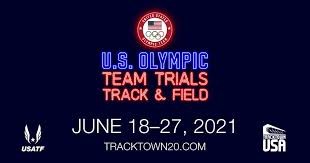
Men’s shot put qualifying at noon local time on Friday, June 18 is the first official U.S. Olympic Trials – Track and Field event at the new, state-of-the art Hayward Field. The final is later that evening, as well as qualifying for women’s discus, women’s high jump and triple jump, the women’s 1500m, along with the men’s 10,000m final to close out the first day.
The men’s decathlon bursts from the blocks on June 19, along with finals in the women’s discus and 100m rounding out the evening.
The opening weekend awaits the winner of the men’s decathlon, along with finals in the men’s and women’s 400m, the women’s 100m hurdles, men’s 100m final and field event finals in the women’s high jump and triple jump.
The events on Friday, June 25, bring qualifying in the men’s 200m and women’s 800m and the men’s discus throw and 3000m Steeplechase final.
On the final day, June 27, the women’s heptathlon champion is set to be crowned, along with a slew of other finals including the men's 200m and women’s 400m hurdles.
Tickets for the 2020 U.S. Olympic Team Trials are currently in a holding pattern due to the uncertainty of the COVID-19 landscape. The local organizing committee, TrackTown USA, is working diligently with public health officials on plans for the event, and updates on ticketing will be announced as soon as possible. Changing ticket orders or purchasing tickets are not possible at this time. Ticket holders with questions may contact the local organizing committee directly at info@gotracktownusa.com.
The 2020 U.S. Olympic Team Trials – Track & Field will be broadcast on NBC and its local affiliates. Broadcast information to be released at a later date. For the full competition schedule and athlete information, see the event page here.
Here are the changes.
Women's 10k initially scheduled for day 1 moves to day 9.
Women's 5k initially scheduled for days 7 and 10 moves to 1 and 3.
Men's 10k initially scheduled for day 7 moves to day 1.
Men's 5000 initially scheduled for days 1 and 4 moves to days 7and 10.
(02/28/2021) ⚡AMPby USATF
Kengo Suzuki clocked 2:04:56 National Record to Win final Lake Biwa Mainichi Marathon
Set to be absorbed into the mass-participation Osaka Marathon as its elite men's field next year the same way the old Tokyo International Marathon was swallowed whole by the Tokyo Marathon, the Lake Biwa Mainichi Marathon wrapped its 76 years as a freestanding event with a bang, a big one, Sunday in Otsu.
Everything was on. The conditions were good, light clouds, 7ËšC, 57% humidity and light breezes at the start. The field was good, 24 men having run sub-2:10 in the last three years and 52 sub-2:12. The pacing was good, the lead trio of pacers hitting almost every split within a couple of seconds of the target 2:58/km and the second group pacers even closer to the 3:00/km target. The shoes were good, across brands.

30 or so people went out on pace to go under the 2:05:29 national record in the first group, with what looked like about a hundred on mid-2:06 pace in the second group. Everything went smoothly and steadily, nature taking its course and whittling down both groups until there were only 12 left up front and a couple of dozen in the second group at 25 km when most of the pacers stepped off. Just past that point, Hiroto Inoue (Mitsubishi Juko), the second-fastest man in the field at 2:06:54, made a surge to break away. Lone remaining pacer James Rungaru (Chuo Hatsujo) took his time reeling Inoue back in, just five others still with him when he regained contact 3 km later.
When Rungaru stopped at 30 km past Ageo City Half Marathon winner Simon Kariuki (Togami Denki) took over with five Japanese men, Kengo Suzuki (Fujitsu), Hidekazu Hijikata (Honda), Shuho Dairokuno (Asahi Kasei), Masato Kikuchi (Konica Minolta) and Inoue, strung out single-file behind him. Kariuki slowed slightly to 2:59-3:00/km, but even so Dairokuno, Kikuchi and Inoue started to strain and lose touch. Suzuki and Hijikata, on the other hand, were even smoother and calmer than Kariuki, staying right there behind him.
The only changes until just after 36 km were the gap between the front and back trios widening and Suguru Osako's NR starting to slip out of reach. But at the 36 km drink station Suzuki made his move, one that will be studied for years to come. As they approached the #6 special drink table where Kariuki's bottle waited, Suzuki pulled out from behind him to his right. Just as Kariuki looked to his left to grab his bottle Suzuki attacked, and when Kariuki looked back up the gap was already about 5 m.
It was brilliant. And Suzuki, the 2017 National University Half Marathon champ in 1:01:36 and 2017 World University Games half marathon silver medalist and who made a similar move near 20 km in the MGC Race Olympic trials that ultimately helped his older teammate Shogo Nakamura win, was just getting going. For almost every one of the final 6 km he split in the 2:51~53/km range, bringing the NR back into sight, then 2:05:15, then 2:05:00.
With a final surge in the last 200 m of the track he stopped the clock at 2:04:56, the first Japanese man to break 2:05, 1:17 under former world record holder Wilson Kipsang's course record, and a PB by 5 and 1/2 minutes. "I didn't expect this kind of time at all," he said post-race. "In my other marathons to date I've slowed down in the last part, so the focus today was on finishing hard. I knew that was the right time to make my move." Still just 25, Suzuki's career goal is the Paris Olympics. Unluckily for him, the Project Exceed 100 million yen bonus program for a new national record has already run out. Let's hope he's got another chance to earn that kind of payday before Paris.
Behind him, Hijikata, only 23 and running just his second marathon after a 2:09:50 debut in Tokyo last year right before his graduation from Koku Gakuin University, dropped Kariuki for 2nd in 2:06:26. Likewise doing his second marathon after a 2:28:47 debut at Lake Biwa last year, 25-year-old Kyohei Hosoya (Kurosaki Harima) ran almost perfectly even splits, going through halfway in 1:03:21 to come up from the second group and run down Kariuki, Inoue, Dairokuno and half marathon NR holder Yusuke Ogura (Yakult) for 3rd in 2:06:35. Both Inoue and Ogura held on for sub-2:07 PBs, Inoue 4th in 2:06:47 and Ogura 5th in 2:06:51.
And behind them, the hits kept coming. 10 men ran 2:07. 13 ran 2:08. 14 ran 2:09. Almost all were PBs or debuts. 28 men sub-2:09, 42 sub-2:10. 174 men sub-2:20, the most ever, anywhere, by a long shot. With no Beppu-Oita, Nobeoka or Tokyo this season that may have been a factor of Lake Biwa being the only game in town, but still, can you believe those numbers, even with the usual Japanese depth? With the shoes these days times might not be worth what they used to be, but even if you factor in a couple of minutes this was about as good a demonstration of the sheer depth of quality of the marathon development system here as you could ask for.
And between that and a great race up front it was the perfect sendoff for Japan's oldest marathon before it disappears next year into the maw of Osakan modernity. Farewell, Lake Biwa. Long may you run.
(02/28/2021) ⚡AMPOsaka Marathon
In 2022 the Lake Biwa Mainichi Marathon and Osaka Marathon were held together. For 2023 the name of the marathon will be Osaka and both men and women can run the race. The original male-only competition was first held in 1946 and, having taken place every year since then, it is Japan's oldest annual marathon race. The early editions of...
more...The Six-Mile Central Park Loop Has Been Renamed After Running Pioneer Ted Corbitt
“The Father of Long-Distance Running” receives a much-deserved honor.
Central Park has long played a significant role in New York City’s running culture. Runners who visit the city carve out time for a few miles in the famous park. Those who call New York City home circle the loops during long runs. It is home to the New York City Marathon finish line.


And now, the most famous running loop within the 51-blocks long park is named after running pioneer and Olympian Ted Corbitt.
The six-mile route—now called the “Ted Corbitt Loop—will feature six landmark street signs commemorating Corbitt along the path, and will have a NYC Parks-branded sign at the base of Harlem Hill at 110th St. and Adam Clayton Powell Boulevard in Harlem.
“As an avid runner, I am incredibly proud to commemorate the contributions of a man that inspired me and countless others to push through boundaries and live more abundantly,” NYC Parks Commissioner Mitchell Silver said in a statement. “It is an honor to celebrate Black History Month this year by shining light on Ted Corbitt’s influence and advocacy for underrepresented groups in running and beyond. May his legacy and pioneering spirit live on to inspire the next generation of runners to strive for greatness, progress, and peace.”
The move comes as NYC Parks continues to work toward ending systemic racism and providing a better representation of all races. Part of that is honoring Corbitt, a true pioneer of the sport who earned the title, “the father of long-distance running.”
In a 50-year running career, Corbitt ran 199 marathons and ultramarathons. He was the first Black American to represent the U.S. in the Olympic marathon in 1952, and he wore the No. 1 bib in the first-ever NYC Marathon in 1970. He was the founding president of NYRR and was an inaugural inductee into the National Distance Running Hall of Fame. These are still only some of his accomplishments.
His legacy is one that should be heralded in the Mount Rushmore of running. His name on the famous Central Park loop is a start.
“My father and other men and women volunteers worked tireless hours to help invent the modern day sport of long distance running,” Corbitt’s son Gary Corbitt said in a statement. “Many of the innovations in the sport were started in New York during the 1960s and early 1970s. This naming tribute celebrates all these pioneers.”
(02/28/2021) ⚡AMPby Runner’s World
There’s New Research on Intermittent Fasting—Here’s What It Means for Runners
While it could take some trial and error, it may be worth experimenting to figure out if this eating plan works for you.
A small study of 23 runners suggests that while intermittent fasting can reduce body mass, it does not impact running performance.

That doesn’t mean runners shouldn’t give intermittent fasting a try—you just have to find the schedule that works best for you, which could take some trial and error.
If you notice your sleep quality, mood, digestive health, work focus, and overall feelings of wellbeing take a dip, this may not be the right eating plan for you.
Intermittent fasting has been highlighted for its advantages—studies show how this way of eating can affect metabolic health, cardiovascular function, and even longevity—but can it make a difference in your running performance? New research in Medicine & Science in Sports & Exercise suggests this type of time-restricted eating may have some benefits.
Researchers looked at 23 male runners who were assigned to either their usual dietary intake or eight weeks of time-restricted eating on a 16:8 schedule, which means they consumed all food within an eight-hour window each day. The remaining 16 hours also included sleep time.
All participants did an exercise test before and after the two-month timeframe, and also provided blood samples. Researchers assessed their running economy, maximal oxygen uptake, and glucose, insulin, and triglyceride concentrations.
They found that fasting resulted in reduction in body mass, but didn’t show differences in any other variables. Researchers concluded that the body mass loss was likely related to lower calorie intake in the time-restriction group, but that fasting didn’t change their overall running performance.
Does this mean if you want similar results, you should adopt the 16:8 strategy? Some experts say maybe—but their advice is to play around with different eating schedules first.
“There are a breadth of approaches for time-restricted eating, and you really do have to experiment to find the right fit for you,” Luiza Petre, M.D., cardiologist and assistant clinical professor at The Mount Sinai School of Medicine, told Runner’s World. She does intermittent fasting herself, and recommends the tactic to patients.
For example, in addition to 16:8 there are strategies like 5:2, which involve eating normally for five days of the week and practicing significant calorie restriction or fasting on the other two (non-consecutive) days of the week. Some people do better with a 1:1 approach instead, with calorie restriction or fasting every other day, or at the other end of the spectrum, with fasting one day a week.
“Try something for two weeks,” Petre said. “Pay attention to how you feel and especially how it might affect your energy levels and running performance. Ideally, jot it down so you can begin to pinpoint what helps you.”
Also take note of other factors like sleep quality, mood, digestive health, work focus, and overall feelings of wellbeing, added Jason Fung, M.D., author of The Complete Guide to Fasting.
“If you’re really struggling, then that’s not the plan for you,” he told Runner’s World. “Remember, just because it might work for everyone in your running group doesn’t mean you’re doing it wrong. It just means you need a different schedule.”
One caveat, Fung added, is that you need to make sure you’re eating normally within your non-fasting hours. The misstep some people make is thinking they need to “load up” during that time or eat less-than-healthy choices, which can result in a binge mentality. Instead, see it more as a tweak to your eating schedule than an overhaul, he suggested.
With that in mind, even if you decide not to do intermittent fasting at all, it’s likely the effort will make you pay more attention to what you eat and how those foods affect you, Fung added. That can be valuable intel as you continue to shift toward healthier eating habits that are tailored to your needs.
(02/28/2021) ⚡AMPby Runner’s World
3 Key Reasons Why Records Keep Getting Broken in 2021
It’s not just the shoes. But they certainly help.
The times have been spectacular across the globe.

In Europe, four men broke the previous world half marathon record in December in Valencia, Spain. Earlier this month, Gudaf Tsegay of Ethiopia set a world record for the indoor 1500 meters on February 9, running 3:53.09 at a meet in Liévin, France.
Closer to home, Americans Sara Hall, Keira D’Amato, Martin Hehir, and Noah Droddy reshuffled the list of top 10 Americans in the marathon.
On the track, Donavan Brazier, Bryce Hoppel, Elle Purrier, and Grant Holloway have set American or world records.
High school and college athletes are in on the action, too. Hobbs Kessler set the high school indoor mile record with his 3:57.66, and Cooper Teare of the University of Oregon took almost 2 seconds off the collegiate mile record when he ran 3:50.39. Athing Mu at Texas A&M, who was thought to be an 800-meter runner, has been turning in world-class 400-meter splits and anchored her teammates to a collegiate record in the 4x400 meters.
What’s going on with all these fast times? Yes, there is new shoe technology, but it goes well beyond that for these record-shattering runners.
Shoe technology that changed road racing is now changing track racing
Back in 2017, when Eliud Kipchoge attempted for the first time to break two hours in the marathon on a racetrack in Monza, Italy, he wore a new type of shoe from Nike, the Zoom Vaporfly Elite. The shoes promised a 4 percent efficiency benefit, through a combination of a new type of foam, which was lighter and more responsive than previous foams, and a stiff carbon fiber plate to stabilize the foam and move the foot as it pushes off the ground.
Nike’s innovative design has evolved since 2017 and has been emulated, with varying degrees of success, by other shoe brands, like Saucony and Adidas. Now the same technology—better foam with a stiff plate inside—has moved into track spikes, said Geoff Burns, a post-doctoral fellow at the University of Michigan who is researching biomechanics and sport performance.
“The absolute effect may be a little bit smaller,” he said. “But because of the controlled environment and frequency of racing on a track, it’s much more apparent.”
Burns said that although Nike’s competitors are closing the gap, he hesitates to say that they’ve caught up. He praises Adidas and Saucony road shoes, and Adidas and New Balance for track spikes. “But if I were getting on a starting line, for a marathon or a track race, I would be in the Nike shoes,” he said.
Races are set up in near-perfect conditions
With the pandemic, the traditional lineup of road races and track meets has gone out the window, as race organizers have grappled with how to stage events safely.
In their place, pro runners, needing to race, have turned to time trials. And many of these are set up according to exact specifications.
Take The Ten, a track meet on February 20 in San Juan Capistrano, California. In two 10,000-meter track races, athletes—almost exclusively from the Bowerman Track Club in Portland, Oregon—were paced to try to get the Olympic standard in the event, which is 27:28 for men and 31:25 for women.
In the women’s race, Vanessa Fraser and Courtney Frerichs (the American record holder in the steeplechase), set a perfect pace, running 74- or 75-second laps. Fraser led for the first two miles, Frerichs took over and set the pace through four miles, 16 of the 25 laps. Her teammates could turn off their brains and follow behind. In the end, Elise Cranny won in 30:47 and five women hit the standard, four from Bowerman plus Eilish McColgan of Great Britain. The results of the men’s race were similar: Evan Jager and Sean McGorty paced, Marc Scott won in 27:10, and five runners achieved the Olympic standard.
“We are fortunate to have [teammates] who can pace a race for three or four miles,” said Marielle Hall, a Bowerman runner who finished fifth in 31:21. “That doesn’t happen that often. We’re pretty lucky.”
The Marathon Project, on December 20 in Chandler, Arizona, was similar in some ways. Organizers picked a perfectly flat U-shaped loop. Runners went up one side of a 2.1-mile stretch of road and back down the other. Pacers for the top men and women kept a steady pace through 18 miles. In the end, Martin Hehir ran 2:08:59, and Sara Hall ran 2:20:32. Hehir is now eighth on the list of fastest U.S. marathoners; Hall is second among women.
Athletes have benefited from long training blocks—and now they’re itching to race
In a typical season, many college runners race too frequently. They compete in three seasons—cross country, indoor and outdoor track. They might travel the country every other week, chasing top-level competition and in track, qualifying marks for nationals.
But that’s not the case this year. Last March, just as the pandemic was spreading across the country, the NCAA canceled indoor nationals. (Many athletes were already at the meet.) The outdoor season was quickly called off, and the cross-country season, which was supposed to happen in the fall of 2020, was pushed to winter.
The result? College runners have had long blocks of uninterrupted training time with little or no racing outside of team time trials. They’re eager to race again, and they’re reaping the benefits of the extended period of training.
Pros, too, may have benefitted from less racing than usual. And many have the feeling that finally, now that racing is back in some form, it’s time to run fast, especially in the buildup to the Olympic Trials. “The pent-up demand to have races — that definitely has something to do with it,” said Mark Coogan, coach of Team New Balance Boston, who coached Elle Purrier to a 9:10.28 American record in the two mile on February 13.
In a sense, track athletes have been forced to train as marathoners do, with long blocks of dedicated training toward one event, Burns said. “I think there could be enormous gains to track and field performances by taking the same approach: Hunker down and focus.”
Marielle Hall said that training and limited racing through the pandemic has been “all been just one giant experiment.” Bowerman workouts, designed by head coach Jerry Schumacher, are getting harder. Splits they aim for during interval workouts are faster. They do more reps. “Those kinds of things are constantly evolving, changing to fit people’s new fitness level,” she said. “It looks a lot more effortless than it is.”
(02/28/2021) ⚡AMP
by Runner’s World
UTMB announces stacked fields for 2021 races
The 2021 edition of the Ultra-Trail du Mont-Blanc (UTMB) is still months away, but the fields for the August race are officially set. After UTMB organizers cancelled their event in 2020 due to COVID-19, any race would have been exciting to watch this year, but fans will be treated to a pair of stacked lineups in the men’s and women’s fields. With six former UTMB champions and many other world-class runners set to race in Chamonix, France, later this year, the storied 170K ultramarathon looks like it will be can’t-miss action.
The women’s race

Former UTMB champs Courtney Dauwalter of the U.S. and Francesca Canepa of Italy headline the women’s race. Dauwalter is the reigning UTMB champion after her win in 2019, which was her first time running the race. She is widely recognized as one of the best ultrarunners on the planet, and she will be extremely tough to beat in Chamonix.
RELATED: UTMB adds to international race lineup with Thailand ultramarathon
Canepa won the women’s UTMB crown in 2018, and she also placed second in 2012. Other former top UTMB finishers on the start list for 2021 include Japan’s Kaori Niwa (fourth in 2017 and the winner of the 2019 Oman by UTMB 170K ultramarathon), Uxue Fraile Azpeitia of Spain (three-time UTMB podium finisher) and Beth Pascall of the U.K. (fourth- and fifth-place finishes in 2018 and 2019).
Multiple world record holder Camille Herron is also set to race in Chamonix. She has won ultramarathons around the world, including the Comrades Marathon in South Africa in 2017 and the Tarawera 100-miler in New Zealand in 2019, and she certainly has what it takes to win or place high in the overall UTMB standings.
Ailsa Macdonald is the lone Canadian in the elite UTMB women’s field. With big results like her wins at the Golden Ultra in B.C. in 2018 and the Tarawera 100 in 2020, Macdonald is another podium threat. She also has experience in Chamonix, having placed sixth in the UTMB’s CCC 101K ultra in 2019.
The men’s race
On the men’s side, there are four former UTMB winners: Pau Capell of Spain (winner in 2019) and French athletes François D’Haene (won in 2012, 2014 and 2017), Ludovic Pommeret (won in 2016) and Xavier Thévenard (won in 2013, 2015 and 2018). The past eight UTMB crowns belong to these four men, and they’re all capable of extending that streak to nine straight this year.
Jim Walmsley and Tim Tollefson are the top two American hopes on the men’s side. Tollefson made the UTMB podium in 2016 and 2017 with a pair of third-place finishes, while Walmsley has only raced in Chamonix once, running to fifth place. As Walmsley showed recently in a 100K world record attempt (he ran 6:09:26, missing the record by 12 seconds), he is in incredible shape this year, and while August is still months away, he has to be considered a favourite.
Also on the start list is the U.K.’s Damian Hall, who finished in fifth at the 2018 edition of UTMB. Hall is coming off a fantastic year of running that featured several prominent FKTs, and although he hasn’t raced in a while, he shouldn’t be counted out come August.
Finally, Canada will be represented by Mathieu Blanchard. Born in France, Blanchard now lives and trains in Montreal. He has raced in Chamonix before, running to a 13th-place finish in 2018, and in 2020 he ran onto the podium at the 102K Tarawera Ultra race.
UTMB is set to run from August 23 to 29, 2021.
(02/27/2021) ⚡AMPby Running Magazine
Study finds 20% of people are genetically resilient to the cold
Have you ever wondered why some people can walk out in a t-shirt when it’s -15 C while others start shivering as soon as the temperature drops into the single digits? A new study published in the American Journal of Human Genetics may finally have your answer. Researchers have found that people lacking a certain protein in their muscles are more resilient to the cold, and interestingly enough, this genetic mutation may also give you a higher capacity for endurance athletics.
In the study, 42 men between the age of 18 and 40 sat in cold water (14 C) until their body temperature had dropped to 35.5 C. While the participants were submerged in the water, researchers used electromyography to measure their muscle electrical activity, and took biopsies of their muscles to observe their protein content and fibre-type composition.

The results found that people who lacked the protein α-aktinin-3 were better at keeping warm and, from an energy perspective, were better at enduring a toucher climate. This protein is found only in fast-twitch muscle fibres, and is lacking in about 20 per cent of the population. Its absence is due to a genetic mutation, and scientists believe that the presence of this mutated gene increased when humans migrated from Africa to colder climates in central and Northern Europe. According to the authors of the study, this is the first direct experimental evidence that this gene provides resilience to the cold.
“We here show an improved body temperature defence during cold-water immersion in humans deficient of the sarcomeric protein α-actinin-3 expressed in fast-twitch skeletal muscle,” they said in their report.
The participants who lacked α-aktinin-3 had a greater proportion of slow-twitch muscle fibres, and their genetic mutation allowed them to maintain their body temperature in a more energy-efficient way while their body was cooling. They also shivered less, which is a reaction activated by fast-twitch fibres, and instead increased the activation of slow-twitch fibres that produce heat by increasing baseline contraction.
What does this mean for runners?
The authors also noted that people who lack α-aktinin-3 rarely excel at sports that require explosive power or strength, likely because they have fewer fast-twitch muscle fibres. These people tend to have a greater capacity for endurance sports, which is not surprising since endurance athletes tend to have more slow-twitch muscle fibres. Of course, there are other factors that can affect your body’s ability to handle cold, so not every runner is going to thrive in cold conditions, and being a runner doesn’t automatically mean you have this genetic mutation (nor does having it mean you’ll be a better distance runner). Even if you are a dedicated runner, you still only have a one in five chance of lacking α-aktinin-3.
So if you’re one of the lucky ones who doesn’t mind the cold, maybe you have this genetic mutation. The rest of us will just continue to bundle up and wait for summer.
(02/27/2021) ⚡AMPby Running Magazine
61-year-old tops Strava mileage in 2020, runs more than 12,000 kilometres
While Simon doesn’t have a decades-long run streak, he is extremely consistent with his runs, and he knocks out a 20-mile (32K) run most days. When he started running, he struggled through a couple of miles, but he quickly worked up to 15 to 20 miles a day. He admitted that he’s much slower now (his 20-milers used to take two to three hours, but today he’s on the road for closer to five), but that doesn’t deter him from getting out.
“Running truly changed my life,” he told Men’s Health. “I got fit, healthy, more confident and happier. Now if I miss a day, I bounce off the walls. It’s become my version of meditation, an escape from real world pressures.” He said he only misses days when travelling for work (he’s a retired programmer) or due to emergencies.

Simon said he records all of his runs on Strava, and he always makes sure to enter the app’s monthly distance challenges. “I’ve always been among the top runners,” he said. “I’m proud of that considering I’m also likely older than most of the other runners.” Last year, Strava told Simon that his 12,000 kilometres of running kept him on the road for 2,000 hours. That works out to more than 32K a day, a weekly mileage of more than 230K and close to 40 hours of running every week.
Simon has been an avid runner since he got started in the sport (he told Men’s Health that he’s addicted to it). He used to run marathons, and for a string of 10 years he didn’t miss the L.A. Marathon, eventually getting his PB down to 3:20. Speed or times were never his focus, though, and that’s what shapes Simon’s answer when people ask how he is still motivated to run every day (and how he hasn’t succumbed to any serious injuries over the years). “I tell them it’s slowing down,” he said. “At my age, my ‘run’ is more of a fast shuffle, but that also means less impact, so it’s good for my knees and body.”
Simon tells other runners that it’s rare he can’t talk on a run, as he goes at a pace that allows him to breathe normally and evenly. He said he recommends beginners start slow and that they avoid trying to “boil the ocean all at once” by getting too fast too soon. “Otherwise, you’ll burn out,” he said. “Running is a lifestyle, not just a training activity.”
Simon concluded by saying his only goal for the year is to continue what he has always done. He loves to run, and he said he will keep at it until he can no longer do it. “As I tell my family, when I can’t run anymore, I’ll walk. When I can’t walk, I’ll roll. And when I can’t do that, I’ll have to figure out a new activity.”
(02/27/2021) ⚡AMPby Running Magazine
Canadian athletes have been struggling to find competition as they try to qualify for Tokyo
In early January, when COVID-19 numbers were climbing again, and Ontario had just hunkered down in another stay-at-home order, Melissa Bishop-Nriagu, husband Osi and their daughter Corinne, moved from Windsor, Ont., to Victoria.
With her Olympic participation on the line, the west coast city offered fairer weather for training and fewer COVID-19 restrictions.

Still, the world 800-meter silver medallist faces an uphill battle in securing a spot on the Tokyo Olympic team. Bishop-Nriagu, who was fourth at the 2016 Rio Olympics, should be among Canada's top medal hopes on the track in Tokyo — if she can just get there.
"It is [brutal]," said Bishop-Nriagu. "And even more brutal given the pandemic. . . Bottom line: I need races. And I need them to be fast."
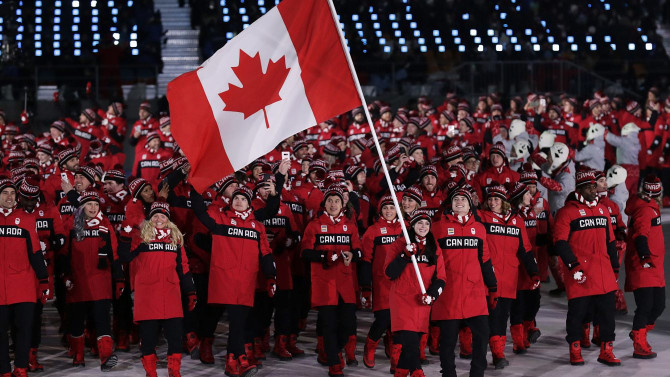
Track and field isn't the only sport scrambling to qualify amid Canada's COVID-19 protocols. Canada promised to send perhaps the strongest men's basketball team to Tokyo last year, when the Olympics were originally supposed to take place. Now, the compacted NBA season conflicts with the Olympic qualifying tournament in June in Victoria.
Canada's boxing team is in quarantine less than three months from a qualifying event in Argentina after a team member tested positive for the coronavirus earlier this week.
Athletics Canada had hoped to send a team of 60-plus athletes to Tokyo, but just 24 have achieved qualifying standards, largely due to the inability to compete.
Before the pandemic, World Athletics had implemented new qualifying rules that require athletes to either achieve one very difficult standard — a fast time, a long throw, etc. — to earn an automatic berth, or be ranked in the top 48 in a complicated points system calculated over an athlete's five best major competitions.
Athletics Canada is lobbying for an edit to the stringent qualifying rules to allow for a more even playing field in Tokyo.
"It's just so unfair for Canadians at the moment, it's terrible," said Simon Nathan, Athletics Canada's high performance director. "The worry is: if I don't travel, then I can't qualify. If I do travel, there are places that are more risky [for the pandemic] than Canada. And then I come home and have to sit on my bum, literally not allowed to do anything for two weeks while my rivals are still training, they're still competing.
"So it's stress coming from every direction."
The deadline to register an athlete in any sport for the Tokyo Olympics is July 5, which is less than five months away. And the pandemic is severely impeding international and domestic competitions that ultimately determine the expected 400 to 40 athletes representing Canada in Tokyo.
"We're going to see a lot of last-minute qualification around Tokyo," Canadian Olympic Committee chief sport officer Eric Myles said.
"There will be hard stories, heartbreaking stories for sure. There are so many moving parts. We are trying as much as possible to prevent unfairness issues, but it's not simple. The virus is not making it simple."
Canada as a country has gained 99 event entries into Tokyo, which represents 239 athletes, according to Myles.
Of Canada's 35 national summer sport organizations, 28 are still in the process of choosing their Olympic athletes.
"The challenges are massive," said Own The Podium summer sport director Mark Hahto.
"It stems primarily from the cancellations, the uncertainties, the postponements of so many events on the summer calendar."
(02/27/2021) ⚡AMPby Lori Ewing, Donna Spencer
Tokyo 2020 Olympic Games
Fifty-six years after having organized the Olympic Games, the Japanese capital will be hosting a Summer edition for the second time, originally scheduled from July 24 to August 9, 2020, the games were postponed due to coronavirus outbreak, the postponed Tokyo Olympics will be held from July 23 to August 8 in 2021, according to the International Olympic Committee decision. ...
more...‘No Cheering’: Tokyo Olympic Organizers Release Guidelines For Torch Relay
The traditional prelude to the Olympics, the torch relay, will look – and sound – a bit different this year, as spectators are asked to avoid crowds and dampen their cheers when the torch passes by them.
Members of the Tokyo Organizing Committee announced a series of pandemic measures on Thursday, including leaving the option open for suspending portions of the relay should health officials deem it necessary.

"No shouting, no cheering. Please cheer by clapping your hands and maintain appropriate distance in case there is crowding," Yukihiko Nunomura, the vice director general of the committee, said at a press conference Thursday, according to The Associated Press.
The subdued torch relay is set to begin March 25 in Fukushima and travel through Japan until July 23, the day of the Games' Opening Ceremony. The Olympics were delayed by a year because of the coronavirus pandemic.
About 10,000 torchbearers and others expected to take part in the torch relay, the AP added.
The organizing committee also released detailed safety protocols including what it calls avoidance of the "3C's:" closed spaces, crowded places, and close-contact settings.
It also asked that spectators not watch from the roadside if they feel sick, and encouraged them to wear facial coverings.
Officials are also allowing task forces from local governments to enforce "suspension of the Torch Relay on public roads and/or the hosting of only a Torch lighting ceremony with no spectators," if such safety protocols are required.
Additionally, torchbearers are asked to follow safety protocols in the lead up to their portion of the relay.
In the two weeks prior to their leg, according to official guidelines, "torchbearers will be asked to refrain from activities that may involve a risk of COVID-19 infection, such as eating out or going to crowded places."
In the 14 days prior to their portion of the relay, torchbearers must also submit a daily health checklist. On the day of their leg of the relay, if the torchbearers feel sick or suspect they are infected, they must immediately report it to the organizing committee staff.
If they have a temperature above 37.5 degrees Celsius (99.5 degrees Fahrenheit) they may be asked to refrain from running, according to the guidelines.
The embattled Tokyo Olympic Games have faced a number of headwinds besides the coronavirus.
Earlier this month, Japan chose Seiko Hashimoto, one of the nation's most prominent female politicians, to step in as its new organizing executive.
Her predecessor Yoshiro Mori resigned on Feb. 12 after making sexist remarks saying that women talk to much in meetings.
Following his resignation, International Olympic Committee President Thomas Bach issued a statement saying he respects Mori's decision to step down, and looks forward to working with his successor.
Despite the ongoing pandemic, organizers are pushing forward with planning the event, a daunting task that is scheduled to bring thousands of athletes, media and volunteers from around the world.
Few people in Japan are likely to be vaccinated by the time the Games open, The Guardian reported, increasing fears the event could trigger a new round of outbreaks there.
(02/27/2021) ⚡AMPKibiwott Kandie shine at Athletics Kenya meet
World Half Marathon Kibiwott Kandie started his Olympic Games preparation on a high note by winning his first track competition at the opening leg of the Athletics Kenya (AK) track and field weekend meeting at Nyayo Stadium on Saturday.
Kandie’s interest in the men’s 10,000m event will give Kenya hope at an event; it last won a gold medal at the Olympics in Mexico in 1968 through Naftali Temu.

The fast-rising Kandie, 24 who picked running in 2013 while still a student at Cheberen Secondary School in Baringo County, calculated his move well to easily win the men’s 10,000m in 28:28.0 to put his Olympics dream on track.
Gilbert Kimunyan, who led for much of the race, settled for the silver position in 28:37.7 ahead of Peter Mwaniki who clocked 28:38.7 in third place.

“Now that Africa Cross Country has been postponed to a later date, I thought it was wise for me to come and gauge myself in track because I’m keen on representing and winning a medal for Kenya in Tokyo,” said Kandie who finished second at the National Cross Country Championships two weeks ago.
Kandie who made his breakthrough at the 2020 World Half Marathon in Gdynia, Poland before winning the 2020 Valencia Half Marathon, in a world record time of 57:32 believes teamwork in Tokyo will enable them to deliver the elusive gold medal at the Olympics in Tokyo.
(02/27/2021) ⚡AMPby Dennis Okeyo
Tokyo 2020 Olympic Games
Fifty-six years after having organized the Olympic Games, the Japanese capital will be hosting a Summer edition for the second time, originally scheduled from July 24 to August 9, 2020, the games were postponed due to coronavirus outbreak, the postponed Tokyo Olympics will be held from July 23 to August 8 in 2021, according to the International Olympic Committee decision. ...
more...Galen Rupp: “I want to win [the Olympic marathon]. There’s no ifs, ands or buts about it.â€
Yesterday, Kipyego mentioned her goal was to medal in Sapporo in August. Rupp went one step further.
“I want to win,” Rupp said. “There’s no ifs, ands or buts about it. That’s definitely my goal. I’ve gotten a silver medal in London, a bronze medal in Rio, and so hopefully I’ll be shooting for gold for sure in Tokyo. I know it’s not going to be an easy ask. It will be a tall task. There’s obviously a tremendous amount of great marathoners out there right now and the Olympics are always going to be a tough test. But I thrive on competition and I can’t wait to have the opportunity to go in there with the best in the world and really see what I can do.”

Rupp said that while gold is his aim, he wouldn’t be disappointed if he fails to win — indeed, in the last 113 years, only one American man, Frank Shorter, has accomplished the feat. Not all of his fellow Olympians shared that perspective, however.
“I’m going to be disappointed if you don’t win,” Tuliamuk joked. “No pressure.”
The one-year delay has helped Rupp more than most. Even before the pandemic, Rupp spent much of his time in his Portland home, which is equipped with a device that strips oxygen from the air to mimic the effects of high elevation. Staying home was not much of a challenge, though it did limit the amount his coach Mike Smith could visit him to oversee workouts.
From a running perspective, the extra year has given Rupp more time to adjust to Smith’s system. Under previous coach Alberto Salazar — whose appeal of his four-year ban for anti-doping violations will be heard by the Court of Arbitration for Sport next month — Rupp would hit each rep of his interval sessions “as hard as [he] could” and take a full rest before tackling the next one. Until he trained under Smith, Rupp had never run a fartlek. When Smith, the coach at Northern Arizona University, began working with Rupp in December 2019, he asked Rupp to turn over his previous training logs. The first thing he told Rupp after examining them?
“He didn’t think I was training much like a marathoner,” Rupp says. “There was still so much track stuff that I was doing.”
Now Rupp is growing accustomed to Smith’s system. He feels he works just as hard in practice, but the workouts are different: slower, with more reps and less recovery.
“Having some new stimulus, having some different workouts that I’ve been doing, it’s been a challenge, but it’s been really fun for me at the same time,” Rupp said. “…I couldn’t be happier with the way that things have worked out and where things are going.”
The delay has also allowed Rupp’s body extra time to heal. The Trials was just the second race Rupp finished following Achilles surgery in October 2018, and though Rupp estimated he was 90-95% healthy by the time of the Trials, he had not been able to string together a significant amount of pain-free running. Rupp admitted that, even after the Trials, “it hasn’t always been pretty,” but he feels he’s in a better spot now than he was a year ago.
“I’m optimistic about where I’m at physically and I couldn’t have said that over the last year,” Rupp said. “But I was really pleased with the way the Trials went and I think that I’ve grown a lot since then.”
The one annoying thing for Rupp has been the inability to race. Since the Trials, he has run just one: 60:22 for a low-key half marathon in October on an Oregon bike path. In years past, Rupp could at least gauge his fitness by comparing workouts splits to what he’d done before, but with a whole new set of workouts under Smith, even that is impossible. So Rupp is itching to race, but exactly where and when that will happen remains uncertain.
Rupp was hoping to do a marathon this month, but that proved untenable due to COVID travel restrictions. He is considering racing some shorter distances in the leadup to the Games. Given the flat course in Sapporo, Rupp believes it is important to improve is speed, which has been a recent emphasis in training.
"We want to get back into the swing of racing again,” Rupp said. “I think it’s important.”
(02/27/2021) ⚡AMPby Let’s Run







